INSIDE
GLOBAL ENERGY OPPORTUNITIES

KEY INDUSTRY
DECISION-MAKERS
MAJOR ENERGY PROJECTS
CONTRACTS TO BE AWARDED

UPDATES & EVENTS
INDUSTRY LEADERS
INNOVATION
FUTURE BUILDING
OIL INDUSTRY
PROGRESS
HYDROGEN & AMMONIA
WIND ENERGY
BIOFUELS
SUSTAINABLE COMPANIES
to the new energy mix, where sustainable innovation is delivered by Our Great Minds!
GREAT MINDS SUMMER EDITION 2023
Welcome
OUR





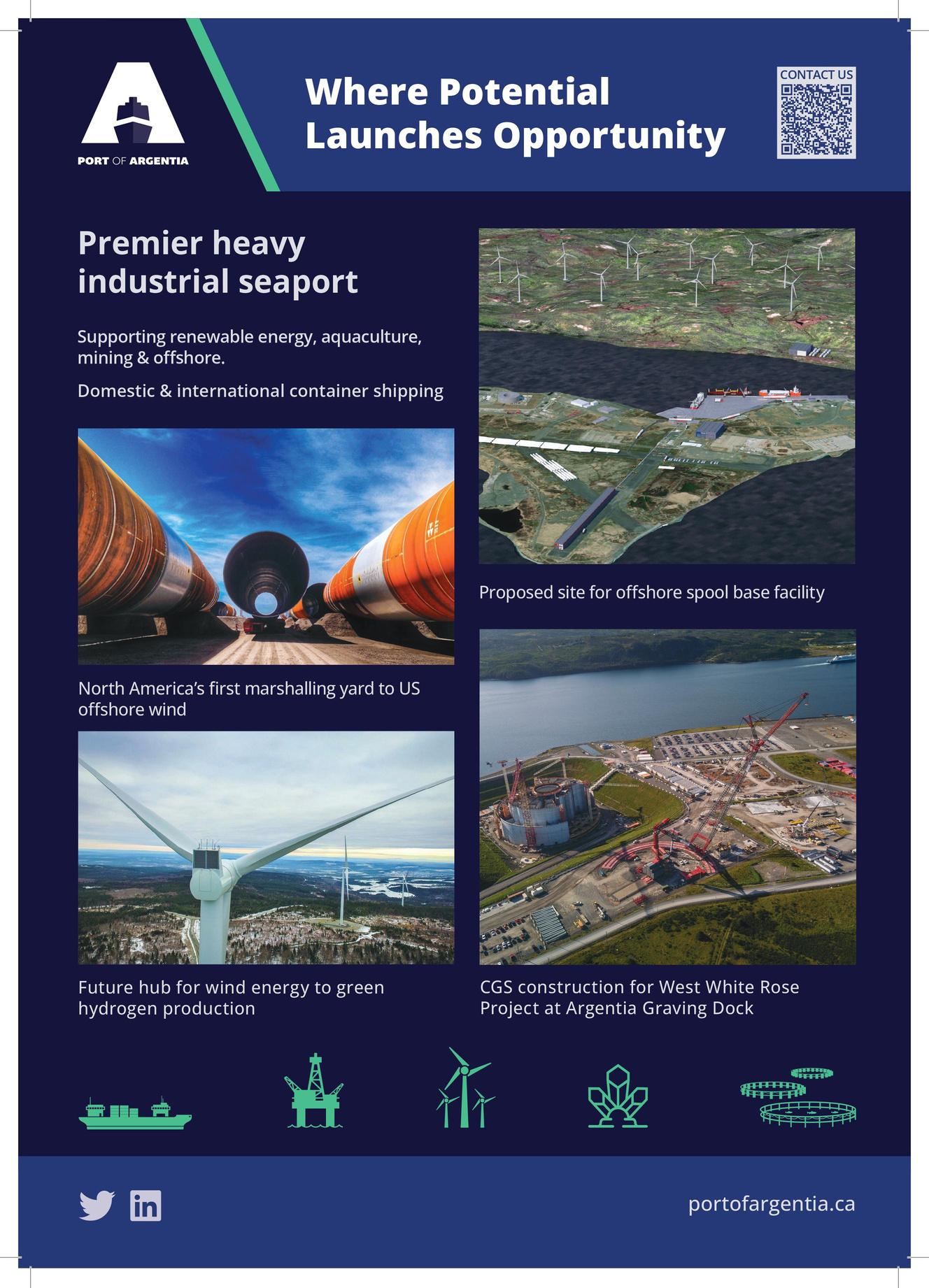
M a s t h e a d
FOUNDER, PUBLISHER & EDITOR-IN-CHIEF
Tina Olivero - tina@theogm com
EXECUTIVE DIRECTOR

Ella Gardiola - ella@theogm com
DIGITAL MEDIA ARCHITECTS
Ella Gardiola
Tina Olivero
BUSINESS DEVELOPMENT
Kit Estrera - kit@theogm com
WEBSITE INNOVATION
Puneet Sharma
Chetna Aurora
SOURCES & IMAGES CREDITS:
Trades NL, Borque Industrial, Chevron, Rideout Tool, Proteum Energy, ABB, FortisBC, Eindhoven Team, The Klein Vision, Edmonton International Airport, Tesla, Volterra Technology, Patagonia, Sea Cleaners, LetsPlantTrees, DETROIT HIVES ORGANIZATION, The Newfoundland Embassy, Ocean Power Technologies, Carnegie Clean Energy, CorPower Ocean, AW-Energy, Eco Wave Power, Nova Innovation, Orbital Marine Power, Minesto, Lilium, Joby Aviation, Volocopter, EHang, Airbus, Beta Technologies, Terrafugia, Jaunt Air Mobility, Vertical Aerospace, Karma Automotive, Canadian Association of Petroleum Producers (CAPP), Equinor, Port of Rotterdam, Pattern Energy, Port of Argentia, Natural Resources Canada, WorldExcellence, IEA, OAS, Norwegian Petroleum Directorate, CNBC, Climate Trade, UN, Ace Space, World Population Review, Eco Canada, Energy Safety Canada
Advertising Directory
PAGE REFERENCE 2
4
5
Eco
Surerus
Canada 3
Murphy
Oil
Sands Conference & Trade Show
Bourque Industrial
Port
Advertise
Us: TheOGM com
Canadian Red
Carbon
Planet Love: TheOGM com
Trades NL 21. Leonardo Helicopters 45 Eastern Safety Services 49 Supply Change Conference & Expo 71 Planet Love: TheOGM com 93 Planet Love: TheOGM com 103. Energy Safety Canada 125. Advertise With The OGM 133 Call Tools 137 Digital Assets: DigitalCollateral ca 143 Content Development: DigitalCollateral ca 149 Call Tools 155. Social Media: DigitalCollateral.ca 175. Digital Media: DigitalCollateral.ca
Planet Love: TheOGM com 206 Xtramile Cleaning Services 207 Copywriting: DigitalCollateral ca 208 Publisher's Message
6. Score Group 7.
of Argentia 9
With
10
Cross 11
Capture Canada 17
20.
189
8 TheOGM com

Hello Oil & Gas Magazine readers,
Out-of-control wildfires are causing evacuations and destruction across much of Alberta. Numerous communities and tens of thousands of people are on evacuation orders or alerts.
The Canadian Red Cross is working with governments, Indigenous leadership, and local municipalities to help those impacted by the fires. To date, thousands of relief supplies such as cots, blankets, pillows, and hygiene kits have been sent to locations throughout the impacted region. The Canadian Red Cross stands ready to provide additional support as the full extent of needs becomes known.
The Government of Canada and the Government of Alberta will match every dollar donated to the Canadian Red Cross 2023 Alberta Fires Appeal from May 8 to June 3, 2023. This means that every $1 donated will become $3 to support those affected by the wildfires.


You can help people impacted by the wildfires by giving here: https://www.redcross.ca/ABFires23/OGM
Thank you for your generosity.


tableofcontents OIL & GAS FEATURE STORIES 22 Canada: The Key To The World’s Energy Crisis 26 Oil and Gas are CRITICAL to a Sustainable New Energy World 32 Oil & Gas: The Foundation Of The Canadian Economy 36 Norway’s Development Has Key Strategies For Newfoundland's Sustainable Energy Future 46 Newfoundland: One Answer To The Global Energy Crisis with Water, Land, Oil, Gas & Wind 50 Equinor’s Energy Transition Plan is Launched While Market Cap Declined What does this mean for Bay du Nord? 54 BOURQUE INDUSTRIAL: Atlantic Canadian Company Succeeds With “Out of The Box” Creativity 56 ECO Canada Wage Funding: The Catalyst for Environmental Industry Success 58 Chevron voluntarily relinquishes offshore permits on Canada’s west coast to preserve wildlife area

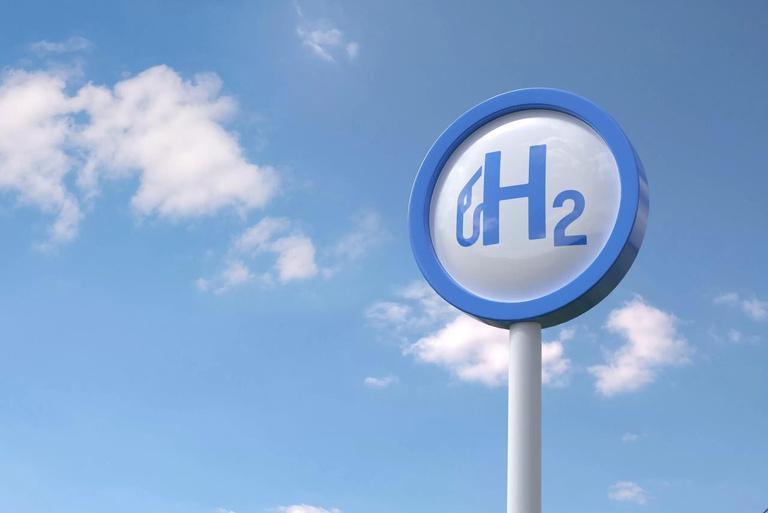









HYDROGEN FEATURE STORIES 68 What is Hydrogen Energy? 72 Proteum Energy: Leadership Wisdom For A Sustainable Future 76 Understanding GREEN HYDROGEN: Gas, Liquid and Solid 80 Newfoundland & Rotterdam: Working Together to Mitigate Europe’s Energy Crisis 84 Canada and Germany: The Hydrogen Alliance That Will Change The Course Of History tableofcontents continued... 88 Pattern Energy in Argentia, Newfoundland: One of the largest renewable energy investments in Canadian history 94 ABB: Supporting project operators in the world’s first dynamic green Power-to-Ammonia plant 60 RIDEOUT LEGACY: Leaders in innovation, industrial supply








100 The World’s Greenest Countries 106 How much POWER (MW), do the world’s greatest renewable energy projects make? 112 Free tools and training to support the development of Canada’s energy workforce RENEWABLES INNOVATION 130 Tidal Wave Energy Is Emerging Globally: Find Out Who’s Leading the Way 134 SOLAR GLAMPING: Camping With a Solar Vehicle – It’s The New Thing! 140 FLYING CARS – Not Only Are They Real, But They Are Our REALITY From Here Forward tableofcontents 114 FortisBC: How Renewable Natural Gas is Revolutionizing the Low-Carbon Future of British Columbia, Canada 122 Wave Energy: Top Companies Harnessing the Power of Wave Innovation








170 Think Like Yvon Chouinard: Prove that business can help save the planet and also be profitable 176 SOLAR-POWERED MANTA: Plastic Garbage Collecting Ship 180 Publisher Tina Olivero Says, “Stop Using Paper, Start Planting Trees ” CLIMATE CONSCIOUS 162 VOLTERRA TECHNOLOGY: Battery X Lasts 25 Years 146 Edmonton International Airport (YEG): Championing innovation for aviation sustainability 152 Tesla Changed The World Forever Here’s How 158 eVTOL Aircraft About to Revolutionize Air Travel tableofcontents INNOVATION continued...








192 Luxembourg’s Economic Triumph: The Rise of a Global Powerhouse 200 The Top Climate Change Shows on Netflix CULTURE 186 BEE HIVE ACTION: From Vacant Lots to Honey Bee Plots 190 THE WALKING FOREST How 1000 volunteers created a mobile greener city 204 The Best White Russian Ever: It’s made with ice cream Boom! tableofcontents


CROSS THE BRIDGE TO THE NEW ENERGY WORLD WITH US PLANET LOVE - THEOGM.COM
Oil&Gas





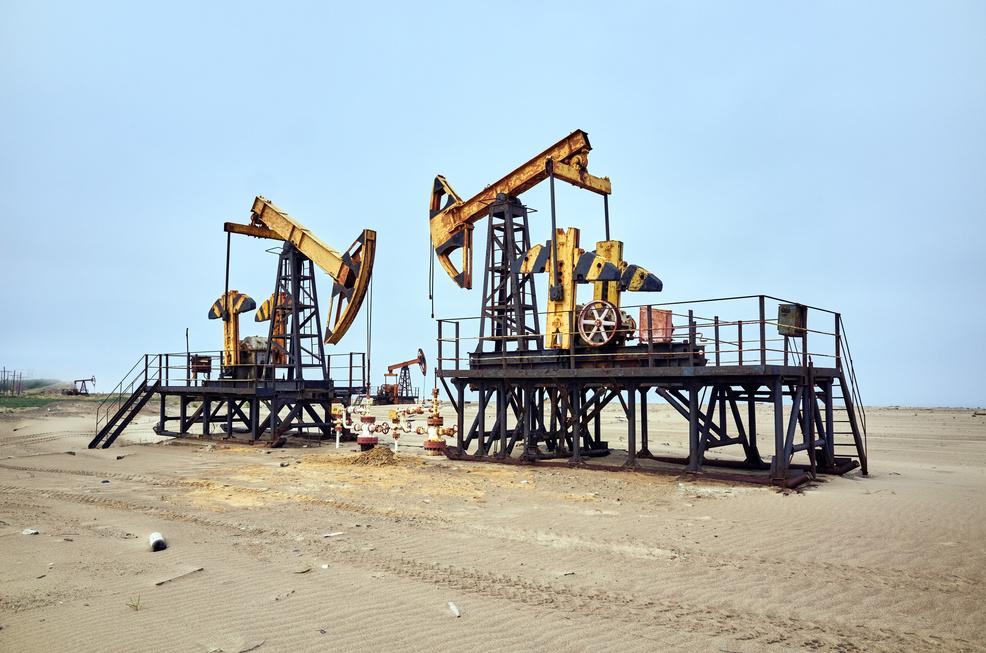


Fueling the new energy future













TradesNL.com
EXTENDING THE REACH

Offshore missions demand exceptional capability – the AW189 sets the benchmark In a rapidly evolving energy market comprising fossils and renewable energies, it enables operators to tackle challenging long-range, day/night, and deep water missions in all weather conditions With a class-leading cabin capable of carrying up to 16 passengers fully IOGP compliant, the AW189 meets or exceeds all current safety standards and is the first helicopter certified with HTAWS offshore mode, strengthening operational safety CO2 emissions are minimised versus payload available and usage of Sustainable Aviation Fuels is approved ensuring maximum environmental benefits

leonardo

com
Canada: The Key To The World’s Energy Crisis


At the Global Energy Show in Calgary, the sentiments heard time and time again, by the world’s top energy authorities, is that the Ukraine war is deeply impacting not only our global energy supply but our ability to focus on climate change.
Increased levels of geopolitical conflict have unfortunately made the energy transition more fragmented, driving energy costs higher in many regions of the world.
22. TheOGM.com
Additionally, positive developments in renewable energy, in many cases, are offset by the negative consequences of energy shortages, cascading into global economies.
With Russian gas supplies to Europe, now close to zero, there is an extreme gas shortage in the region. Germany, Austria, and Italy, which were historically dependent on Russian gas, are dramatically impacted and are forced to find other avenues to acquire reliable, geopolitically stable, clean, energy supplies.
Russia’s attack on Ukraine has raised the risk of violent conflict not only in Ukraine but around the world. Compounding sources of energy insecurity, which are already under pressure because of climate change, exacerbate food insecurity, largescale human displacement, and the sort of inflationary price spikes that can create social unrest.
Canada: The Key To Global Energy Demand
Countries like Canada will be an imperative solution to political volatility and world energy shortages. Canada is a superpower in the natural resources arena Canada is well positioned to ship energy resources from the western seaboard of Vancouver to Asia, and from the Eastern seaboard of Newfoundland and Nova Scotia to Europe.
61% – Hydro
15% – Nuclear
5% – Wind
2% – Biomass & Solar
Canada: A Long History With Hydrogen
Uncommonly known by the general public is that Hydrogen has long been produced in Canada for decades Most hydrogen in Canada is produced by the chemical industry from fossil fuels (53%) and the oil and gas sector (47%). Geographically, most hydrogen is produced in Western Canada (76%), followed by Central Canada (17%) and Atlantic Canada (7%)
Canada already has several green hydrogen projects installed or under construction in Quebec and British Columbia The country is ready to transition to Hydrogen from wind as the next major play.
Newfoundland: Poised To Be A World Leader In Hydrogen
Because of Europe’s dire need for renewable energy, Newfoundland is well-positioned to be a primary supplier of wind hydrogen energy
Newfoundland is one of the top 5 windiest places on earth, coupled with its proximity to Europe, which will pave the way for renewable Wind/Hydrogen/Ammonia developments that will develop at an exponential rate
Canada: One Of The World’s Cleanest Energy Grids
Unknown to most of the general public, but commonly known in the energy industry, Canada has one of the world’s cleanest energy grids. 83 percent of Canada’s energy comes from clean sources.
With exciting wind energy mega-projects in the pipeline for development the future of the province is very exciting. For example, Newfoundland just signed off on Canada’s highest renewable investment to date.
TheOGM com 23
Pattern Energy has invested $ 4 billion US at the Port of Argentia in Newfoundland, to develop a green hydrogen project. The project will use renewable electricity to produce green hydrogen and convert it into carbon-free ammonia, which can be safely stored and shipped to end-user customers around the world, particularly in Europe.
Necessity: The Mother of Canada’s Intervention
High fossil fuel prices, energy security concerns, and the urgency of climate change underscore the pressing need to move faster to a clean energy world Canada is ready for the opportunities to transition responsibly into green hydrogen and avail of the economic benefits that come with that adaptation.
As the world starts to wake up to the reality that we must focus on decarbonization and emissions reduction, rather than demonizing energy sources, the countries with the greatest natural resources will save the day. Canada will save the day!
Canada – 4th In The World For The Most Valuable Natural Resources
Canada’s natural resources are unprecedented Canada ranks number four in the world for most valuable natural resources. Russia is number one in the world for natural resources. Given Russia’s geopolitical instability, the short-term picture for global energy supply is virtually reduced to zero Next to Russia, natural resource value ranks the USA as the number two and Saudi Arabia as the number three. Then comes Canada.
Energy buyers and consumers around the globe will evaluate carefully where they can gain energy sources based on factors such as:
1. Highest environmental standards
2 Geopolitical stability
3. Energy price
4. Proximity to market
5. Economic factors
6 Sustainable clean energy factors
7 Cultural factors
8. Indigenous people and partnerships
9. Inclusion & diversity
10. Championing human rights
11 Responsible energy development
12. Renewable energy transition and more…
Canada ticks all the boxes It is one of the most politically stable countries in the world It has the 3rd largest crude oil reserves in the world. Crude oil is the world’s main source of fuel and the largest overall source of primary energy. Canada’s hydrogen potential could easily become a world leader and contributor as Canada can produce hydrogen from a diversified mix of sources, including renewable energy. Newfoundland looks like the next big hot spot for wind/hydrogen energy Overall Canada is a world leader and superpower when it comes to natural resources.
Canada is the key to the energy crisis and the fragmented climate change efforts as a result of the Ukraine war. Canada has nothing but exciting times ahead.
Evaluating who to do business with globally depends on an array of factors.
Get revitalized, globalize, and energized Invest in Canada. It will pay off!
24. TheOGM.com
Energy Transition







Oil and Gas are CRITICAL to a Sustainable New Energy World
Climate change is one of the most significant challenges facing the world today.
The scientific consensus is that human activities, primarily burning fossil fuels, has warmed Earth’s surface and ocean basins, causing havoc in the world’s delicate environmental system
Our energy appetite, which currently utilizes fossil fuels such as coal, oil, and gas, is the primary contributor to global climate change, accounting for over 75% of global greenhouse gas emissions.

26. TheOGM.com
Burning fossil fuels releases large amounts of carbon dioxide, a greenhouse gas, into the air, which traps heat in our atmosphere and causes global warming. As a result, the average global temperature has already increased by 1°C, and warming above 1 5°C risks further sea level rise, extreme weather, biodiversity loss, and species extinction, as well as food scarcity, worsening health, and poverty for millions of people worldwide
The impact of climate change also includes changes in temperature and precipitation patterns, rising sea levels, shrinking mountain glaciers, changes in flower and plant blooming times, and wildfires.
To combat climate change, we need to reduce our carbon footprint and support sustainable new energy initiatives This means a dramatic change in the world’s top polluting industries such as fossil fuels, agriculture, fashion, transport, and construction. As well, we need to ensure the world’s top pollutant emitters are coming on board with responsible low emissions solutions. Not all countries are equal when it comes to carbon emissions. The top ten carbon-emitting countries include China, the United States, India, Russia, Japan, Iran, Germany, South Korea, Saudi Arabia, and Indonesia.
SHOULD WE STOP USING FOSSIL FUELS?
Knowing the threat of climate change, we have an immediate and fearful reaction from the world’s people to, “stop using fossil fuels right now”. What the general public doesn’t realize is the big energy picture Eliminating the immediate use of fossil fuels has a corresponding negative impact on the world that is as bad or worse than climate change.
REMEMBERING HOW WE GOT HERE
Fossil fuels are responsible for increased economic prosperity, education, food supply, social services, health care, a revitalized manufacturing sector, the improvement of millions of lives through direct and indirect employment and lower energy costs, new sources of government revenues, and strengthened energy security for all nations
Fossil fuels have been responsible for a higher standard of living for all. So unless we give up our cars, live in the woods, live off the land, and give up all of the amenities we enjoy today like cell phones, computers, abundant food sources, etc., then we must accept that the progress of mankind is deeply dependent on fossil fuels for at least 20-30 years
THE IMPACT OF NOT USING FOSSIL FUELS RIGHT NOW
Not using oil and gas would have an immediate and significant global impact on poverty, food supply, global products, machinery, plastics, and other aspects of the economy.
There has to be a responsible transition from fossil fuels to renewables to mitigate further risks, which takes time.
It took 100 years for oil and gas to be integrated into society, it will take at least 25 years to remove it responsibly, to ensure there are no dire global consequences, incurred by moving too fast.
WHY DO WE USE FOSSIL FUELS?
We need fossil fuels to literally fuel our existence.
TheOGM com 27
According to the UN, the largest carbon-emitting systems and processes that utilize fossil fuels include:
generating power
manufacturing goods cutting down forests utilizing transportation making things like cement, iron, steel, electronics, plastics, clothes, and other goods mining and other industrial processes operating machinery
manufacturing utilizing plastic transportation such as cars, trucks, ships, and planes
producing food
powering buildings
building and energizing cities and communities clearing land for agriculture
deforestation
powering buildings
utilizing electricity and power
What would the world look like if we cut out oil and gas and then cut out these carbon-emitting processes? My guess is, the world would come to a halt, much like that of Covid 19.
Is that really where we want to go?
HOW DO WE COMBAT CLIMATE CHANGE AND STILL USE FOSSIL FUELS?
That’s precisely why they are so effective and answering it If you want to know how to responsibly transition from fossil fuels to renewable, watch what the oil companies are competently doing. Study their energy transition plans Understand their vision and goals and you will find a very strategic, well-thought-out development plan for the new energy-sustainable world.
Oil and gas companies are working to transition into the renewable energy space by taking direct a decisive action to succeed in the energy transition in the following ways:
Energy Security
Oil and gas companies provide a reliable source of energy that is essential for world energy demand, economic growth, and development Oil work to ensure we have the energy to power transportation, heat homes/buildings, and generate electricity.
Without oil and gas, many countries would be unable to meet their energy needs, leading to economic instability, social unrest, hunger, poverty, illness, homelessness, and more.
Transition Fuel
Oil and gas can serve as a transition fuel as we move towards a more sustainable future.
That’s a question the world’s greatest minds work on every day.
In essence, oil and gas are essential to a sustainable future Oil and gas companies, operators, major contractors, and suppliers consider this question daily.
Oil and gas are the fuels used to generate electricity while renewable energy sources are developed and responsibly integrated into the new energy mix.
Innovation
The oil and gas industry has a successful history of implementing innovation and technological solutions to sustain our progress.
28. TheOGM.com
Oil and gas companies’ expertise can be leveraged to develop new technologies and solutions that can help to reduce greenhouse gas emissions and promote sustainability.
Carbon Capture & Storage
Carbon capture and storage (CCS) is used by oil and gas companies to capture carbon dioxide emissions from power plants and industrial facilities and store them underground, thereby reducing carbon emissions into the atmosphere
Carbon capture and storage will be critical in the new energy transition equation.
Economic Benefits
The oil and gas industry provides significant economic benefits, including royalties, job creation, tax revenue, and investment in local communities and more
Research
Oil and gas companies are world leaders in funding research into new technologies and solutions that can help to reduce greenhouse gas emissions and promote sustainability.
Environmental Stewardship

The oil and gas industry is committed to environmental stewardship and reducing its environmental impact. Many companies have implemented policies and initiatives to reduce greenhouse gas emissions, promote energy efficiency, and protect the environment.
Many oil and gas companies have set stringent targets to reduce their greenhouse gas emissions, invest in renewable energy, and promote sustainable transportation.

TheOGM com 29
Integrating Renewable Energy
Oil and gas companies are integrating renewable energy into their operations to reduce their carbon footprint. For example, they use solar or wind power to generate electricity.
The Use of Biogas & Geothermal
Biogas, which is produced from organic waste, is being used as a fuel source to reduce the carbon footprint of oil and gas operations
Geothermal energy is used to power oil and gas operations, reducing the need for fossil fuels.
Energy Efficiency:
Oil and gas companies are using energy efficiency measures, such as improving leak detection and repair, installing vapor-recovery units, or using combined heat and power, can help to reduce greenhouse gas emissions
Decreasing Freshwater Usage:
Oil and gas companies are reducing their carbon footprint by decreasing freshwater usage For example, they use recycled water for hydraulic fracturing. These recycling efforts reduce their carbon footprint.
Improving the efficiency of ongoing operational processes, oil and gas companies produce the same amount but with reduced costs and energy expenditure, leading to a reduction in greenhouse gas emissions.
These and many other emerging emissionsreducing technologies are emerging. Every company is on the hunt for carbon-reducing innovations that will save the day Here lies the $trillion opportunity for you and your company
For countries like Canada, which are natural resources rich, the new energy evolution, means prosperity ahead Canada is well positioned to supply its own nation with energy and supply those less fortunate in terms of land, water, and natural resources, with their much-needed energy.
THE NEW ENERGY MIX
What we know for sure is that oil and gas will fuel the incoming renewable energy economy.
Pitting one fuel source against another only divides us and deflects from the critical development of the new energy mix.
Used Oil Recycling
More companies are utilizing small-scale, wasteoil,micro-refinery units that transform used oil into diesel fuel. This approach yields fuel for ongoing operations and is a relatively inexpensive alternative to more traditional oil disposal methods.
Streamlining and Improving Processes
IIOT, analytics, automation, reserve replacement and enhancement capabilities, and emerging artificial intelligence programs all assist in finding and eliminating operational inefficiencies.
This new energy mix is imperative to meet world energy demand, mitigate energy security threats and ensure our world is fed, cared for, and prosperous.
Success looks like this:
A dramatic reduction in carbon emissions
A powerful new energy mix
Countries working together for a global renewable energy economy
30. TheOGM.com
Oil & Gas: The Foundation Of The Canadian Economy
LISA BAITON President & CEO of CAPP

Oil & Gas: The Foundation Of The Canadian Economy

At the recent EnergyNL Conference in St John’s, the room was buzzing with excitement about the oil and gas industry rebounding after Covid19, and the opportunities that are emerging in the new energy sector
Lisa Baiton, President & CEO of the Canadian Association of Petroleum Producers (CAPP), took the stage at the conference and began her address by highlighting the global energy crisis, illustrating its impact on energy worldwide.

Lisa said, “The year 2022 will be remembered for its global energy disruption The energy crisis in Europe, with shortages of natural gas and oil, is very far from over and continues to pose geopolitical and economic threats. And, it has spread across the globe it’s not just Europe Russia’s invasion of Ukraine has brought the global energy security and affordability crisis to the doorsteps of Canadians. The world is undergoing a historical transformation that will impact every country and virtually every society in existence today. This global shift is at the scale of the industrial revolution and is ushering a new era, redefining global trading relationships and geopolitics ”
Lisa’s message resonated deeply, as we have all felt the cumulative effects of this energy disruption, with rising costs affecting our everyday lives; from groceries to home heating to supply chain shortages. The world, Lisa explains, “is undergoing a transformative shift of historical proportions. This shift is comparable to the industrial revolution and redefines global trading relationships and geopolitics.”
At the heart of these fast-paced changes lies the resource that moves the world energy
CANADA: Poised to be a stabilizing force for the energy crisis
Lisa conveyed, “The oil and gas industry has been the foundation of the Canadian economy. The upstream oil and gas sector contributed over $197 billion to Canada’s real GDP in 2021 and an average of $12 billion per year in revenue to governments from 2019 to 2021
The sector employs 450,000 Canadians in highskilled and high-paying jobs And, these employees come from all regions of Canada. Ours is a truly national industry. The industry is a long-term partner in Newfoundland and Labrador. Over the past 25 years, royalties from offshore production have reached more than $25 billion. Investment into the Province totals over $53 billion over that same period. These contributions to the provincial economy support thousands of jobs and help fund infrastructure, healthcare, schools, roads, and critical social programs.”
Recognizing the demand for oil and the urgency to supply oil to address the energy crisis, Lisa emphasizes that Canada has a unique opportunity to stabilize global energy security while lowering global emissions. The Newfoundland offshore energy industry is an opportunity waiting to happen With direct access via the province’s oceans, it bypasses the market access challenges faced by other regions in Canada. Furthermore, its geographical proximity to Europe positions it as a secure and trusted supplier of energy to address the ongoing energy security crisis.
Addressing climate concerns, Lisa acknowledges the industry’s commitment to reducing greenhouse gas emissions and investing in clean technology. Newfoundland and Labrador’s offshore industry already produces some of the lowest-emitting barrels of oil in the world Lisa points out, “Canada’s oil and gas producers view climate change as a serious issue that requires innovation and investment to reduce greenhouse gas emissions. Our industry is a significant investor in clean technology and we are one of the largest spenders on environmental protection – precisely because we understand the scale of this challenge.”
TheOGM com 33
The oil and gas industry in Canada has been focusing on lowering emissions for years and Canadian producers have been an important part of Canada’s global leadership in emissionsreducing innovations and technologies, Lisa points to the solution, “Game-changing technologies and investments will enable Canada’s oil and gas producers to continue reducing emissions. We will require a creative –whole-of-Canada – approach to ensure that our oil and gas sector remains competitive ”
Lisa stresses to Industry that, credible forecasts show oil and gas remaining a significant part of the global energy mix for decades to come, “With investment returning to the offshore industry globally, Newfoundland and Labrador has a golden opportunity within reach.

it will require a collective effort from industry and all levels of government to reimagine the province’s potential and seize this moment for the benefit of its people, all Canadians, and global partners seeking a secure and responsible energy supply ”
The province of Newfoundland and Labrador stands on the precipice of greatness, ready to unleash its full energy potential The combination of oil, gas, and wind will all be elements of the new energy mix that will lead us to a sustainable new energy future. The global investment community is watching closely as Newfoundland and Labrador cements its place as a global energy powerhouse, thereby securing its role as a catalyst for global energy security, economic prosperity, and environmental stewardship.
34. TheOGM.com
NORWAY: Learning From The Greats

Norway’s Development Has Key Strategies For Newfoundland's Sustainable Energy Future
 ByTinaOlivero
ByTinaOlivero
The true model of leadership is to emulate those already doing it.
The Government of Newfoundland and Labrador in Canada is reviewing its current offshore oil and gas assets, specifically focusing on its equity positions in the Hebron, Hibernia Southern Extension, and White Rose Extension projects. The goal is to determine their potential and structure the province’s asset portfolio for sound fiscal stewardship, high-quality services, and public-sector benefits.
36 TheOGM com
Given the offshore equivalency of Norway’s energy sector and Newfoundland’s energy potential, one cannot consider assets and opportunities without careful examination of Norway’s model of success. After all, the true measure of leadership is the ability to emulate those already doing it.

The key to Norway’s success was its nationalization of resources through the establishment of a state-owned company, strong regulatory frameworks, and long-term thinking. The Norwegian Petroleum Directorate ensured best practices, profitability, and efficient development of resources while reducing environmental impact. Investment in a sovereign wealth fund provided long-term financial stability and income for future generations.
To replicate Norway’s model, careful planning and implementation are required
The most common justification for Newfoundland not achieving success at the rate of Norway is that Newfoundland and Labrador is a province, while Norway is a country Underneath that statement reveals the true issue. Canada and its provinces are not aligned at the level that is necessary to become one of the greatest countries on earth Let’s start there

How can Newfoundland Replicate Norway's Success?
How can Newfoundland replicate Norway’s success? That is the “$billion” question. This article serves to provide a framework of operations for Norway’s energy development and

TheOGM com 37
reveals how the right strategy, equity in projects, and infrastructure led to profits and ultimately the world’s most successful investment fund, allowing Norway to be one of the richest countries, per capita, on the planet.
Nationalization of Resources
Norway nationalized its oil and gas resources and created a state-owned company, Statoil (formerly Statoil and StatoilHydro), to manage them Headquartered in Stavanger, Norway Equinor ensures Norway’s petroleum mandates are executed with precision and as a result, today Equinor is operating in 36 countries with additional investments in renewable energy.
The first step in Newfoundland reaching its full potential is to ensure it’s aligned with Canada and has the necessary organizations and funds to be primary equity stakeholders in its own energy projects, thereby ensuring Newfoundland and Labrador as well as Canada, are the primary beneficiaries at every step of the energy industries development. Without this, in place, full benefits are not able to transfer. Once again, think of this as the difference between being employed within a company and owning the company The owner of the company dictates the future and outcomes of the operation. Working at the company has marginal influence, benefits, and results.
North Sea Oil and Gas Fields Strong Regulatory Framework
The Norwegian government established a strong regulatory framework to ensure that oil and gas companies operating in the country met high standards for safety, environmental protection, and labor rights. This helped to build trust with the public and ensured that the resources were developed responsibly The Norwegian Petroleum Directorate was formed to ensure best practices and profitability.
While Newfoundland and Labrador’s regulatory framework is governed by CNLOPB, the province will often fail to adhere to the Atlantic Accord’s full framework, simply because the oil projects offshore Newfoundland are not governmentowned at a majority shareholder level Therefore, no matter how good the government and the Atlantic Accord are, there is no authentic way to ensure the majority of work is done in the province.
Newfoundland and Labrador have traditionally fore-fitted long-term success for the benefit of short-term jobs. Here is the first hurdle to overcome. This is a mindset and leadership issue, not an industry issue
Exploration and production offshore Newfoundland spur $billions of infrastructure contracts and work. This important work offers opportunities and builds infrastructure however the work often slips through the cracks with justifications like, “Newfoundland doesn’t have the facilities to deliver on such projects.” That justification is an easy reason to allow work to go outside the province, however, it is a direct result of not being primary stakeholders in the provinces’ energy projects.
If you owned a company and you could get the work done locally would you?
38. TheOGM.com
If you owned a company would you invest in the infrastructure of your business, so that you could utilize that solution over and over again as you scale your company?
As an employee, how invested are you in the profitability of the company, company sustainability, and long-term benefits of the company?
Get the Big Picture
As primary shareholders, the ability to influence work decisions and where it occurs is mitigated and therefore results are not diluted Not being the primary shareholders of oil projects offshore Newfoundland leaves the province with a limited scope of influence and outcomes.
Ultimately, justifications for work being done outside the province are a recipe for playing small and not maximizing profits and potential. It’s short-term thinking over long-term success and investment
Long-term Thinking
Norway took a long-term approach to developing its energy resources and established the Government Pension Fund Global (GPFG) to invest profits from the resources for future generations. This ensured that the country did not squander its wealth in the short term and had a sustainable financial strategy.
resources on behalf of the state, with a focus on ensuring that exploration, development, and production of oil and gas resources are conducted efficiently and in an environmentally responsible manner.
Here are some of the key steps that the NPD took to ensure that Norway’s oil and gas industry was profitable:
1965: The NPD is established as a government agency to manage Norway’s petroleum resources.
1972: The NPD is given regulatory authority over Norway’s offshore oil and gas industry.
1970s: The NPD begins promoting exploration of Norway’s offshore oil and gas reserves by providing geological and geophysical data to oil companies and offering financial incentives for exploration.
1980s: The NPD continues to promote the exploration and development of Norway’s offshore oil and gas resources, leading to the discovery of several large fields in the North Sea.
1990s: The NPD shifts its focus to maximizing recovery from existing oil and gas fields, implementing policies to encourage operators to invest in new technology and techniques to increase recovery rates
THE NORWEGIAN PETROLEUM DIRECTORATE
The Norwegian Petroleum Directorate (NPD) is responsible for managing Norway’s petroleum
2000s: The NPD implements regulations to reduce the environmental impact of offshore oil and gas production, including regulations related to drilling waste and emissions
TheOGM com 39
Overall, the NPD’s approach to ensuring profitability in Norway’s oil and gas industry has been based on being a primary shareholder in the majority of oil and gas projects, promoting efficient exploration and development of resources, maximizing recovery rates from existing fields, and implementing policies to reduce the environmental impact of production.
The NPD has also worked closely with industry stakeholders to establish a framework for collaborative decision-making on issues related to resource management and development. Together, these efforts have helped make Norway’s oil and gas industry one of the most profitable in the world.
Understanding Norway's Model of Development
Replicating Norway’s model of development for energy resources is a complex process that requires careful planning and implementation. While every country is unique, there are several key steps that can be taken to replicate Norway’s success in this area:
Establish a clear energy policy: A clear energy policy is essential to guide investment decisions and ensure a consistent approach to resource management. The policy should outline long-term goals for energy security, sustainability, and economic development.
take into account geological, geophysical, and environmental factors
Develop a regulatory framework: A regulatory framework that promotes responsible and sustainable resource development is essential to protect the environment and ensure public safety. This framework should include regulations for the exploration, production, and decommissioning of energy infrastructure
Establish a sovereign wealth fund: A sovereign wealth fund can help to manage the country’s energy revenues and ensure long-term financial stability. This fund should be managed transparently and independently to avoid corruption.
Build strong partnerships between industry and government: Collaborative partnerships between industry and government can help to ensure that investment decisions are made in a way that promotes longterm sustainability and balances the interests of all stakeholders.
Promote environmental protection: Environmental protection should be a top priority in energy development, and regulations should be in place to minimize the impact of oil spills, reduce greenhouse gas emissions, and promote biodiversity
Conduct a comprehensive resource assessment: A comprehensive assessment of the country’s energy resources is essential to identify areas with high potential for oil, gas, and renewable energy development This assessment should
Invest in renewable energy:
Investing in renewable energy sources like wind, solar, and hydropower can help to diversify the energy mix and reduce reliance on fossil fuels
40. TheOGM.com
Promote innovation and technology development:
Encouraging innovation and developing new technologies can help to increase the efficiency of resource extraction and maximize the value of energy resources
Develop a skilled workforce: Developing a skilled workforce is essential to ensure that the country has the human capital necessary to manage and develop its energy resources.
Encourage research and development: Encouraging research and development in areas like carbon capture and storage and advanced drilling techniques can help to increase the efficiency and sustainability of energy development
Foster international cooperation: Building strong relationships with other countries can help to promote knowledge sharing and collaboration in energy development
Ensure transparency and accountability: Transparency and accountability in energy development are essential to maintain public trust and avoid corruption This can be achieved through regular reporting and independent audits.
Consider the social and economic impacts of energy development: Energy development can have significant social and economic impacts, and these should be carefully considered in investment decisions. This includes impacts on local communities, indigenous peoples, and the broader economy
Develop infrastructure: Developing the necessary infrastructure, such as pipelines, ports, and storage facilities, is essential to support energy development and ensure the efficient transport of resources.
Encourage investment in the energy sector: Encouraging investment in the energy sector can help to promote growth and development, but it should be done in a way that is consistent with the country’s energy policy and regulatory framework.
Promote energy efficiency and conservation: Promoting energy efficiency and conservation can help to reduce energy consumption and mitigate the need for new energy development.
Ensure stakeholder engagement: Engaging with stakeholders, including local communities, indigenous peoples, and environmental groups, is essential to ensure that their interests are taken into account in energy development decisions
Develop a communication strategy: Developing a communication strategy to inform the public about energy development activities and engage them in the decision-making process can help to build support and maintain public trust.
Monitor and evaluate progress: Regular monitoring and evaluation of energy development activities are essential to ensure that they are consistent with the country’s energy policy and regulatory framework and that they are achieving the desired social, economic, and environmental outcomes.
TheOGM com 41
Continuously improve and adapt:
Energy development is an ongoing process, and it is important to continuously evaluate and improve the approach over time. This may involve adapting to changing market conditions, technological advances, or environmental factors
Overall, replicating Norway’s model of development for energy resources requires a comprehensive and collaborative approach that balances economic, social, and environmental factors. It is important to establish a clear energy policy, develop a strong regulatory framework, invest in renewable energy, promote innovation and technology development, and engage with stakeholders throughout the process.
While Newfoundland and Labrador have adopted many of these strategies for success, the missing piece is still equity and ownership Every single one of these development initiatives changes, based on being primary shareholders of the resource.
Being primary project shareholders and following this development model, countries like Canada can learn from Norway’s success and create a sustainable and profitable energy sector to secure their own future
Norway's Oil & Gas Production
The NPD’s resource classification system defines oil and gas resources as reserves once the operator has submitted a plan for development and operation (PDO) or decided to implement a measure to optimize recovery that does not require a PDO Discoveries are classified as fields once an approved development plan is available.
93 fields were in production at the year-end of 2022 In contrast, Offshore Newfoundland has
Norway's $Trillion Fund
Norway’s trillion-dollar fund, officially known as the Government Pension Fund Global (GPFG), was built primarily from the country’s oil and gas revenues. The fund was established in 1990 to manage Norway’s petroleum wealth and ensure long-term financial stability for the country
The fund is managed by Norges Bank Investment Management (NBIM), a branch of the Norwegian central bank NBIM invests the fund’s assets in a diversified portfolio of stocks, bonds, and real estate in countries around the world. The fund has strict ethical guidelines that prohibit investments in companies that engage in activities such as the production of nuclear weapons, tobacco, or severe environmental damage.
The fund has grown steadily over the years, and its size is a testament to Norway’s commitment to saving and investing its petroleum wealth for future generations. The fund has also benefited from Norway’s stable political and economic environment, as well as its reputation as a responsible investor.
It’s worth noting that Norway has been very disciplined in managing its oil and gas revenues A significant portion of the revenues is set aside in the fund, rather than being spent immediately.
42. TheOGM.com
This has helped Norway avoid the “ resource curse” that has plagued other countries that have relied heavily on natural resource exports and have failed to secure long-term gains from oil and gas projects.
Last year, Norway became Europe’s biggest supplier of natural gas and now covers 30% of the continent’s demand for gas. That revenue further supports the country’s $1 3 trillion sovereign wealth fund and provides the government with the ability to ramp up spending on renewables and support economic instability during downturns. Clearly, Norway has its bases covered.
By investing the fund’s assets in a diversified portfolio of assets, Norway has been able to generate substantial returns over the years, helping the fund grow to its current size Norway has the largest Sovereign Wealth fund in the world. This fund amounted to 1.275 Billion USD in 2020. That’s a lot of money for a country of 5,3 million inhabitants. The fund holds 1.4% of all of the world’s listed companies, In December 2021, the fund was worth about $250,000 per Norwegian citizen.
This is the formula for Norway’s extraordinary success
Will Canada Unite?
Will Canada invest in its provinces and have primary ownership in its recourses, thereby ensuring the long-term success of its citizens?
This is the ultimate question, not only for oil and gas but for the new incoming renewable energy projects such as Hydrogen
Our Canadian government has to be strong enough to bet on itself and its resources It has to follow a clear-cut plan of achievable success like Norway in order to ensure prosperity and sustainability long term. This is particularly important as our renewable resources come onstream.
It’s one thing to have a sustainable resource like Hydrogen and wind, to ensure we meet climate change targets, but without financial sustainability as well, we quickly realize it’s a never-ending rat-race of frustrations because of a lack of long-term results.
The Norwegian State Norway strategically established the principle that the state was to work toward having majority shares in its oil and gas projects With the majority of project shares, Equinor often became the lead operator in the oil and gas projects. This, in turn, influenced decisions to ensure contracts and jobs were kept local and the project benefitted Norwegian citizens from the resource.
This commitment fundamentally changed the course of Norway’s history It is the pivotal right move that changed every single decision thereafter. This is a testament that when we step up, things align and fall into place. Prosperous, courageous action begets opportunity and much higher results The key is to step up Step up every time and avail of the opportunities that courageous right action provides. Norway earned $50 billion from its direct ownership of oil and gas licenses last year which is more than five times the amount earned in a normal year, as the country became Europe’s biggest supplier of natural gas after Russia’s invasion of Ukraine.
TheOGM com 43
Another example displays Norway’s catch-net of benefits, as additional discoveries around the Norwegian Troll field, where Equinor had its second find of the year will deliver estimated volumes of 24 million and 84 million barrels of oil equivalent Norway becomes the primary beneficiary of these additional finds rather than the oil companies. With Norway in the driver’s seat of its energy resources, the destination was always profitable and sustainable long term
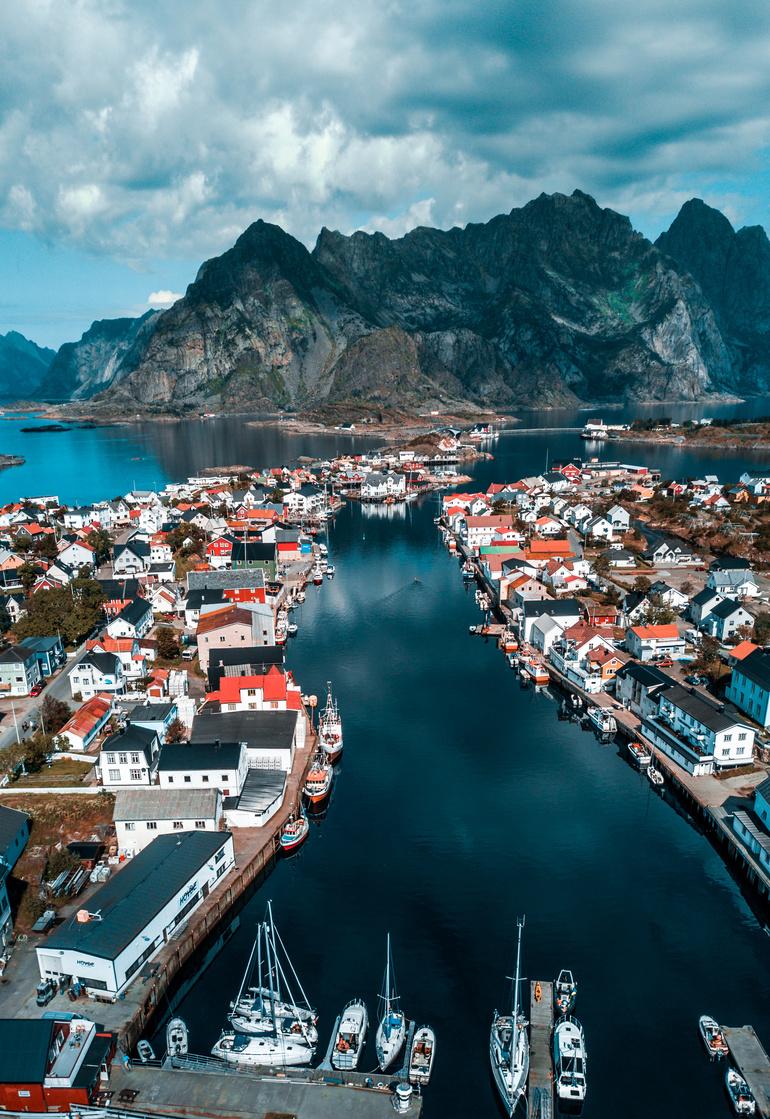

Without majority project ownership, Canada remains short-sighted and unable to avail of the totality of benefits from critical energy resources. We can no longer afford to believe that we are not the creators of our destiny. Rather Canada needs to be proactive, long-term thinkers, as seen by the leadership in Norway. Norway proves time and time again, that fortune favors the brave

44 TheOGM.com

Newfoundland: One Answer To The Global Energy Crisis with Water, Land, Oil, Gas & Wind

At the recent EnergyNL Conference in St. John’s, the room was buzzing with excitement about the oil and gas industry rebounding after Covid19, and the opportunities that are emerging in the new energy sector.
Lisa Baiton, President & CEO of the Canadian Association of Petroleum Producers (CAPP), took the stage at the conference and began her address by highlighting the global energy crisis, illustrating its impact on energy worldwide.

46 TheOGM com
Lisa said, “The year 2022 will be remembered for its global energy disruption The energy crisis in Europe, with shortages of natural gas and oil, is very far from over and continues to pose geopolitical and economic threats. And, it has spread across the globe it’s not just Europe Russia’s invasion of Ukraine has brought the global energy security and affordability crisis to the doorsteps of Canadians. The world is undergoing a historical transformation that will impact every country and virtually every society in existence today. This global shift is at the scale of the industrial revolution and is ushering a new era, redefining global trading relationships and geopolitics ”
Lisa’s message resonated deeply, as we have all felt the cumulative effects of this energy disruption, with rising costs affecting our everyday lives; from groceries to home heating to supply chain shortages. The world, Lisa explains, “is undergoing a transformative shift of historical proportions. This shift is comparable to the industrial revolution and redefines global trading relationships and geopolitics.”
At the heart of these fast-paced changes lies the resource that moves the world energy
CANADA: Poised to be a stabilizing force for the energy crisis
Lisa conveyed, “The oil and gas industry has been the foundation of the Canadian economy. The upstream oil and gas sector contributed over $197 billion to Canada’s real GDP in 2021 and an average of $12 billion per year in revenue to governments from 2019 to 2021
The sector employs 450,000 Canadians in highskilled and high-paying jobs And, these employees come from all regions of Canada. Ours is a truly national industry. The industry is a long-term partner in Newfoundland and Labrador. Over the past 25 years, royalties from offshore production have reached more than $25 billion. Investment into the Province totals over $53 billion over that same period. These contributions to the provincial economy support thousands of jobs and help fund infrastructure, healthcare, schools, roads, and critical social programs.”
Recognizing the demand for oil and the urgency to supply oil to address the energy crisis, Lisa emphasizes that Canada has a unique opportunity to stabilize global energy security while lowering global emissions. The Newfoundland offshore energy industry is an opportunity waiting to happen With direct access via the province’s oceans, it bypasses the market access challenges faced by other regions in Canada. Furthermore, its geographical proximity to Europe positions it as a secure and trusted supplier of energy to address the ongoing energy security crisis.
Addressing climate concerns, Lisa acknowledges the industry’s commitment to reducing greenhouse gas emissions and investing in clean technology. Newfoundland and Labrador’s offshore industry already produces some of the lowest-emitting barrels of oil in the world Lisa points out, “Canada’s oil and gas producers view climate change as a serious issue that requires innovation and investment to reduce greenhouse gas emissions. Our industry is a significant investor in clean technology and we are one of the largest spenders on environmental protection – precisely because we understand the scale of this challenge.”
TheOGM com 47
The oil and gas industry in Canada has been focusing on lowering emissions for years and Canadian producers have been an important part of Canada’s global leadership in emissionsreducing innovations and technologies, Lisa points to the solution, “Game-changing technologies and investments will enable Canada’s oil and gas producers to continue reducing emissions. We will require a creative –whole-of-Canada – approach to ensure that our oil and gas sector remains competitive ”
Lisa stresses to Industry that, credible forecasts show oil and gas remaining a significant part of the global energy mix for decades to come, “With investment returning to the offshore industry globally, Newfoundland and Labrador has a golden opportunity within reach. it will require a collective effort from industry and all levels of government to reimagine the province’s potential and seize this moment for the benefit of its people, all Canadians, and global partners seeking a secure and responsible energy supply.”

The province of Newfoundland and Labrador stands on the precipice of greatness, ready to unleash its full energy potential. The combination of oil, gas, and wind will all be elements of the new energy mix that will lead us to a sustainable new energy future The global investment community is watching closely as Newfoundland and Labrador cement its place as a global energy powerhouse, thereby securing its role as a catalyst for global energy security, economic prosperity, and environmental stewardship.

48 TheOGM.com

Equinor’s Energy Transition Plan is Launched While Market Cap Declined. What does this mean for Bay du Nord?

Equinor, an oil and gas powerhouse is a Norwegian energy company that rivals a world-class operation driving the new energy transition around the globe. Their purpose is to turn natural resources into energy for people and progress for society meeting world energy demand and energy security

50 TheOGM com
Market Cap Decline of -30 16 % in One Year
Equinor ASA has a market cap or net worth of $80.33 billion as of June 2, 2023. Its market cap has decreased by -30.16% in one year, which may be one factor in explaining the company’s recent decision to further investigate the financial viability of mega-project Bay du Nord, Offshore Newfoundland.
Market capitalization, or market cap, is one measurement of Equinor’s company size. The market capitalization, commonly called a market cap, is the total market value of a company’s outstanding shares and is commonly used to measure how much a company is worth. It’s interesting to note that the Norwegian State is the largest shareholder with 67%, managed by the Ministry of Trade, Industry, and Fisheries, ensuring maximum benefits are returned to the people of Norway.
Equinor is also listed on the Oslo and New York stock exchanges, ensuring broad international ownership.
Factors Contributing to the Bay du Nord Delay
Equinor’s market cap decline, the rising costs of goods and supplies, increased global inflation, and global cost increases based on supply chain challenges, could naturally add up to set in motion a course of correction in the financial management of assets, development timelines, and the re-evaluation of global projects for Equninor. This coupled with the company’s commitment to half their operated greenhouse gas emissions by 2030 relative to 2015 levels, with 90% of the cuts coming from absolute
reductions, demonstrates their firm commitment to reducing emissions within their current portfolio.
This cumulative big picture of the financial and environmental considerations of the company would most likely lead to delays in projects currently on the board for development. At the recent EnergyNl conference in St. John’s Newfoundland, Equinor leader, Tore Løseth, country manager for Equinor Canada, spoke to a room full of industry players, business owners, workers, and stakeholders, many of whom stand to gain enormous business growth benefits from the Bay du Nord project Tore was in the uncomfortable position of having to deliver the disheartening news that the predicted $16 billion Bay du Nord project will be delayed.
Tore Løseth said, “Bay du Nord is one of the biggest subsea development that Equinor will ever undertake both in size and investment. It’s important to make the best financial decisions at the right time to enable a successful investment. This past year, the project has seen a significant cost increase in many aspects of development. This is largely driven by increased global inflation and cost growth in the supply industry nationally and internationally. This is a trend we are seeing across our portfolio. Bay du Nord teams will now spend the next couple of years evaluating all the opportunities to make a stronger project. To do this we will work closely with our suppliers, partners, and stakeholders to improve project competitiveness while ensuring a development that provides significant benefits for Newfoundland and Labrador.”
TheOGM com 51
Bay du Nord Delayed: What does that mean for the province of Newfoundland and Labrador and its people?
The Bay du Nord project (BdN) consists of several oil discoveries in the Flemish Pass basin, some 500 km northeast of St. John’s in Newfoundland and Labrador, Canada. The first discovery was made by Equinor in 2013, followed by additional discoveries in 2014, 2016, and 2020 Bay du Nord is a mammoth project with huge opportunities for jobs, supply base, technology transfer, business growth, supply chain infrastructure, revenue, royalties, and the building of a $16 Billion energy infrastructure in the province of Newfoundland and Labrador.
Despite Delays Bay du Nord: Remains an exciting project on the horizon
Tore Løseth looks to the future, “In spite of this postponement I’d like to share the exciting paths Bay du Nord will take in advancing by providing energy security with low carbon emissions The project remains an important part of Equinor and our partner BP’s long-term development portfolio. I feel confident that even with this delay, I can illustrate what will make Bay du Nord important in the decades to come At Bay du Nord we are living an innovation mindset focused on long-term value creation that will break new ground in a smarter and technologically advanced way. This is also the philosophy of how we optimize our oil and gas assets to reach a net-zero future. Last year Equinor published our Energy Transition Plan, a concrete plan focused on developing new energy and new industries, creating value for local communities, and how we plan to meet net zero by 2050.”
Newfoundland: Key Energy Hub for World Energy Demand
Given the world is in an energy crisis and demand for energy is incredibly high in places like Europe Newfoundland is strategically aligned to deliver energy worldwide. Given that Newfoundland’s offshore industry is established, and geopolitically stable and its proximity to markets for renewables and non-renewables is unprecedented, Newfoundland’s energy industry is globally poised to be in very high demand. It’s predicted that wind and hydrogen could put Newfoundland on the map as the world’s leader in Hydrogen Think about that
The energy transition is key to the new energy mix that will lead us to a sustainable net-zero future. Eqninor’s Energy Transition Plan outlines the company’s goals and strategies for transitioning to a low-carbon future. Bay du Nord will be evaluated and restructured to ensure it delivers low-carbon fuel within the critical framework of the Net Zero plan
Here is a summary of the key points of Equinor’s Energy Transition Plan:
Goals
Equinor aims to achieve net-zero emissions by 2050. The company plans to reduce its absolute greenhouse gas emissions by at least 50% by 2050, compared to 2019 levels. Equinor plans to increase its renewable energy capacity to 12-16 GW by 2030.
52. TheOGM.com
Strategies
Equinor plans to invest in renewable energy, such as offshore wind and hydrogen. The company will continue to produce oil and gas but with a focus on reducing emissions and increasing efficiency.
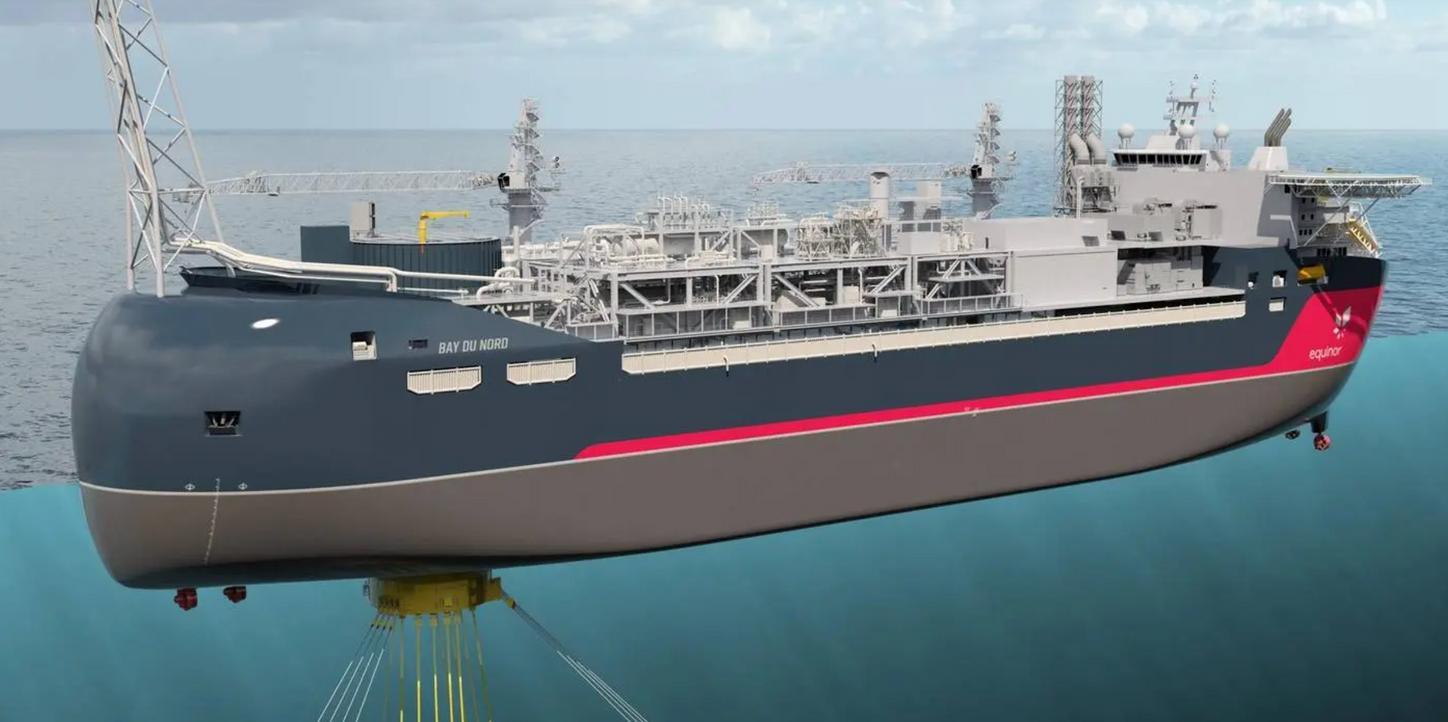
Equinor will use digitalization and artificial intelligence to optimize its operations and reduce emissions
The company will work with partners and stakeholders to accelerate the energy transition.
Initiatives
Equinor plans to develop a large-scale offshore wind farm in the North Sea, which will have a capacity of up to 4 5 GW
The company will invest in hydrogen production and carbon capture and storage.
Equinor will continue to explore oil and gas but with a focus on reducing emissions and increasing efficiency.
The company will use digitalization and artificial intelligence to optimize its operations and reduce emissions
Equinor’s Energy Transition Plan outlines the company’s commitment to transitioning to a lowcarbon future By investing in renewable energy, such as offshore wind and hydrogen, and reducing emissions from its oil and gas operations, Equinor aims to achieve net-zero emissions by 2050. The company’s use of digitalization and artificial intelligence will help optimize its operations and reduce emissions. Equinor’s plan is an important step towards a more sustainable energy future.
TheOGM com 53
BOURQUE INDUSTRIAL: Atlantic Canadian Company Succeeds With “Out of The Box” Creativity
ByTinaOlivero
Bourque Industrial Ltd. is a Canadian company that provides industrial services to clients across various industries The company offers a range of services, including fabrication and welding, maintenance and repair, mechanical installation, project management, and more.


In the late 1960s, the four brothers (Paul, Ken, David, and Mike) bought the company from their father. Later the company's name was changed to Bourque Industrial Ltd to better reflect the services that the company provided beyond just welding. As time passed and personal interests changed, Paul remained with his 2 sons John and Andrew to run the company. After Andrews's retirement and Paul’s later retirement, John became the sole owner of the Bourque Industrial
Building a Bourque Legacy
Bourque Industrial has since grown to become a respected name in the industry, with a reputation for delivering high-quality work on time and on budget. Based in New Brunswick, Canada, Bourque serves clients across North America President, John Bourque has extensive experience in the industrial sector and is known for his hands-on approach to project management. He is committed to providing clients with the best possible service and has built a strong team of professionals who share his vision and values. Under his leadership, Bourque Industrial has grown significantly and is expected to continue to expand in the coming years
John Bourque takes a leadership approach to the business with innovative and creative fabrication solutions. This has broadened the scope of Bourque Industrial’s services as they offer clients custom metal fabrication in materials including carbon steel, stainless steel, nickel alloy and aluminum for a variety of projects in North America.
Bourque Industrial’s customers represent some of the largest firms in power generation, petroleum refining, process equipment, marine, renewables, and structural steel. Bourque says, “Renewables are a fast-growing sector. From on and offshore wind to various Hydrogen opportunities as well as various ocean and tidal technologies, the future looks very exciting.”
John Bourque is responsible for making major corporate decisions, managing the overall operations and resources of the company, as well as representing the company to industry, the media, and the public. Bourque Industrial’s strategic vision and goals span far and wide John explains, “As a fabrication company with a wide range of clients, we work to ensure our clients are served at the highest level. Our customers are partners not just clients As such we strive to foster those relationships every day Every employee is encouraged to build on these relationships at every level. We do not win if our customers do not win.”
sectors I think the ones that I find most interesting are those that challenge our thinking of how to best meet our customer’s requirements. The more “out of the box” thinking and collaboration, the more interesting they are.”
Bourque describes his leadership style as, “the ability to put the right people in the right roles and give them the tools and support. To challenge traditional thinking and empower people to make decisions that enhance the values of the organization and learn from their experiences.”
From Custom Fabrication services to maintenance and repair, to creating specialized equipment and parts for their client's unique needs, Bourque Industrial continues to expand its knowledge base and evolve with every project completed

Overall, Bourque Industrial is known for delivering high-quality work on time and on budget, making them a trusted partner for clients looking for industrial services
With extensive experience in the fabrication industry John Bourque strategically developed projects with a seed of creativity, Bourque says, “Over our 76 years there is no doubt we have worked on some interesting projects It’s difficult to point to any one given our wide range of
TheOGM.com 55


OIL COMPANIES CARING FOR OUR PLANET
Chevron voluntarily relinquishes offshore permits on Canada’s west coast to preserve wildlife area

Chevron Canada Limited is voluntarily relinquishing 19 offshore oil and gas permits on Canada’s west coast within the Scott Islands Marine National Wildlife Area and the Hecate Strait and Queen Charlotte Sound Glass Sponge Reefs Marine Protected Area.

58 TheOGM.com
The four reefs in the Hecate Strait and Queen Charlotte Sound are thought to be over 9,000 years old. They are the first discovered living examples of glass sponge reefs, thought to be extinct worldwide, that existed during the Jurassic period Live glass sponge reefs are unique to Pacific coastal waters.
Glass sponge reefs have intrinsic, ecological and economic value They provide a link between benthic and pelagic environments and play an important role in marine carbon and nitrogen processing.
These sponges are exceptionally fragile, with skeletons made of silica, or glass. Sponges are easily broken on impact and increased suspended sediments can permanently smother or inhibit the filtration process The ocean conditions necessary to allow such large reefs to develop are rare, and the fragility of the reefs makes them vulnerable to damage from human activity.
Each sponge may live for over 200 years, and the slow growth and vulnerability of the sponges suggest that recovery from damage may take tens to several hundreds of years. If the skeletons of dead sponges are buried or destroyed, new sponges cannot grow to add stability to the reef
Chevron is continually assessing its portfolio and has been in communication with Natural Resources Canada since 2020 on the opportunity to contribute to the Government of Canada’s international marine conservation targets,” said Christopher Mazerolle, president of Chevron Canada.
“We have been safely and responsibly developing Canada’s onshore and offshore oil and gas resources for 85 years, and remain committed to providing the affordable, ever-cleaner energy Canada needs.”
The relinquished 19 offshore oil and gas permits are an estimated 5,700 square kilometers that overlap portions of federal marine-protected areas offshore British Columbia The relinquishment of these permits ensures that the Scott Islands Marine National Wildlife Area and the Hecate Strait and Queen Charlotte Sound Glass Sponge Reefs Marine Protected Area (MPA) continue to fully count towards the Government of Canada’s international marine conservation targets.
About Chevron Canada:
For 85 years, Chevron Canada has been responsibly developing Canada’s energy resources. We believe affordable, reliable, and ever-cleaner energy is essential to achieving a more prosperous and sustainable world.
Headquartered in Calgary, Alberta, Chevron Canada has interests in oil sand projects and shale gas acreage in Alberta as well as exploration, development, and production projects offshore Newfoundland and Labrador.
Chevron Canada takes great pride in providing the affordable, reliable, ever-cleaner energy needed to improve lives and power the world forward. We aim to grow our traditional oil and gas business, lower the carbon intensity of our operations and grow new lower-carbon businesses in renewable fuels, hydrogen, carbon capture, offsets and other emerging technologies.
TheOGM.com 59
RIDEOUT LEGACY: Leaders in innovation, industrial supply Learning from The Greats
By Tina Olivero
The Rideout family’s impact on the industrial supply and equipment industry in Newfoundland and Labrador is immeasurable. From their early beginnings to their current success, the Rideout has been an example of adaptability, dedication, and commitment to their customers and family business.

The Rideout family has left an indelible mark on the industrial supply and equipment industry in Newfoundland and Labrador.

Their family legacy has helped to transform the industry in Newfoundland and Labrador and they have set an example for others to follow.
Their ability to adapt to changing times, their commitment to their customers, and their dedication to their family business have made the Rideout family a true Newfoundland and Labrador success story.
The Early Years – Roland H Rideout
Roland H. Rideout was born on Pilley’s Island, Notre Dame Bay, and moved to St. John’s in 1945. Roland Rideout had previously worked with the United States Air Force in Gander before moving to St. John’s. He started a small motor repair shop in 1950 located at the corner of Cochrane and Water Street where Sir Humphrey Gilbert exists now He later moved to Williams Lane (Now Dicks Deck area) and then to the storefront on water street west in 1956.
Much of his business throughout this period came from the Marine and fish processing industry where he developed a strong reputation as an expert repair center for motors, generators, and related apparatus Roland Rideout quickly gained a reputation as an expert repair center for motors, generators, and related equipment.
Roland and his wife Lillian had 8 children and 3 became involved in the family business
He supervised the electrical contracting and motor winding business and oversaw the company’s natural expansion into power tools, abrasives, cutting tools, and related products. From there, Ray recognized a gap in the market to focus on small and large-scale woodworking machinery and equipment and Rideout Tool & Machine wasn’t long to establish itself as a key supplier of woodworking products in Newfoundland Ray became President of the company as his father scaled back actively in the business and oversaw all operations, staff and sales functions for the majority of his career He also played a key role in establishing the company as a major supplier for the offshore industry in the years to come.
Ray’s dedication and expertise helped Rideout Tool & Machine become a one-stop shop for all types of industrial and commercial tools and equipment.
Another family member who made significant contributions to the company’s growth is Harry Rideout. Harry had studied Electronics Technology at Ryerson Tech before working at ITT at their relay station at the US Naval Base in Guantanamo Bay, Cuba.
Harry Rideout
Ray Rideout
Ray started working full-time with Rideout Electric Ltd on Water Street in 1963 after completing his business degree at Memorial University.
After spending two years doing Engineering courses at MUN, he accepted a technician position with Transport Canada’s regional office in Moncton.
TheOGM.com. 61
In 1966, Harry joined Rideout Tool as the external sales and business development manager, where he developed the metalworking, compressed air portion and technical test and measurement products divisions of the business. Harry’s knowledge and expertise were essential in driving the company’s success in these areas.
Today Harry remains well-known within the province for his technical knowledge and is active in supporting and developing the business in these areas.
Chris Rideout
The youngest of the Rideout brothers to get involved with the family business is Chris who joined the company in 1975. Chris had an education in Business Administration and worked as a Sales Representative out of St John’s He played a significant role in the company’s expansion, which included opening and managing a new branch in Corner Brook in 1980 to serve the west coast of Newfoundland
Chris managed the Corner Brook branch until he moved to Dartmouth, Nova Scotia, in 1986 to manage the company’s new Dartmouth branch and third location Thanks to his efforts, Rideout Tool & Machine was able to expand its reach and become a major industrial player serving the Atlantic provinces.
Kenmount Road Location
Over the years, Rideout Tool has achieved several major milestones. One of the most significant was the opening of its current location on Kenmount Road in 1972 At the time of the move, this location was considered the outskirts of St. John’s city limits but is now a major thoroughfare for incoming and outgoing traffic. The opening ceremony was attended by Henri Richard, the famed Pocket Rocket of the Montreal Canadiens, who was the spokesperson for Skil Power Tools at the time. This event marked a turning point for the company, as it allowed Rideout Tool to offer a wider range of products and services to its customers with a much larger physical footprint and showroom.
Cornerbrook Location
In 1980, Rideout Tool opened its Corner Brook branch, which allowed the company to expand its reach even further. This new location provided customers in western Newfoundland with access to the same high-quality products and services as those in St. John’s.
Dartmouth, Nova Scotia Location
New Locations
Rideout Tool & Machine has grown and evolved, becoming a leader in the supply of industrial and commercial tools and equipment in Newfoundland and Labrador, Nova Scotia, and beyond.
The company continued to grow, and in 1986, Rideout Tool & Machine opened its Nova Scotia branch. This new location was a significant milestone, as it allowed Rideout Tool to tap into new markets and customers in the Maritimes.
The new locations and growth of the company also coincide with the company rebranding itself from its origins as Rideout Electric to the broader scope of Rideout Tool & Supply as it was known in the 70s and 80s to become Rideout Tool & Machine as it is known today.
62. TheOGM.com
In 2005, Rideout Tool opened its new building on Akerley Blvd in Dartmouth, Nova Scotia This new location was much larger than the previous one, allowing the company to expand its inventory and services even further.


The company continues to grow and evolve to this day with increasing footprints and building expansions and upgrades.
Business Expansion
As the business continued to grow, Rideout Tool went on to attend major trade shows to develop business relationships with other manufacturers of tools, machinery, and related industrial maintenance products. With an expansive product offering of power and hand tools, industrial consumables, chemical products, wood and metalworking machinery, air compressors and related accessories, test and measurement products, environmental control products, a full line of fasteners products and so much more, Rideout Tool & Machine is well-diversified to meet the demands of the local economy.
Oil & Gas Industry
In the early 90s, it was clear Newfoundland & Labrador was set to become a major player in the oil & gas industry. Ray Rideout took the initiative to travel to Aberdeen to meet with successful distributors serving their local markets to learn the types of products they were selling to better meet the needs of the offshore industry to come. Ray took this knowledge home and quickly established new relationships to broaden the company’s product offering even further Harry also attended many of the trade events such as the OTC, and CMTS centered around the Oil & Gas industry.
TheOGM.com. 63
This forward-thinking expansion has set Rideout Tool & Machine up to become a major Newfoundland industrial supplier to the Hibernia platform during the construction phase of the project and has remained a long-term supply partner since then and to this day This marked the beginning of the company’s involvement in the oil and gas industry and has given the company the experience to be able to serve all large-scale projects within the Atlantic provinces
Rideout Tool & Machine remains to this day large enough to manage projects of this magnitude but is still very adaptable to the individual needs of our customers
ISO Milestone
In dealing with large-scale projects, Rideout Tool & Machine was encouraged to develop and maintain a quality program. In 1998, Rideout Tool achieved ISO certification, becoming one of the first industrial companies in the province to do so. This certification recognized the company’s commitment to quality and customer service and helped it stand out in a highly competitive market.
Rideout Tool Today
Chris Rideout, the president, and brother of Ray and Harry manage the Dartmouth location, while Janet Rideout, Ray’s daughter, is the Vice President of Operations, and Harry’s son Craig Rideout is the Vice President of Sales.
Rideout Tool has three locations, with the head office located in St John’s and branches in Corner Brook, Newfoundland, and Dartmouth, Nova Scotia. The company has a total of 46 fulltime staff and is managed by the third generation of the Rideout family
Rideout Tool & Machine will be celebrating its 75th year in business in 2024 and is a successful 3rd generation Newfoundland owned and operated company
The legacy of the Rideout family is significant, not only because of the success of the company they built but also because of their contributions to the local community.
The family has been involved in many charitable and community-based initiatives over the years. They have supported organizations such as the Children’s Wish Foundation, the Janeway Children’s Hospital Foundation, and the Canadian Cancer Society, as well as countless community and school sports groups among others.
Thank You For A Lifetime Commitment
These days, Ray and Harry no longer work fulltime but provide support for sales, technical support, and assistance in special projects
Rideout Tool and Machine continues to be a leader in the industrial supply and equipment industry in Newfoundland and Labrador, Nova Scotia, and beyond The company offers a wide range of products and services to meet the needs of its customers, including power tools, metal and woodworking machinery, compressed air equipment and much more. In addition, Rideout Tool provides repair and maintenance services for many of the products it sells.
The Rideout Community Legacy
64. TheOGM.com
As Rideout Tool continues to grow and evolve, the company remains committed to its core values of quality, customer service, and family values. With a strong foundation built over more than seven decades, Rideout Tool is poised to continue its success and remain a leader in the industry for many years to come.

The Rideout family business has a rich history and a legacy that has been built on hard work, determination, and commitment to excellence Their vision, dedication, and passion have helped the local Newfoundland communities that it serves and will be remembered for years to come.

The Rideout family’s story is a true testament to the spirit of Newfoundland and Labrador, and their legacy will continue to inspire future generations of entrepreneurs and business leaders.

TheOGM.com. 65
Hydrogen




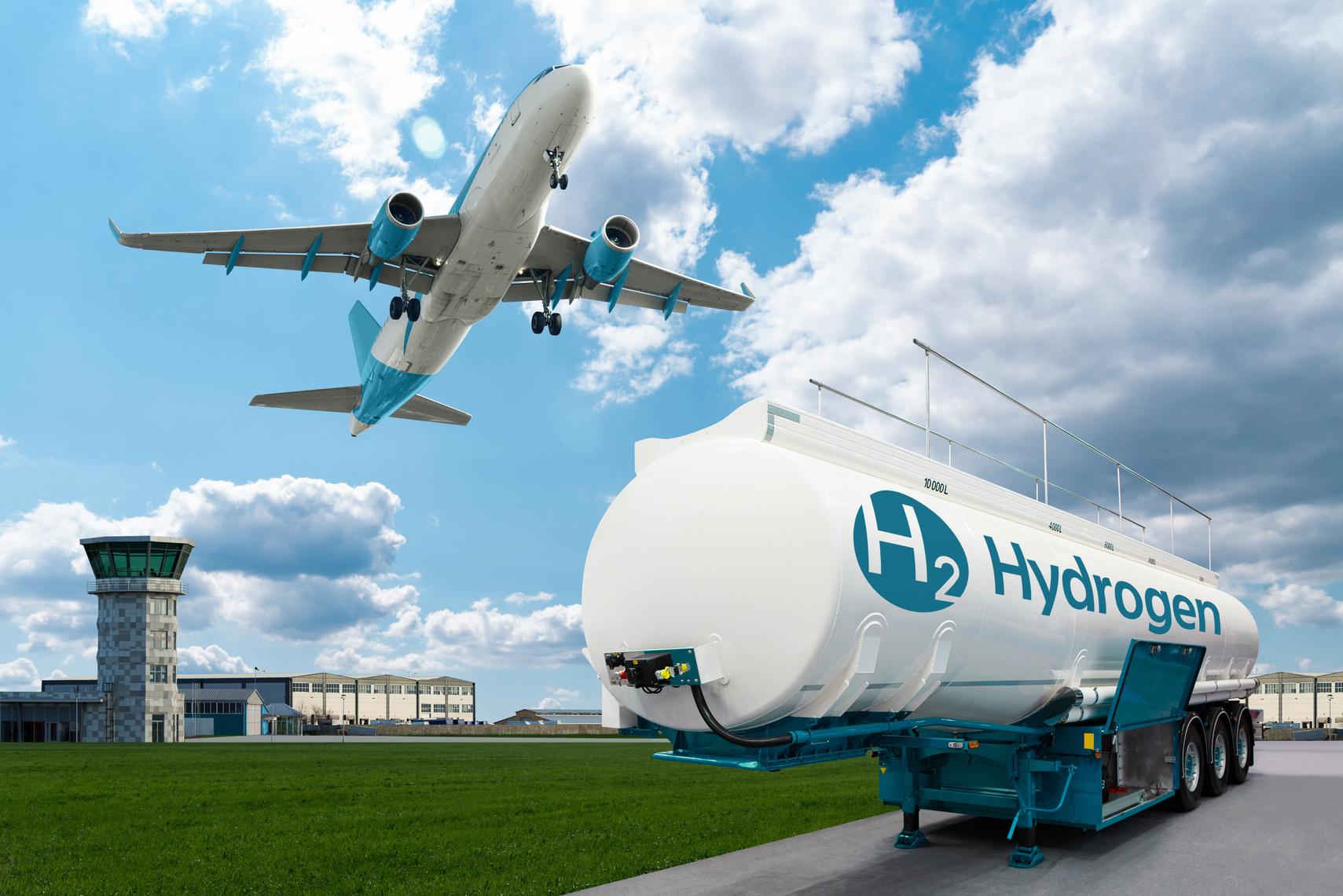


Creating A New Energy Mix



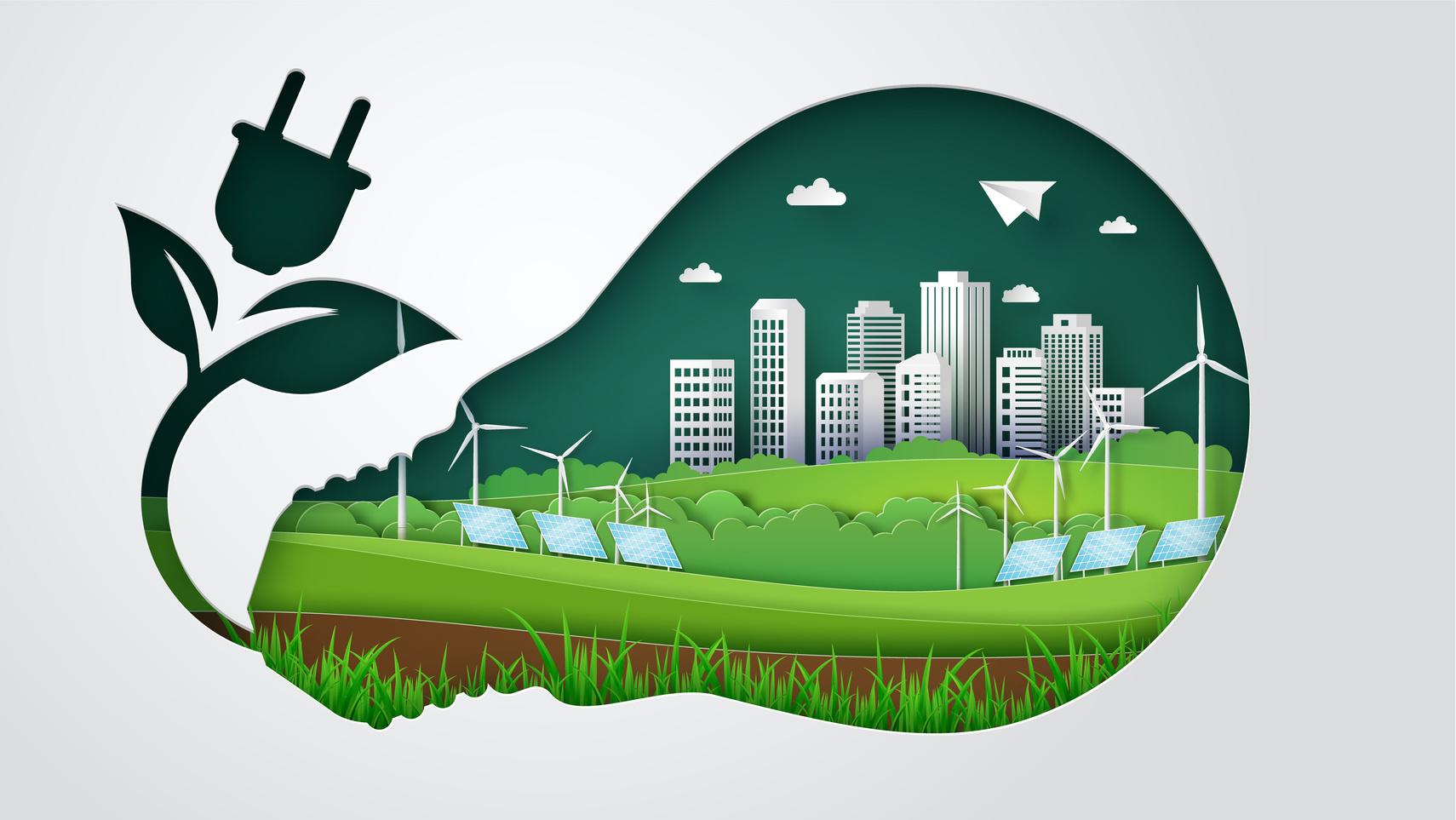

What is Hydrogen Energy?

Hydrogen energy is a form of clean energy that is produced when hydrogen gas is burned or converted into electricity through a process called electrolysis. Hydrogen is a clean-burning fuel that produces only water when it is burned, making it a potential alternative to fossil fuels. It can be used to power vehicles, heat homes, and buildings, and generate electricity for homes and businesses.
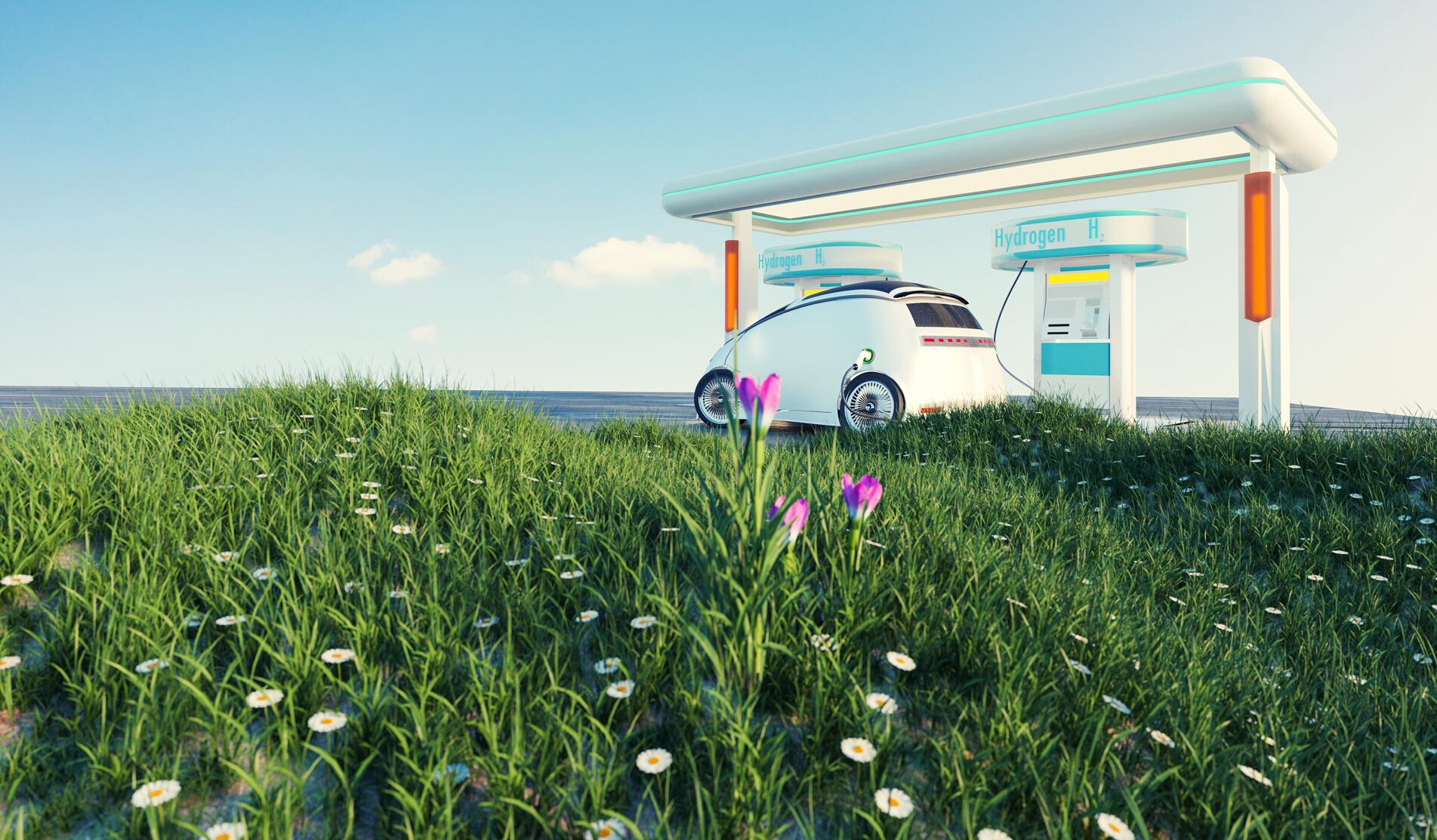
68 TheOGM com
There are several ways in which hydrogen can be produced, including:
1.
Electrolysis: This process involves using electricity to split water into hydrogen and oxygen The hydrogen can then be used as fuel.
2.
Steam methane reforming: This process involves reacting methane with steam to produce hydrogen gas and carbon dioxide
Development of green hydrogen: “Green hydrogen” is hydrogen that is produced through electrolysis using renewable energy sources, such as solar or wind power. There has been a growing interest in green hydrogen as a way to store excess renewable energy and as a potential replacement for fossil fuels.
3
Biomass gasification: This process involves breaking down organic matter, such as wood or agricultural waste, to produce hydrogen gas.
Hydrogen has several potential advantages as an energy source. It is abundant and can be produced from a variety of sources, it is cleanburning, and it can be stored and transported easily However, the production of hydrogen can also generate greenhouse gases, and the infrastructure for storing and distributing hydrogen is still being developed.
WHAT NEW HYDROGEN DEVELOPMENTS ARE ARISING?
Increased focus on hydrogen fuel cells: Fuel cells are devices that convert hydrogen gas into electricity through a chemical reaction, and they have the potential to be used as a clean and efficient source of power for a variety of applications, including vehicles, homes, and businesses. There has been a growing focus on developing and commercializing hydrogen fuel cells in recent years.
Increase in hydrogen infrastructure: There has been a push to develop the infrastructure needed to store, distribute, and use hydrogen as a fuel. This includes the development of hydrogen fueling stations for vehicles and the construction of hydrogen storage facilities
Increased use of hydrogen in transportation: There has been a growing interest in using hydrogen as a fuel for vehicles, including cars, buses, and trains Hydrogen-powered vehicles have the potential to be a clean and efficient alternative to traditional gasolinepowered vehicles.
WHAT WILL WE USE HYDROGEN FOR IN THE NEXT 5 YEARS?
It is difficult to predict exactly where we will be using hydrogen in the next five years, as it depends on a number of factors, including technological advancements, the development of infrastructure, and changes in policy and regulations. However, it is likely that we will see increased use of hydrogen in a number of areas, including:
Transportation: Hydrogen fuel cell vehicles are becoming increasingly popular, and it is likely that we will see continued growth in the use of hydrogen as fuel for cars, buses, and other forms of transportation in the next five years.
TheOGM.com. 69
Power generation: Hydrogen has the potential to be used as a clean and efficient source of electricity, either through the use of fuel cells or by burning hydrogen gas. It is possible that we will see an increase in the use of hydrogen for power generation in the next five years.

Industrial processes: Hydrogen is already used in a number of industrial processes, including the production of fertilizers and the refining of oil. It is likely that we will see an expansion of the use of hydrogen in these and other industrial applications in the coming years
Residential and commercial heating: Hydrogen gas can be used to heat homes and buildings, and it is possible that we will see an increase in the use of hydrogen for this purpose in the next five years.

Energy storage: Hydrogen has the potential to be used as a way to store excess renewable energy, such as wind or solar power It is likely that we will see an increase in the use of hydrogen for energy storage in the next five years.

70 TheOGM.com
PLANET LOVE



ENERGY
CROSS THE BRIDGE TO THE NEW
WORLD WITH US THEOGM.COM
Proteum Energy: Leadership Wisdom For A Sustainable Future Sustainable Right Action
 By Tina Olivero
By Tina Olivero
Proteum Energy is a sustainable energy solutions company at the forefront of the sustainable energy revolution. Proteum is the Latin word for hydrogen and Proteum Energy’s mission is to accelerate the world’s transition to clean energy by producing affordable low and negative-carbon intensity renewable hydrogen. Sustainability is enhanced by leveraging existing energy infrastructure and expertise, local communities, and the growing importance and integration of carbon capture and utilization with Proteum’s partners.

Proteum’s Vision: Over the next decade to see widespread adoption of low-cost, low-CI regional hydrogen for heavy-duty truck and rail transportation, hydrogen blending for low carbon gas to power, and regional modular production of low-CI ammonia
Proteum’s Team Values:
SAFETY – Everyone is responsible for safety
Anyone can stop an unsafe job
INTEGRITY – Know and do what is right. Learn more.
RESPECT – Treat others the way you want to be treated.
RESPONSIBILITY – Embrace opportunities to contribute Learn more
SPORTSMANSHIP – Bring your best every day. Learn more.
SERVANT LEADERSHIP – Serve our customers, our team and the common good.
Larry Tree, Co-Founder / CEO defines his idea of success in leadership as, “actively listening and serving, and treating others like I’d like to be treated. It’s something I personally strive to achieve every day through my words and actions. I recall a quote from Colleen Barrett, President Emerita of Southwest Airlines about creating culture; ‘words create thoughts, thoughts create emotions, emotions create beliefs, beliefs create culture, and culture drives performance.’ I believe the logic behind this statement to be impeccable for any leader in any situation.”
HYDROGEN AND CLEAN ENERGY
Proteum Energy focuses on providing sustainable energy solutions with the goal of leveraging the valuable infrastructure we already have in place. Larry explains, “The world is in an energy transition. Why not leverage the infrastructure and resources already available to accelerate the transition? Let’s call it an energy addition!”
Proteum Energy serves clients with low-cost, low to negative carbon intensity hydrogen in three distinct and creative ways:
Low-cost hydrogen – Proteum leverages regional hydrogen production using a modular approach. This allows for the optimization of both available and often lowcost price distressed feedstock Regional production reduces the overall cost of hydrogen transportation, and lower feedstock cost improves the cost per kilogram of hydrogen whether it’s for FCEV, power, or ammonia production Many future Proteum Energy hydrogen production sites are in economic opportunity zones, providing further support and opportunity for local and regional communities Low to negative produced hydrogen carbon intensity – the Proteum Energy technology leverages the value of the feedstock with LCFS, 45Q, or 45V credits and produces negative CI hydrogen with its ethanol partners that incorporate CCS. This means taking advantage of the full $3.00/kg PTC in the US, lowering overall hydrogen prices for consumer partners, and supporting regional agricultural communities and producers by leveraging significant purity biogenic CO2 (for CCUS).
TheOGM.com. 73
There is additional optionality for the production of low to negative CI anhydrous ammonia for regional growers.
Low water and power consumption –Proteum Energy’s proprietary SnMR™ technology consumes up to 40% less water than traditional SMR/ATR and multiple times less water than electrolysis. The system recycles required water and has low power consumption/kg produced, this makes it an environmentally preferred solution in regions where water and power resources have become increasingly scarce.
Sustainability + Profitability = The Way Forward
Larry shares his views on renewable energy economics, “Long-term economics ultimately ‘drive the bus’ for renewable energy development Short-term, government incentives will certainly help, just like they did for wind and solar. Profitability without incentives is important for sustainability Carbon capture and utilization is the way forward toward sustainability. The ethanol industry understands this and is already leading the way forward. Traditional oil and gas producers have seen CCS as an important way to leverage oil production for decades That was profitable, but it wasn’t sustainable. Now, it’s so encouraging to see these producers take on CCS with urgency and vigor. Proteum partners with ethanol and oil and gas producers and midstream operators for a regional production of low and negative CI hydrogen. We see this as a logical and sustainable way forward and it fits with Proteum’s vision to accelerate the energy transition over the next decade
The Proteum Movement
Larry’s vision for Proteum Energy is to accelerate the way forward by leveraging what we already have. He simplifies it stating, ‘Let’s grow where we are planted’ and utilize the resources and assets we already have in place, like low CI agriculture, extraordinary renewable ethanol production and its related ecosystem, and the largest and most efficient energy transfer mechanism in commerce; midstream oil and gas processing and pipelines.”

A CALL FOR ENERGY LEADERS
Larry believes the saying, “It takes a village to raise a child” rings true. We need to gather as partners to accelerate the energy transition. Proteum Energy wants to partner with leaders of all types to accelerate an energy addition Specifically, these are leaders in renewable power, renewable ethanol (both producers and growers), renewable and non-renewable ammonia production, committed GHG emissions oil and gas producers and midstream operators, carbon capture and utilization partners, and food grade CO2 off-takers. And, of course, regionally focused hydrogen offtake partners in liquefaction and heavy-duty transportation, hydrogen gas to power blending, e-methanol producers and low to negative CI ammonia producers and users.
74. TheOGM.com
Understanding GREENHYDROGEN: Gas,LiquidandSolid
 By Tina Olivero
By Tina Olivero
Green hydrogen is a type of hydrogen that is produced through the electrolysis of water using renewable energy sources such as solar or wind power. This process is known as “green” hydrogen production because it does not produce any greenhouse gas emissions.

76 TheOGM com
There are several forms that green hydrogen can take:
Gas: Green hydrogen can be produced and stored as a gas. This is the most common form of hydrogen and it can be easily transported and used as a fuel for a variety of applications, such as heating buildings or powering vehicles.
Liquid: Green hydrogen can also be produced and stored as a liquid, typically in a cryogenic tank This form of hydrogen is easier to transport and handle than gas, but it requires special equipment and infrastructure to store and use.
Solid: Green hydrogen can also be produced and stored as a solid, typically in the form of a metal hydride. This form of hydrogen has the advantage of being highly compact and stable, but it requires special equipment to release the hydrogen for use
GREEN HYDROGEN GAS
Green hydrogen gas is produced through a process called electrolysis. In electrolysis, electricity is used to split water into constituent elements of hydrogen and oxygen. The electricity for this process can be generated from a variety of renewable energy sources, such as solar or wind power, which is why it is called “green” hydrogen.
Here is a basic overview of the process of producing green hydrogen gas through electrolysis:
Water is electrolyzed in an electrolyzer, which is a device that uses electricity to split water into hydrogen and oxygen.
The electrolyzer is powered by renewable electricity, such as solar or wind power
The hydrogen gas produced during electrolysis is then purified and stored for use as a fuel.
The oxygen gas produced during electrolysis is typically released into the atmosphere.
Overall, the process of producing green hydrogen gas through electrolysis is a clean and efficient way to produce hydrogen fuel, as it does not produce any greenhouse gas emissions.
GREEN HYDROGEN LIQUID
Green hydrogen liquid is produced through a process called liquefaction. In liquefaction, hydrogen gas is cooled and pressurized until it becomes a liquid This process is typically carried out at temperatures below -253°C (-423°F) and pressures above 70 bar (7000 kPa).
To produce green hydrogen liquid, the process of electrolysis is used to produce green hydrogen gas, as described in my previous message. The green hydrogen gas is then cooled and pressurized until it becomes a liquid.
One advantage of green hydrogen liquid is that it is easier to transport and handle than hydrogen gas, as it is denser and more stable. It can be stored in cryogenic tanks and transported via tanker trucks or ships However, it requires special equipment and infrastructure to store and use, as it must be kept at very low temperatures to remain a liquid.
Overall, the process of producing green hydrogen liquid involves the production of green hydrogen gas through electrolysis, followed by liquefaction to produce the liquid form.
TheOGM.com 77
GREEN HYDROGEN SOLIDS
Green hydrogen solids are produced through a process called hydrogenation In hydrogenation, hydrogen gas is reacted with a solid material to form a solid compound containing hydrogen. This process can be carried out at room temperature and pressure, and it does not produce any greenhouse gas emissions
One common method of producing green hydrogen solids is to react green hydrogen gas with metals or metal alloys to form metal hydrides Metal hydrides are solid compounds that can store large amounts of hydrogen in a compact and stable form. They can be produced through a process called dehydrogenation, in which the metal hydride is heated to release the hydrogen gas.
To produce green hydrogen solids, the process of electrolysis is used to produce green hydrogen gas, as described in my previous messages The green hydrogen gas is then reacted with a solid material to form a solid compound containing hydrogen.
Overall, the process of producing green hydrogen solids involves the production of green hydrogen gas through electrolysis, followed by hydrogenation to produce the solid form.


78 TheOGM.com
Newfoundland and Rotterdam: A match made in Heaven

Newfoundland & Rotterdam: Working Together to Mitigate Europe’s Energy Crisis
Newfoundland and Labrador, a province blessed with abundant renewable energy resources, has established a fruitful partnership with the Port of Rotterdam in the Netherlands, in the hopes of mitigating Europe’s energy crisis.


The Government of Newfoundland and Labrador and the Port of Rotterdam recently signed a Memorandum of Understanding to explore and collaborate on the development of green hydrogen and hydrogen technologies This collaboration aims to create hydrogen supply chains that will support the export of green hydrogen from Newfoundland and Labrador to the Netherlands and other parts of Europe
The Port of Rotterdam, the largest inland port in Europe and the 11th largest container port globally, serves as a crucial energy hub for Western Europe With its significant infrastructure investments in green hydrogen production and distribution, as well as port upgrades to facilitate green hydrogen imports, the Port of Rotterdam aims to position itself as a leading green hydrogen hub for Northwestern Europe. The port’s strategic location and extensive network make it an ideal gateway for the import and distribution of green hydrogen.
80 TheOGM com
Monica Swanson, Program Mgt. International Hydrogen Corridors with the Port of Rotterdam, is working on the development of international hydrogen corridors in Rotterdam, specializing in building international coalitions for the import of hydrogen. Recently speaking at the EnergyNL conference in St John’s, Newfoundland, Monica reiterated, “We are in an energy crisis and we need green hydrogen. We look at Newfoundland as a region that could help us with this energy crisis.”
Unlike many European regions, the province of Newfoundland boasts abundant wind, water, and available land resources.
These attributes, coupled with a highly renewable energy potential, a skilled workforce, and a strategic location with multiple deep-sea ice-free ports, along transcontinental shipping routes and in proximity to Europe, makes Newfoundland and Labrador a premium renewable energy destination


The Port of Rotterdam is keen to connect and cooperate with companies that have a solid capacity to supply green hydrogen and green hydrogen derivatives from Newfoundland Leveraging renewable energy production, Newfoundland and Labrador is well-positioned to competitively produce and export green hydrogen, aligning with the European Union’s energy security and net-zero targets

TheOGM com 81
Newfoundland’s Minister Andrew Parsons, responsible for Industry, Energy, and Technology, emphasized the province’s commitment to transparent and fair processes in allocating Crown land for wind energy projects, renewable energy development incentives, stable government regimes, and a welcome investment climate This bodes well for sustainable energy companies emerging in the province such as World Energy GH2, ABO Wind, RedEarth, and EVREC, which are developing renewable energy production and storage solutions
The partnership between Newfoundland and Labrador and the Port of Rotterdam signifies a harmonious collaboration between the two regions with a shared vision to mitigate the energy crisis in the Netherlands with sustainable new energy.


Leveraging Newfoundland and Labrador’s renewable energy resources and the Port of Rotterdam’s expertise and infrastructure, establishing hydrogen supply chains will accelerate the transition towards a more sustainable energy landscape, benefitting both regions and contributing to global decarbonization efforts. It is a match made in heaven.

TheOGM.com 82
Learning from The Greats
Canada + Germany A Lucrative

Hydrogen Alliance
Canada and Germany: The Hydrogen Alliance That Will Change The Course Of History
Germany and Canada have formed a partnership that is set to revolutionize the global hydrogen market. The Hydrogen Alliance between the two countries is a significant step towards a sustainable future, as they aim to create a secure and reliable supply chain for green hydrogen This groundbreaking partnership between the world’s fifth and tenth-largest economies is set to create a paradigm shift in the energy industry, and it promises to be a game-changer in the fight against climate change.

84 TheOGM.com
The Hydrogen Alliance is a long-term strategic partnership between Canada and Germany that aims to accelerate the commercialization of green hydrogen. Green hydrogen is produced by electrolyzing water, using renewable energy sources such as wind or solar power It is a carbon-neutral energy source that has the potential to replace fossil fuels and reduce greenhouse gas emissions.
The alliance was announced in March 2021, and it has already gained significant attention in the energy industry. The partnership will see Canada exporting green hydrogen to Germany, where it will be used in various industries, including transportation, power generation, and industrial processes. The two countries will also collaborate on research and development to drive down the cost of green hydrogen production and improve its efficiency
Canada has significant potential for green hydrogen production, given its abundant renewable energy resources It is also strategically located to export hydrogen to Europe, where demand is expected to grow significantly in the coming years. Germany, on the other hand, has a strong industrial base and is a leader in developing hydrogen technologies The alliance, therefore, brings together complementary strengths that will drive innovation and growth in the hydrogen sector.
The alliance demonstrates that it is possible to create a sustainable energy future through international cooperation and innovation.
THE HYDROGEN ALLIANCE
The Hydrogen Alliance between Canada and Germany is a significant step towards a sustainable future for Canada, Germany, and the world It will change the course of history Here are 10 reasons why this alliance is important for the entire world:
Accelerating the transition to renewable energy sources: The alliance will accelerate the transition from fossil fuels to renewable energy sources, such as green hydrogen, which will reduce greenhouse gas emissions and help combat climate change
Creating a new export market: Canada’s abundant renewable energy resources and strategic location for hydrogen export create new export markets and economic opportunities for Canadian businesses
Supporting the hydrogen industry: The alliance will help support the hydrogen industry in both countries, creating new jobs and driving economic growth
The Hydrogen Alliance is not just a partnership between two countries; it is a beacon of hope for the world. The global energy industry is at a crossroads, and the decisions we make today will shape the future of our planet
Driving innovation: Collaboration between Canada and Germany on research and development will help drive innovation in the hydrogen industry, improving the efficiency of green hydrogen production and reducing costs.
Encouraging private sector investment: The alliance will encourage private sector investment in the hydrogen industry, attracting new capital and creating new business opportunities.
TheOGM.com 85
Building a secure and reliable supply chain: The alliance will build a secure and reliable supply chain for green hydrogen, ensuring a stable supply of clean energy to meet growing demand.
Promoting international cooperation: The Hydrogen Alliance is a demonstration of the power of international cooperation and collaboration in tackling global challenges. Supporting the Paris Agreement: The alliance supports the Paris Agreement’s goal of limiting global warming to 1.5 degrees Celsius by reducing greenhouse gas emissions.
Demonstrating leadership: The alliance demonstrates Canada and Germany’s leadership in the transition to a low-carbon economy and the fight against climate change


Providing a model for others: The Hydrogen Alliance provides a model for other countries to follow, demonstrating the benefits of international cooperation in tackling global challenges and transitioning to a sustainable future.
CANADA AND GERMANY – Stronger Together
The Hydrogen Alliance also has significant economic benefits for both countries. The partnership will create new jobs and drive economic growth in both countries. Canada’s hydrogen exports to Germany are expected to generate significant revenue, while Germany’s expertise in hydrogen technologies will create new business opportunities for Canadian companies.
Robert Habeck, Vice-Chancellor of Germany said, “Green hydrogen is an important key for a climateneutral economy We must resolutely pursue climate change mitigation in order to secure our prosperity and freedom. This is more important and urgent than ever at this time. The Hydrogen Alliance between Canada and Germany is a significant milestone as we accelerate the international market rollout of green hydrogen and clear the way for new transatlantic cooperation. Specifically, we aim to build up a transatlantic supply chain for green hydrogen The first shipments from Canada to Germany are to begin as early as 2025.
The Hydrogen Alliance is also a significant step towards achieving global carbon neutrality The International Energy Agency has identified hydrogen as a key energy source for decarbonizing hard-to-abate sectors such as transportation and industry

The Hydrogen Alliance is, therefore, a crucial step towards achieving the Paris Agreement’s goal of limiting global warming to 1 5 degrees Celsius
The Hydrogen Alliance between Canada and Germany is a groundbreaking partnership that promises to be a game-changer in the global energy industry The partnership brings together complementary strengths and demonstrates the power of international cooperation and innovation.
The Hydrogen Alliance is not just about creating a secure and reliable supply chain for green hydrogen; it is also about creating a sustainable future for generations to come The alliance is a beacon of hope for the world and a significant step towards achieving global carbon neutrality.


TheOGM.com 87
Pattern Energy in Argentia, Newfoundland: One of the largest renewable energy investments in Canadian history


Pattern Energy is a global leader in renewable energy that develops, constructs, owns, and operates high-quality wind, solar, transmission, and energy storage projects worldwide.
Pattern Energy Group LP is a San Francisco-based American company that develops, owns, and operates utility-scale wind and solar power facilities in the United States, Canada, Japan, and Mexico.
88 TheOGM.com
Pattern Energy is committed to accelerating the world’s transition from fossil energy to a sustainable future and has a development pipeline that contains bold initiatives that can help transition at scale.
Pattern Energy is one of the world’s largest privately-owned developers and operators of wind, solar, transmission, and energy storage projects. Its operational portfolio includes 35 renewable energy facilities that use proven, best-in-class technology with an operating capacity of nearly 6,000 MW (or 6 GW) in the United States, Canada, Japan, and Mexico.
Watts: What does that mean?
Pattern Energy’s portfolio of culminating into 6000 MW, or 6 GW is put into perspective when we consider the following:
A watt is a measure of power and there are 1 billion watts in 1 GW. How much is 1 GW of power?
A gigawatt is a massive amount of energy that is equal to one billion watts or 1,000 megawatts. It is often used to describe the output of large power plants or power grids and can power a medium-sized city. To get a visual of what it would take to produce 1 GW of power think about this:
It’s 3 125 Million Photovoltaic PV solar panels.
It’s 333 industrial, utility-scale wind turbines.
It’s 100 million LED lights
It’s 1.3 million horses or horsepower
It’s 2000 Corvettes of engine power
Pattern Energy’s 6000 Megawatts of power output is made up of a diverse portfolio of projects which they own and/or operate. Here are some of their projects:
UNITED STATES
Amazon Wind Farm (Fowler Ridge), Benton County, Indiana –
Operational
Arkansas Solar – In development
Broadview Wind, Curry County, New Mexico –
Operational
Grady Wind, Curry County, New Mexico –
Operational
Gulf Wind in Kenedy County, Texas –
Operational
Hatchet Ridge Wind in Burney, California –
Operational
Heritage Prarie Renewable – Kankakee and Livingston counties, Illinois – In development
Kaskaskia Renewables, Washington, St. Clair, and Randolph counties, Illinois – In development
Limestone Solar, Union County, Pennsylvania
– In development
Logan’s Gap Wind, Comanche County, Texas
–
Operational
Lost Creek Wind, DeKalb County, Missouri –
Operational
Louisiana Solar, Louisiana – In Development
Maysville Solar, Mercer County, Pennsylvania
– In development
Montour Solar One, Montour County, Pennsylvania – In development
North Kill Solar, North Kill, Pennsylvania – In development
Ocotillo Wind in Ocotillo, California –
Operationa
Panhandle Wind, Carson County, Texas –
Operational
1 2. 3. 4. 5
TheOGM.com 89
PatternEnergy: GlobalProjectPortfolio2023




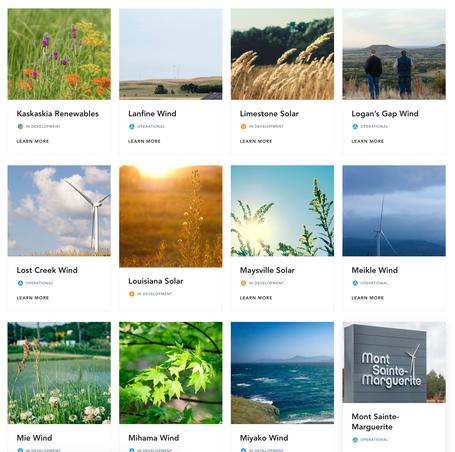


ArgentiaRenewablesin
Argentia,Newfoundland isoneofthe largestrenewableinvestments inCanadatodate.
Panhandle 2 Wind, Carson County, Texas –
Operational
Phoenix Solar, Fannin County, Texas –
Operational
Post Rock Wind, Ellsworth and Lincoln
Counties, Kansas – Operational
Santa Isabel Wind in Santa Isabel, Puerto Rico; Stillwater Wind, Stillwater County, Montana – Operational
Southern Spirit Transmission, Texas, Louisiana, and Mississippi – In development
SunZia Wind, Lincoln, Torrance, and San
Miguel Counties, New Mexico – In development
SunZia Wind and Transmission – New Mexico and Arizona – In development
The Shoals Renewables, Montgomery County, Illinois – In development
Western Spirit Wind, Guadalupe, Lincoln, and Torrance counties, New Mexico – Operational
Uplands Wind – Lafayette and Iowa Counties
– In development
Western Gate Renewables – Randolph County, Illinois – In development
Western Interconnect, Clovis, New Mexico –
Operational
Western Spirit Transmission, New Mexico –
Operational
Western Spirit Wind, New Mexico, Operational
CANADA
Armow Wind, Kincardine, Ontario –
Operational
Argentia Renewables – In Development
Belle River Wind, Lakeshore, Ontario –
Operational
Grand Renewable Wind, Haldimand County, Ontario; Henvey Inlet Wind, Henvey Inlet First
Nation Reserve No. 2 Lands, Ontario –
Operational
K2 Wind, Ashfield-Colborne-Wawanosh, Ontario – Operational
Lanfine Wind, Alberta – Operational
Meikle Wind, Peace River Regional District, British Columbia – Operational
Mont Sainte Marguerite Wind, ChaudièreAppalaches region, Quebec – Operational
North Kent Wind, Ontario – Operational
South Kent Wind in South Kent, Ontario; St Joseph Wind in St Joseph, Manitoba
Futtsu Solar, Chiba Prefecture – Operational Hachimoriyama Wind, Miyagi – In Development
Ishikari Offshore Wind & Storage – Ishikari City, Hokkaido – In development
Kanagi Solar, Shimane Prefecture; Ohorayama Wind, Kochi Prefecture –
Operational
Ohorayama Wind, Shikoku, Kochi –
Operational
Otsuki Wind, Kochi Prefecture; Tsugaru Wind, Aomori Prefecture – Operational
Shin Hamada Wind – In development
Shomokita Wind – In development
Tsugaru Wind – Tsugaru City, Aomori –
Operational
Mexico: Helios Solar, Mazapil Municipality, Zacatecas; Tuli Solar, Mazapil Municipality, Zacatecas.
Tuli Solar, Zacatecas, Mexico – Operational
JAPAN 1. 2 3. 4 5. 6 7. 8. 9 MEXICO 1 2. TheOGM com 91
PATTERN ENERGY IN ARGENTIA NEWFOUNDLAND
Pattern Energy is developing a green hydrogen project at the Port of Argentia, in Newfoundland and Labrador The project will use renewable electricity to produce green hydrogen and convert it into carbon-free ammonia, which can be safely stored and shipped to end-user customers around the world
The project is expected to require a capital investment of over USD 4 billion, representing one of the largest renewable energy investments in Canadian history

The project is expected to create 250-300 construction jobs, including equipment operators, electricians, laborers, environmental monitors, and more Once operational, permanent staff will operate and maintain the facility.
Phase 1 of the project is expected to consist of approximately 200 megawatts of installed wind power. Pending the outcome of environmental studies and community consultation.
Phase 2 of the project may consist of up to 1 2 gigawatts of additional installed wind capacity
These wind projects will power the production of green hydrogen, through the process of electrolysis, at a world-class hydrogen electrolyzer facility located at the Port of Argentia.
Carbon-free ammonia will be produced using green hydrogen, which can be safely stored and shipped to end-user customers around the world, particularly in areas like Europe, where they are currently experiencing energy shortages and demand for clean energy is at a premium
Scott Penney, CEO of the Port of Argengia said, “The Port stands on the cutting edge of the transition to renewable energy The Argentia Renewables project will generate significant capital investment in the region and create jobs in servicing project infrastructure and plant operations. This development at Argentia aligns with provincial and federal initiatives in reaching net-zero emissions by 2050.”
As Pattern Energy embarks one of the largest renewable energy investments in Canadian history in Argentia Newfoundland, the province is poised to be a world leader in green hydrogen production. This game-changing, foundational clean energy, mega-project, sets the stage for an unprecedented opportunity for Newfoundland and Labrador to be a world leader in renewables.
92 TheOGM.com


PLANET LOVE - THEOGM.COM
POWER TO AMMONIA
ABB: Supporting project operators in the world’s first dynamic green Power-toAmmonia plant

 By Tina Olivero
By Tina Olivero
Imagine a world where renewable energy sources all merge together to power the world. That’s what’s happening now… and that’s the future!
But what does that really mean?
How does that really work?
This new energy revolution has a lot of people scratching their heads wondering what the future will look like and how it will all come together.
94 TheOGM com
Think about the world in the past, when we evolved from getting around on horse carriages and then we transitioned to cars Back then we couldn’t imagine the impact that cars would have on our lives and the world. Cars sparked a gamechanging era, which led to other modalities of transport, technology, and innovation Each one connected to the other to drive progress in new and creative ways.
Just like the cars of yesterday, today we are on the cusp of another game-changing era, the sustainable new energy era.
This era is rising like a tidal wave of opportunities that combine and work together to combat climate change
Are you ready for the new energy future?
ABB
ABB Ltd. is a Swedish-Swiss multinational corporation headquartered in Zürich, Switzerland. The leading technology company was formed in 1988 and has grown to be a global powerhouse in supporting the industry with solutions that address many of the world’s greatest challenges, not least the energy transition and pathway to Net Zero
In ABB Energy Industries’ Danish office, teams have been working day and night to deliver solutions that will support the growth of new lower-carbon energy models, as well as supporting existing infrastructure to reduce their carbon emissions. It’s a very exciting time.
Martin Bruhn Petersen who is head of sales for ABB Energy Industries in Denmark, specifically has been working on an exciting project that will see ABB implement automation, electrification and digital solutions to the world’s first dynamic green Power-to-Ammonia plant.
Martin says, “The energy transition is complicated for all. Our solutions support building the capacity of the energy mix, adding new innovative and more sustainable fuels to the market We have found that through early engagement in these markets and individual projects, we help design operations to drive more efficient energy production, whilst simultaneously lowering CAPEX and OPEX At ABB, we are in a sweet spot of being able to work on leading-edge projects across several new energy markets and are delighted to be supporting the world’s first dynamic green Power-to-Ammonia plant.”
So what do we know about Ammonia and power?
Ammonia is one of the most widely produced chemicals in the world In its purest form, it is known as Anhydrous Ammonia About 80% of the ammonia produced in the industry is used in agriculture as fertilizer. Ammonia is also used as a refrigerant gas, to purify water supplies, and in the manufacture of plastics, explosives, fabrics, pesticides, dyes, and other chemicals. Typically, ammonia has been produced using hydrocarbons as a fuel source.
Blue and Green Ammonia
There are two types of Ammonia: Green Ammonia and Blue Ammonia.
TheOGM com 95
Green Ammonia is produced from hydrogen that is generated using renewable energy sources such as wind, solar, or hydroelectric power The process of producing green ammonia uses electrolysis to split water into hydrogen and oxygen. The hydrogen is then combined with nitrogen to produce Ammonia
Blue Ammonia, on the other hand, is produced from hydrogen that is generated using fossil fuels such as natural gas. The process of producing Blue Ammonia uses steam methane reforming to produce hydrogen from natural gas. Blue Ammonia is considered to be a transitional solution that can help reduce greenhouse gas emissions while the world transitions to more sustainable new energy solutions like Green Ammonia.
“Given Ammonia’s high energy volume and the ability to distribute easily across existing infrastructure networks, ammonia has been identified as an alternative fuel for heavy industry and shipping,” explains Martin. It is already used heavily in fertilizers, however, is produced by fossil fuels By harnessing renewable power as an energy source companies can accelerate the development of this cleaner fuel.”
World’s First Power-To-Ammonia Plant
Governments supporting new energy innovation is key to developing a new energy world.
The revolutionary green Ammonia project is a collaboration between leading and forwardthinking Danish companies: Skovgaard Energy, Vestas, and Topsoe.
The plant will be a demonstration facility, which means that it will be used to test and refine the technology before it is scaled up for commercial use. The Plant is expected to produce 5,000 tons of ammonia a year.
ABB has been brought on board to support the development of this exciting project. Being a green Power-To-Ammonia project, the plant will use renewable energy from wind turbines and solar panels to produce green ammonia, which can be used as a fertilizer or as a fuel for transportation.
The demonstration facility, scheduled to start operating in 2024, is a Power-to-X (PtX) plant and will be powered by renewables from existing 12 MW wind turbines and new 50 MW solar panels.
ABB will be responsible for electrical integration and advanced process control of the full Power to Ammonia plant operating in a highly dynamic mode – which means enabling production to adjust based on the availability of renewable energy This makes it a highly efficient and sustainable solution for producing green ammonia.
Government visionaries in Denmark at the Energy Technology Development and Demonstration Programme have allocated approximately $12 Million, to develop the world’s first dynamic green Power-to-Ammonia plant in Lemvig, northwest Denmark
The plant will be able to operate when the sun shines and the wind blows but can also gear production down when neither renewable energy source is present. Being able to adapt to fluctuations in energy makes it different from other types of PtX plants, which are directly connected to the grid
96 TheOGM.com
“Enabling PtX plants to run optimally and connecting them to the grid is a complex job To operate 24/7 they need enough energy constantly available even when there is not sufficient renewable energy from the sun and wind,” said Martin “Equally when integrating them to the grid we must avoid disruptions when there are fluctuations in energy production or if consumption outweighs demand. This is where dynamic plants such as this one, which can power down when there is no energy supply available, are invaluable and will play a key role in increasing grid capacity without compromising stability.”
ABB solutions will deliver full visibility of production, maximizing efficiency and ensuring optimal energy use. This Power-to-Ammonia project is a significant step towards a more sustainable and environmentally friendly future. Reaching net-zero goals and solving climate change issues will happen because of the great minds that develop projects like this, the world over.

TheOGM.com 97
Renewables
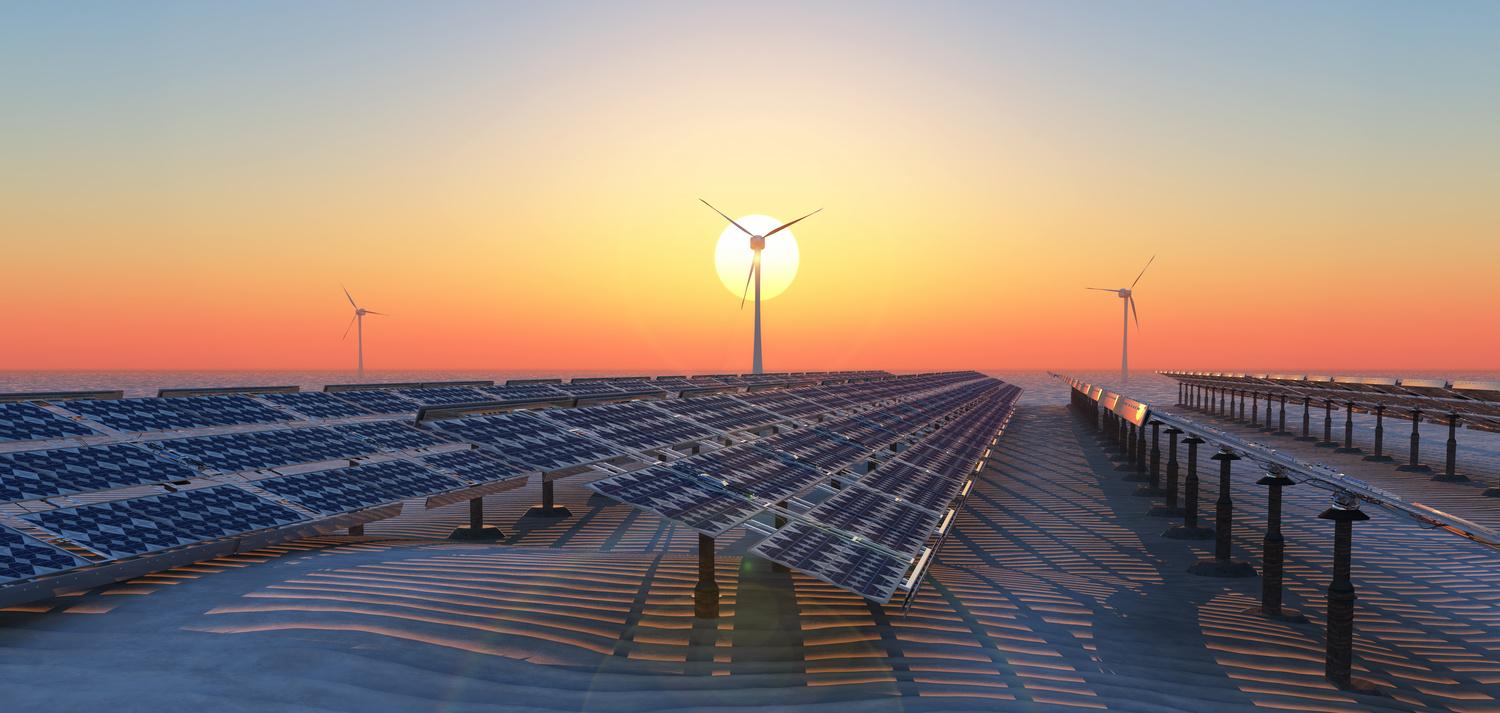





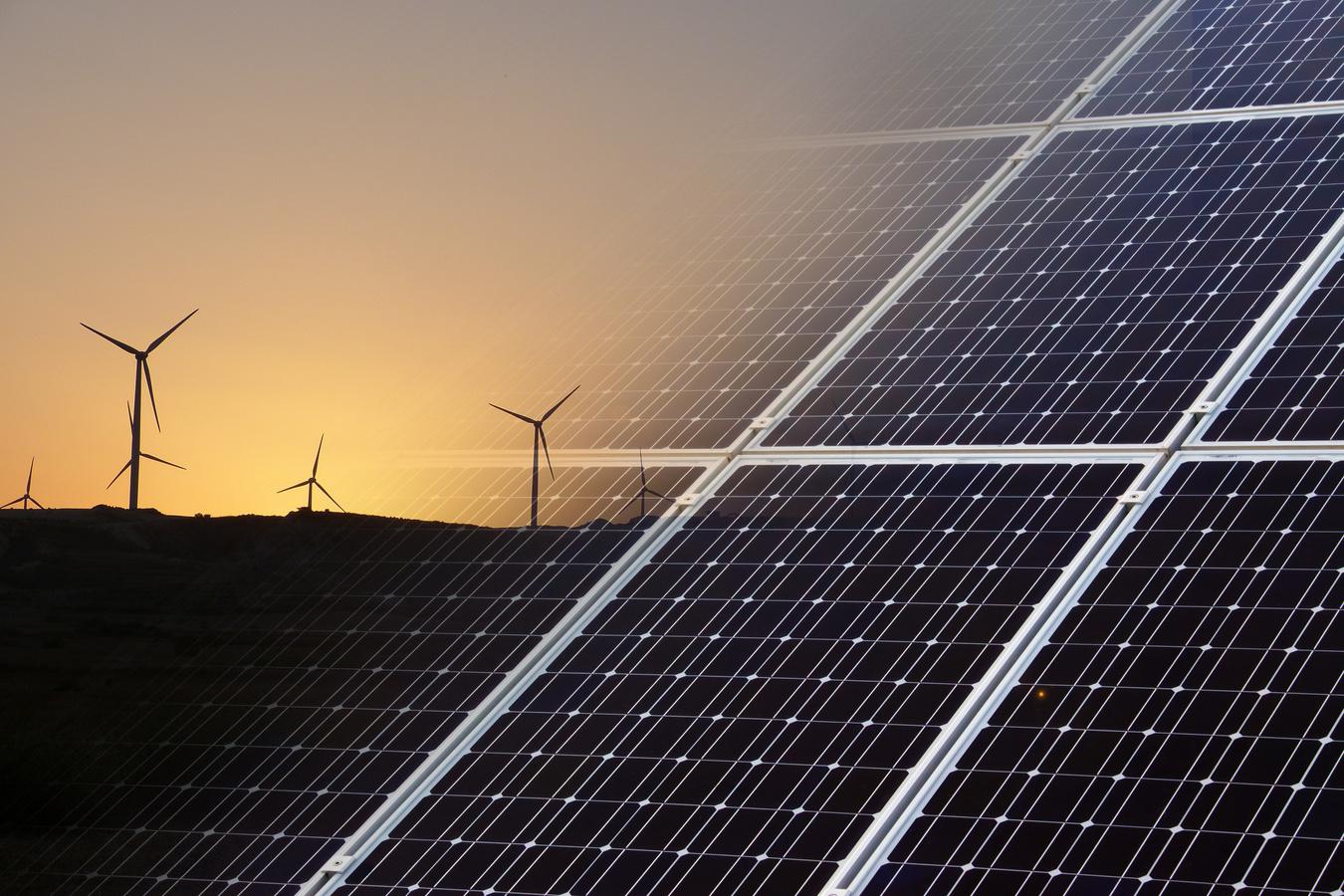
Sustainable Right Action



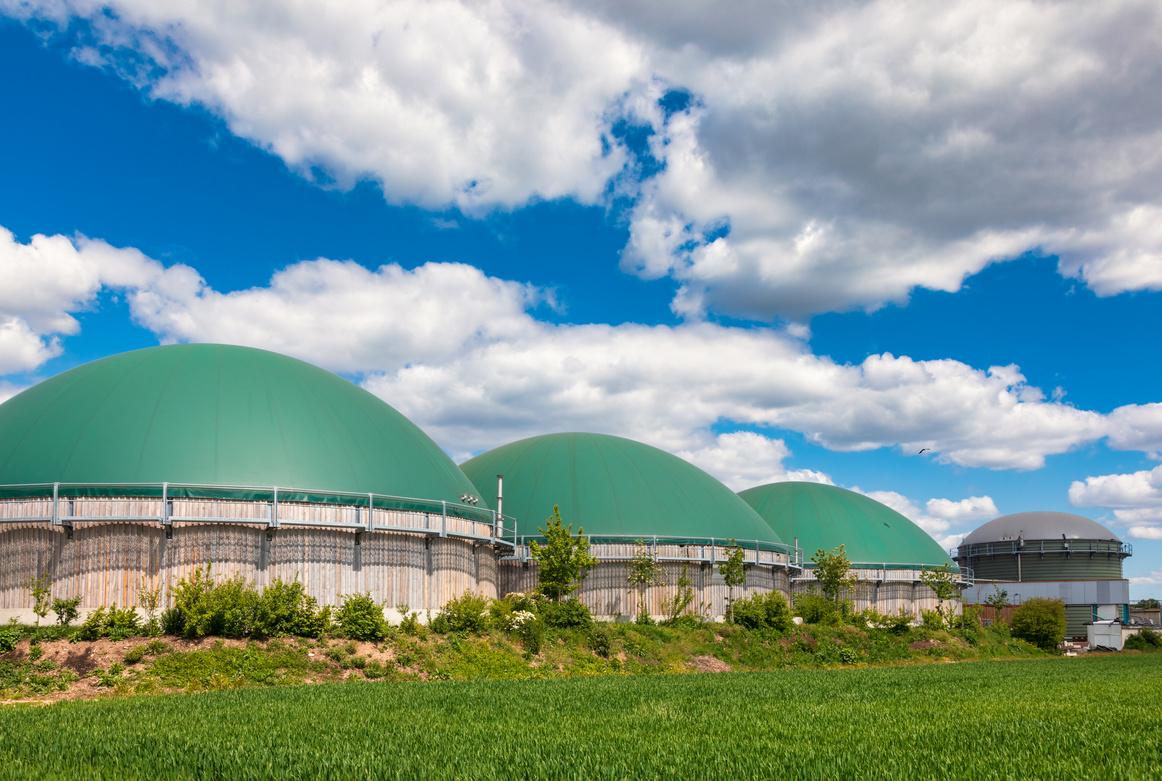

The World’s Greenest Countries


Climate change is one of the most significant challenges facing the world today The effects of climate change are already being felt around the world, from rising sea levels to more frequent and severe weather events.
In response to climate change, many countries are taking steps to reduce their carbon footprint and become more environmentally friendly. Let’s explore the world’s greenest countries and their efforts to combat climate change Hopefully, every other country will learn, adapt, implement, and follow suit.
100 TheOGM com
Top 10 Greenest Countries
According to the Environmental Performance Index (EPI), 2022 – the top 10 greenest countries in the world were:
Denmark
United Kingdom
Finland
Malta
Sweden
Luxembourg
Slovenia
Austria
Switzerland
Iceland
These countries have implemented policies and initiatives to reduce their carbon footprint and promote sustainability. They have invested in renewable energy, energy efficiency, and sustainable transportation. They have also implemented green tax reforms, carbon taxes, and other measures to reduce greenhouse gas emissions.
COUNTRIES LEADING THE WAY
Sweden
Sweden has implemented several climate policies and initiatives, including:
A goal to become carbon neutral by 2045
A carbon tax, which is one of the highest in the world
Investment in renewable energy, particularly wind power
A focus on sustainable transportation, including a goal to have fossil fuel-free transportation by 2030
Denmark
Denmark has implemented several climate policies and initiatives, including:
The Climate Act sets a target to reduce Denmark’s emissions by 70 percent in 2030 compared to 1990 and climate neutrality by 2050
Green tax reform, which includes a carbon tax and taxes on energy, water, and waste. Energy efficiency measures, such as the Energy Efficiency Obligation Scheme, which require energy companies to promote energy efficiency measures to their customers. Renewable energy, particularly wind power. Denmark has set a goal to phase out fossil fuel use by 2050
United Kingdom
The United Kingdom has implemented several climate policies and initiatives, including:
A goal to achieve net-zero emissions by 2050.
Policies include the Climate Change Act, which sets legally binding targets for reducing greenhouse gas emissions, and the Renewable Heat Incentive, which provides financial incentives for using renewable heat technologies Investment in offshore wind power and plans to phase out the sale of new petrol and diesel cars by 2030.
GO GREEN OR GO HOME
Green countries have implemented policies and initiatives to reduce their carbon footprint and promote sustainability
1 2 3.
6
10
4. 5.
7. 8. 9.
TheOGM.com 101
They have invested in renewable energy, energy efficiency, and sustainable transportation. They have also implemented green tax reforms, carbon taxes, and other measures to reduce greenhouse gas emissions. These policies and initiatives have been driven by a combination of factors, including public pressure, government leadership, and economic incentives
GREEN BUSINESS OPPORTUNITIES
Being green, clean, and environmentally friendly presents significant business opportunities.

Companies that invest in renewable energy, energy efficiency, and sustainable transportation can reduce their carbon footprint and save money on energy costs. They can also attract environmentally conscious consumers who are willing to pay a premium for eco-friendly products and services
Governments and organizations that invest in green policies and initiatives can create jobs, reduce healthcare costs, and improve the quality of life for their citizens

The world’s greenest countries showcase how it’s done. The rest of the world can learn, adapt and implement a sustainable new energy future These efforts demonstrate a commitment to combatting climate change and ensuring a sustainable future for generations to come. A powerful undertaking worth living for….. It’s our kids after all
ABOUT EPI
The Environmental Performance Index (EPI) provides a data-driven summary of the state of sustainability around the world.
102 TheOGM com
Your Future. Your Terms.
Advance
Learn
CareersinEnergy.ca

more
at
your career to meet the demands of Canada’s changing energy sector by developing your skills in a variety of fully-funded, flexible learning and training programs. Funded in part by the Government of Canada’s Sectoral Workforce Solutions Program
World’s Greatest Renewable Energy Projects

OUR GREAT MINDS Companies leading the way in large-scale renewable energy production

How much POWER (MW), do the world’s greatest renewable energy projects make?

In today’s world, electricity has become an essential aspect of our daily lives. From powering our homes to fuelling our industries, it is crucial to understand the basics of electricity One of the essential concepts in understanding electricity is the unit of power called megawatts. This article aims to explain what a megawatt is, how many megawatts are needed to power a home or ten homes, and what a 100-megawatt plant means
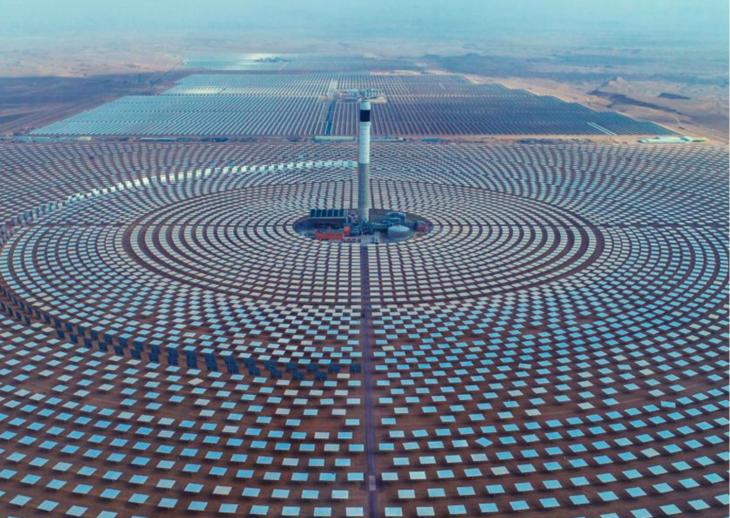
106 TheOGM.com
What is a Megawatt?

A megawatt is a unit of power that measures the rate of energy conversion or energy transfer per second
One megawatt is equivalent to one million watts. It is a common unit used to describe the power output of large power plants or energy-generating facilities
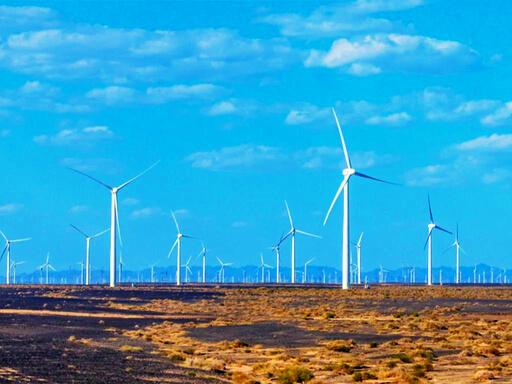

To put it into perspective, one megawatt of power can light up approximately 1000 homes.
The megawatt is also used to describe the power consumption of large industrial facilities or commercial buildings.
How many Megawatts does it take to run a Home?
The amount of power needed to run a home varies depending on several factors such as the size of the home, the type of appliances used, and the number of occupants.
On average, a typical home in North America uses approximately 900 kilowatt-hours (kWh) per month, which is equivalent to 30 kWh per day.
One megawatt-hour (MWh) is equivalent to 1000 kilowatt-hours (kWh)
Therefore, it would take approximately 33.33 megawatt-hours (MWh) or 33,333 kilowatt-hours (kWh) to power a home for a month
TheOGM.com 107
Thus, to power a home for one day, it would require approximately 1.39 megawatts (MW) of power (33,333 kWh/30 days).
What is a 100-megawatt power plant?
A 100-megawatt plant is a power-generating facility that has a power output capacity of 100 megawatts These plants can produce energy using various sources such as coal, natural gas, wind, solar, or hydroelectric power.
For instance, a 100-megawatt coal-fired power plant can generate enough electricity to power approximately 100,000 homes for a day. Similarly, a 100-megawatt solar power plant can generate enough electricity to power approximately 60,000 homes for a day, while a 100-megawatt wind power plant can generate enough electricity to power approximately 30,000 homes for a day.
It is worth noting that the amount of power generated by a plant depends on several factors such as the efficiency of the technology used, the availability of the energy source, and the environmental conditions.
RENEWABLE POWER SOURCES
Renewable energy sources such as solar and wind power have gained immense popularity in recent years due to their clean and sustainable nature. Let’s take a closer look at how many megawatts are required for these two energy sources to generate electricity.
Solar Power
Solar power is one of the most widely used renewable energy sources globally. It involves capturing the energy from the sun’s rays and converting it into electricity. The amount of power generated by solar panels depends on various factors such as the amount of sunlight received, the efficiency of the solar cells, and the size of the installation.
According to the National Renewable Energy Laboratory (NREL), the average solar panel produces about 250 watts of power under ideal conditions. Therefore, it would take approximately 4,000 solar panels to generate one megawatt of power (250 watts x 4,000 panels) Some of the top solar projects around the globe include:
Noor Complex Solar Power Plant, Morocco: With a total capacity of 580 MW, the Noor Complex Solar Power Plant is one of the largest solar energy projects in the world. Located in Morocco’s desert region, the project consists of three phases with different solar technologies, including concentrated solar power (CSP) and photovoltaic (PV) solar panels.
Solar Star, United States: Located in California, the Solar Star project is a 579 MW solar power plant. It consists of two separate sites that use more than 1.7 million solar panels to generate electricity for more than 255,000 homes.
108. TheOGM.com
Longyangxia Dam Solar Park, China: The Longyangxia Dam Solar Park is one of the largest solar power plants in the world, with a total capacity of 850 MW. The plant is located in the Qinghai Province and consists of more than 4 million solar panels
Bhadla Solar Park, India: Located in the state of Rajasthan, the Bhadla Solar Park is a 2,245 MW solar power project The project is spread across 14,000 acres and consists of multiple phases that use both PV and CSP technologies.
Mohammed bin Rashid Al Maktoum Solar Park, UAE: Located in Dubai, the Mohammed bin Rashid Al Maktoum Solar Park is a 5,000 MW solar power project that will be completed in several phases. The first phase of the project was completed in 2013 and has a capacity of 13 MW
Tengger Desert Solar Park, China: With a capacity of 1,547 MW, Tengger Desert Solar Park is one of the largest solar power projects in the world The plant is located in the Inner Mongolia Autonomous Region and uses both PV and CSP technologies.
Kurnool Ultra Mega Solar Park, India: Located in the state of Andhra Pradesh, the Kurnool Ultra Mega Solar Park is a 1,000 MW solar power project. The plant is spread across 5,932 acres and uses more than 4 million solar panels.
Topaz Solar Farm, United States: Located in California, the Topaz Solar Farm is a 550 MW solar power plant. The project consists of more than 9 million solar panels and generates enough electricity to power 180,000 homes.
Shams Ma’an Solar Power Plant, Jordan: The Shams Ma’an Solar Power Plant is a 52.5 MW solar power project located in southern Jordan. The plant uses more than 600,000 solar panels and generates enough electricity to power 35,000 homes.
Wind Power
Wind power is another popular renewable energy source that involves harnessing the power of the wind to generate electricity. The amount of power generated by wind turbines depends on various factors such as wind speed, turbine size, and the efficiency of the technology used. According to the International Energy Agency (IEA), a modern wind turbine with a capacity of 2-3 megawatts can generate approximately 6 million kilowatthours of electricity per year. Therefore, it would take approximately 333-500 wind turbines to generate one megawatt of power (6 million kWh/yr ÷ 8,760 hours/yr ÷ 2-3 MW)
Kamuthi Solar Power Project, India: The Kamuthi Solar Power Project is a 648 MW solar power plant located in Tamil Nadu. The plant covers an area of 2,500 acres and uses more than 2 5 million solar panels
Major wind projects around the world include the Gansu Wind Farm in China, which has a capacity of 6,000 megawatts, and the Alta Wind Energy Center in California, which has a capacity of 1,548 megawatts.
TheOGM.com 109
Gansu Wind Farm, China: The Gansu Wind Farm is the world’s largest wind power project, with a total installed capacity of 20,000 MW. It consists of multiple wind farms located in the Gansu province, and it produces enough electricity to power over 16 million homes.
Muppandal Wind Farm, India: The Muppandal Wind Farm is the largest onshore wind farm in India, with a total installed capacity of 1,500 MW. It is located in the state of Tamil Nadu and consists of more than 3,000 wind turbines.
Alta Wind Energy Center, United States: Located in California, the Alta Wind Energy Center is the largest wind farm in the United States, with a total installed capacity of 1,550 MW. It consists of multiple wind farms and uses more than 600 wind turbines
Jiuquan Wind Power Base, China: The Jiuquan Wind Power Base is one of the world’s largest wind power projects, with a total installed capacity of 8,000 MW. It is located in the Gansu province and consists of multiple wind farms.
London Array, United Kingdom: The London Array is the world’s largest offshore wind farm, with a total installed capacity of 630 MW. It is located in the Thames Estuary and consists of 175 wind turbines.
Shepherds Flat Wind Farm, United States: The Shepherds Flat Wind Farm is one of the largest wind farms in the world, with a total installed capacity of 845 MW It is located in Oregon and consists of more than 300 wind turbines
Fântânele-Cogealac Wind Farm, Romania: The Fântânele-Cogealac Wind Farm is the largest onshore wind farm in Europe, with a total installed capacity of 600 MW It is located in the Dobrogea region and consists of more than 200 wind turbines.
Horns Rev 2, Denmark: The Horns Rev 2 is an offshore wind farm located off the coast of Denmark. It has a total installed capacity of 209 MW and consists of 91 wind turbines.
Anholt Offshore Wind Farm, Denmark: The Anholt Offshore Wind Farm is an offshore wind farm located off the coast of Denmark. It has a total installed capacity of 400 MW and consists of 111 wind turbines.
Huitengxile Wind Farm, China: The Huitengxile Wind Farm is the largest onshore wind farm in China, with a total installed capacity of 900 MW. It is located in Inner Mongolia and consists of more than 300 wind turbines
Offshore Wind Power
Offshore wind power has emerged as a significant player in the renewable energy industry due to its ability to generate high amounts of electricity in areas with strong and consistent winds. Here are some of the popular wind projects excelling around the globe:
Hornsea 1 (UK) – The largest offshore wind farm in the world, located off the coast of Yorkshire in the UK It has a capacity of 1,218 MW and features 174 turbines
110 TheOGM com
Gansu Wind Farm (China) – The largest wind farm in the world, including both onshore and offshore wind turbines, with a total capacity of 7,965 MW The offshore portion of the wind farm is located in the East China Sea

London Array (UK) – Located off the coast of Kent in the UK, London Array was the world’s largest offshore wind farm when it was completed in 2013. It has a capacity of 630 MW and features 175 turbines.

Walney Extension (UK) – Located off the coast of Cumbria in the UK, Walney Extension has a capacity of 659 MW and features 87 turbines. It was completed in 2018.
Gemini Wind Farm (Netherlands) – Located in the North Sea, the Gemini Wind Farm has a capacity of 600 MW and features 150 turbines. It was completed in 2017.
Borssele Wind Farm (Netherlands) – Located in the North Sea off the coast of Zeeland in the Netherlands, Borssele Wind Farm has a capacity of 1,400 MW and features 94 turbines. It is expected to be fully operational by 2023
Race Bank (UK) – Located off the coast of Norfolk in the UK, Race Bank has a capacity of 573 MW and features 91 turbines. It was completed in 2018
Sheringham Shoal (UK) – Located off the coast of Norfolk in the UK, Sheringham Shoal has a capacity of 317 MW and features 88 turbines It was completed in 2012
TheOGM.com. 111

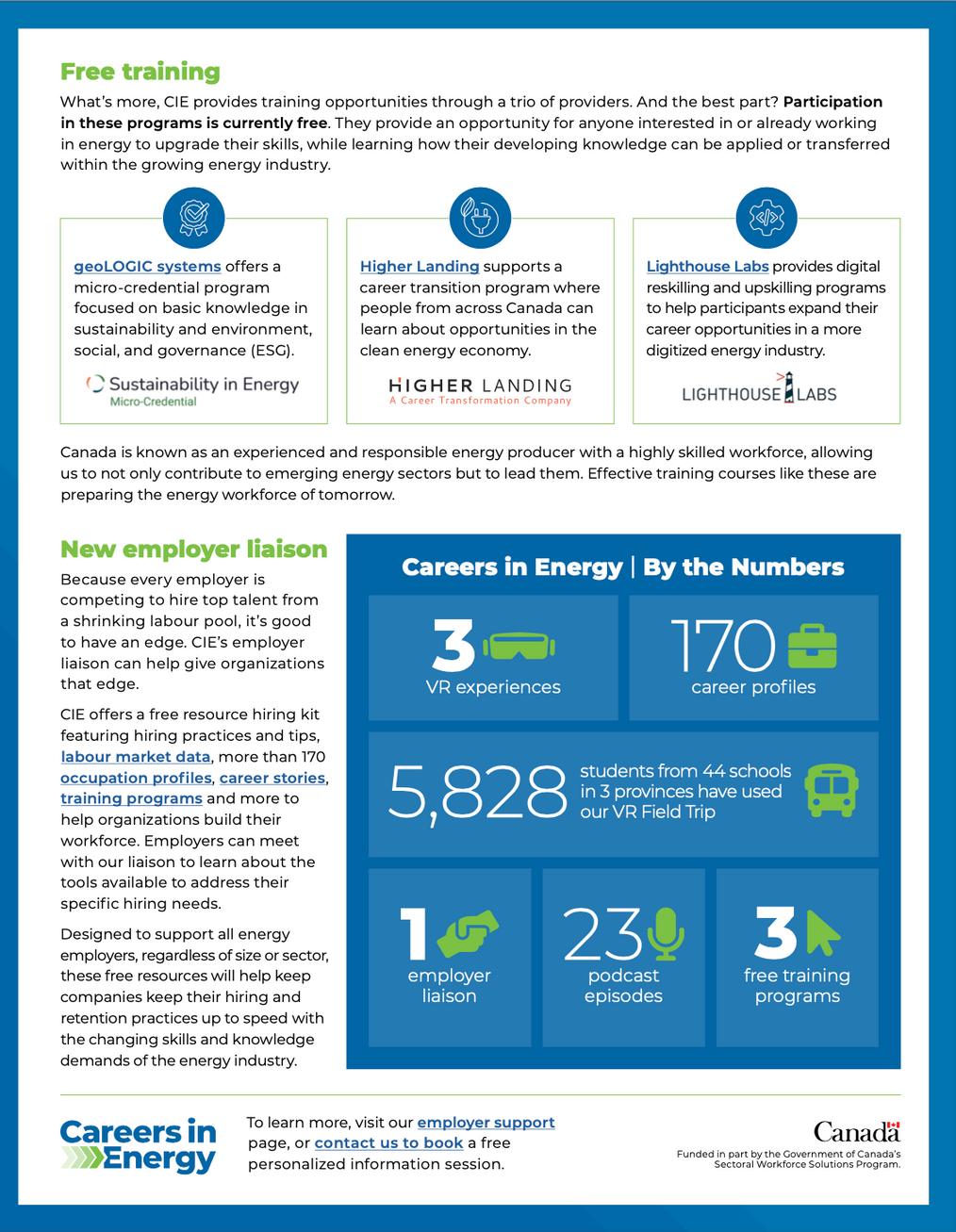 By Tina Olivero
By Tina Olivero


As ny on of wg e g
RNG can mix seamlessly into the existing natural gas system, making it a cost-effective and convenient way for customers to reduce their carbon footprint.
In this article, we will explore how FortisBC’s RNG solutions are working to support a lower-carbon future in British Columbia. We will also discuss how the company is leading the charge in transitioning to a lower carbon future in the commercial transportation sector by promoting the adoption of natural gas vehicles powered by RNG in the province of BC.
Understanding FortisBC’s Role In Producing Renewable Natural Gas (RNG)
Renewable Natural Gas (RNG) is a sustainable energy that is derived from organic waste.

RNG is created by breaking down organic materials from various sources such as agricultural farm waste, landfill waste, and wastewater.

FortisBC is a company that works with local farms, landfills, green energy companies, and municipalities to produce RNG. The RNG produced by FortisBC is then blended into the existing natural gas infrastructure, displacing equivalent volumes of conventional natural gas and reducing greenhouse gas emissions.
Since RNG can mix seamlessly into the existing natural gas system, it does not require customers to retrofit their existing natural gas appliances or equipment. With over 50,000 kilometers of natural gas lines already in place, FortisBC can deliver RNG throughout BC.

TheOGM.com 115
Revolutionizing BC’s Energy Landscape with Renewable Natural Gas in Businesses and Homes
Renewable Natural Gas (RNG) is quickly becoming an important player in the push to achieve a lower-carbon future in BC FortisBC was the first utility in North America to offer RNG to customers. As a major energy supplier in the province, FortisBC is leading the way in RNG adoption and is working to achieve a target of having 75% of the natural gas in their system be either renewable or low-carbon by 2050.
With over 11,000 homes and businesses already using RNG in BC, FortisBC is working to meet the growing demand for this low-carbon energy Since 2020, the company has signed more than 25 new supply agreements that were approved by its regulator, the British Columbia Utilities Commission
FortisBC currently receives RNG from 12 RNG suppliers. As of February 2023, its regulator, the British Columbia Utilities Commission, has approved 21 RNG projects Once these projects are all operational and producing RNG at maximum capacity, FortisBC could be delivering around 24 million gigajoules of RNG annually, enough to meet the natural gas needs of over 265,000 homes in BC
Through the end of 2022, FortisBC has drastically increased its contracted annual RNG supply. At maximum contracted volume, the company’s 12 suppliers could deliver almost 12 million gigajoules of RNG. This represents just over 5% of the total natural gas in their system, and is enough energy to meet the natural gas needs of over 130,000 homes in BC, assuming an average
annual consumption of 90 gigajoules per year FortisBC projects that by 2025, almost 18 petajoules of RNG will be flowing through their system, which equates to roughly 8% of their natural gas supply.
Under British Colombia’s CleanBC plan, natural gas utilities are expected to cut their overall enduser emissions by 47 percent by 2030. Increasing volumes of renewable and low-carbon gases will be instrumental in achieving that
The growth of RNG in BC is a significant step towards achieving the province’s climate action goals With FortisBC leading the way in RNG adoption and supply, BC residents and businesses have a viable option to reduce their carbon footprint while continuing to use existing natural gas equipment
5 ways FortisBC is creating RNG with municipal and commercial partners:
1 BC landfills
Two of the earliest RNG suppliers for FortisBC are Kelowna’s Glenmore Landfill and the Salmon Arm Landfill. RNG production facilities are under construction at the City of Vancouver’s landfill in Delta, BC and the Capital Regional District is working with FortisBC on a supply contract for Victoria’s Hartland Landfill.
2 Wastewater
The Lulu Island Renewable Gas Facility in Richmond, BC represents the first wastewater RNG plant for FortisBC and the second of its kind in Canada. Owned by Metro Vancouver, it’s significant because it creates a model for more wastewater plants in the future.
116. TheOGM.com
3. Wood waste
Another leap forward for RNG is the planned construction of the first wood waste to RNG project in North America. Kelowna-based company REN Energy is building a facility in Fruitvale, BC It will use waste items like sawdust, wood chips, and hog fuel to produce RNG for FortisBC. This innovative project is preparing to begin construction.
4 Residential and municipal organic waste
The City of Surrey created a closed-loop organics processing operation: they collect and process curbside organic waste from Surrey residents and businesses to produce RNG. This gas is used to power Surrey’s waste collection trucks as well as the city’s growing fleet of natural gas-fuelled vehicles. The Surrey Biofuel Facility is the largest of its kind in North America and it processes organic waste from more than 150,000 Surrey households, plus local industrial, commercial, and institutional operations, and other municipalities in the region.
5 Farm waste
Fraser Valley Biogas in Abbotsford, BC, and Seabreeze Dairy Farm in Delta, BC, are two of FortisBC’s first RNG suppliers. These farms use their own agricultural waste, along with other local organic waste to create RNG As a byproduct of the RNG process, they’re also able to create a nutrient-rich digestate that becomes fertilizer for local crops, creating a sustainable loop of food, waste, and energy
Revolutionizing Transportation: FortisBC Leads the Charge with Renewable Natural Gas (RNG)
FortisBC is committed to transitioning to a lower carbon future in the commercial transportation sector, which is responsible for around 41 percent of provincial greenhouse gas emissions, making it the largest contributor to emissions in the province.
To help reduce these emissions, FortisBC is promoting the adoption of natural gas vehicles, which offer a readily available way to achieve meaningful emissions reductions in commercial transportation without sacrificing operational efficiencies.
One of the key benefits of natural gas vehicles is that they can be powered by Renewable Natural Gas (RNG), which boasts a similar lifecycle carbon intensity to battery electric vehicles.
RNG is one of the lowest carbon-intensity transport fuels available today and can be stored as compressed natural gas (CNG) or liquified natural gas (LNG) for use in transportation.
By switching to RNG, commercial transportation operators can use the same natural gas engine without any additional capital investment once they adopt CNG. RNG can be used seamlessly with natural gas engines, reducing emissions by upwards of 85 percent while displacing diesel
Another benefit of RNG is that it is more affordable than diesel. At the pump, the cost of CNG is 45 percent less than diesel. When RNG is used and carbon credits are sold and factored into the cost of fuel, the fuel savings are even greater.
TheOGM.com 117
FortisBC works with large commercial fleet customers, governments, and municipalities to promote natural gas as a lower-carbon fuel that can meet the heavy-duty needs of commercial transportation operations.
As of February 2022, FortisBC had supported over 1,000 vehicles with natural gas fuelling stations, reducing greenhouse gas emissions by up to 30 percent and fuel costs by up to 45 percent compared to gasoline or diesel These 1,000 vehicles reduced greenhouse gas emissions by approximately 33,500 tonnes of carbon dioxide equivalent, the equivalent of removing just over 10,300 gasoline-fuelled passenger vehicles from BC roads that year. Using RNG allows customers can achieve even greater emissions reductions.
Compressed Natural Gas Buses Powered with Renewable Natural Gas: A Cleaner and Cheaper Option for Transit Decarbonization
TransLink, the first public transportation authority in Canada to fuel their fleet with Renewable Natural Gas (RNG), is leading the way for transit authorities and fleet operators across the province in making the switch to low-carbon fuels. RNG is a viable option in transit decarbonizing efforts as it dramatically reduces greenhouse gas emissions while maintaining operational costs compared with diesel and CNG.
According to a recent study by the Canadian Urban Transit Research and Innovation Consortium (CUTRIC), buses powered with RNG are cleaner and cheaper. TransLink projects significant savings for lifecycle costs and greenhouse gas emissions by using RNG
TransLink has signed an RNG contract to help fuel a total of 299 CNG buses The total volume of the contract would allow all of TransLink’s CNG-powered buses to be powered by 100 percent RNG.
RNG is a certified Low Carbon Fuel Standard (LCFS) transport fuel and boasts a similar lifecycle carbon intensity to battery electric vehicles Switching to RNG uses the same natural gas engine without any additional capital investment once customers adopt CNG.
RNG can be stored as CNG or liquified natural gas (LNG) for use in transportation Compressed natural gas buses powered with RNG may be the only viable option to reduce the carbon intensity of transit in jurisdictions where the electricity grid is carbon intense RNG is not only a cleaner option, but it is also more affordable when compared to diesel.
TransLink’s decision to fuel its fleet with RNG is a crucial step in reducing greenhouse gas emissions and moving towards a lower-carbon future. By utilizing RNG, transit authorities and fleet operators can reduce their carbon footprint while also saving costs
The introduction of RNG does not require a shift in technology or operations because CNG buses are already an established technology. Compressed natural gas buses powered with RNG are a cleaner and cheaper option for transit decarbonization efforts.
118. TheOGM.com
Exploring the Promising Possibilities of the Future: Innovations and Advancements That Will Change the World
FortisBC is looking to the future with a focus on innovation and advancement The company is exploring new technologies and ideas that have the potential to revolutionize the energy industry and create a more sustainable and efficient future

With these efforts, FortisBC is positioning itself as a leader in the energy industry, driving positive sustainable, new-energy change for both customers and the planet


TheOGM.com 119
The Power Of Waves
Wave Energy


Wave Energy: Top Companies Harnessing the Power of Wave Innovation

Wave energy is a renewable energy source that harnesses the power of ocean waves to generate electricity. The following are the steps involved in generating electricity from wave energy:
Capturing the Energy of Waves: Wave energy is captured using devices that are placed on the surface of the ocean or submerged in the water These devices are designed to move with the motion of the waves and convert the kinetic energy of the waves into mechanical energy.

Converting Mechanical Energy to Electrical Energy: The mechanical energy generated by the wave energy devices is converted into electrical energy using a generator. The generator is connected to the device and converts the mechanical energy into electrical energy.
Transmitting Electricity to Shore: The electricity generated by the wave energy devices is transmitted to shore using an underwater cable. The cable connects the device to an onshore substation, where the electricity is converted into a form that can be used by homes and businesses There are several methods for harnessing wave energy, including:
Placing electricity generators on the surface of the ocean
Utilizing the up and down motion of waves to power pistons/turn generators
Using submerged buoys to capture the energy of ocean waves
Using submerged panels to capture the energy of ocean waves
Attaching floaters to existing structures such as breakwaters, piers, or jetties to capture the energy of ocean waves
Wave energy is a renewable source of energy that produces fewer carbon emissions than traditional sources of energy such as fossil fuels It is also a promising alternative to traditional sources of energy that release harmful carbon emissions into the air when harnessed for energy.
Wave energy is a promising renewable source of energy that has great potential for generating clean electricity from ocean waves. Here are five leading wave energy companies that are generating electricity from ocean waves.
Ocean Power Technologies (OPT)
Carnegie Clean
Energy
CorPower Ocean
Ocean Power Technologies (OPT) is a leading wave energy company that develops and commercializes innovative systems that generate electricity from ocean waves OPT’s PowerBuoy® system is a patented technology that uses the motion of waves to generate electricity. The system consists of a buoy that floats on the surface of the water and is anchored to the seabed. The buoy contains a power take-off system that converts the motion of the waves into electricity, which is then transmitted to shore via an underwater cable Carnegie Clean Energy is an Australian wave energy company that develops and commercializes innovative wave energy technologies. Carnegie’s CETO® technology is a patented system that uses submerged buoys to capture the energy of ocean waves. The buoys are connected to pumps that drive high-pressure water through onshore turbines, generating electricity. CorPower Ocean is a Swedish wave energy company that develops and commercializes innovative wave energy technologies. CorPower’s Wave Energy Converter (WEC) is a patented system that uses a buoyant structure to capture the energy of ocean waves The WEC consists of a buoyant structure that oscillates in resonance with the incoming waves, driving a power take-off system that generates electricity.
1
2. 3. 4. 5.
TheOGM.com 123
Cofounder and CEO of CorPower Ocean, Patrik Möller, says, “With its consistent and complementary production profile, wave energy helps plug the voids of wind and solar and brings stability to a future powered entirely by renewables By taking on this critical role of providing stability, wave energy can make a major contribution to addressing climate change – and to help end our dependency on fossil fuels.”
AW-Energy
AW-Energy is a Finnish wave energy company that develops and commercializes innovative wave energy technologies AW-Energy’s WaveRoller® technology is a patented system that uses a submerged panel to capture the energy of ocean waves. The panel moves back and forth with the motion of the waves, driving a hydraulic piston that generates electricity
Eco Wave Power

Eco Wave Power is an Israeli wave energy company that develops and commercializes innovative wave energy technologies Eco Wave Power’s technology uses floaters attached to existing structures such as breakwaters, piers, or jetties to capture the energy of ocean waves. The floaters move up and down with the motion of the waves, driving hydraulic pumps that generate electricity.ConclusionWave energy is an exciting renewable energy source with great potential for generating clean electricity from ocean waves.
The top wave energy companies in the world are developing innovative solutions for harnessing this power, including submerged buoys, oscillating structures, submerged panels, and floaters attached to existing structures As these technologies continue to evolve and improve, they have the potential to play an increasingly important role in meeting our growing demand for clean, renewable energy


Innovation







Ideas that fuel the future





WATER IS POWERFUL
Tidal Energy

The Ocean Holds The Power

Tidal Wave Energy Is Emerging Globally: Find Out Who’s Leading the Way


Tidal wave energy is a renewable energy source that harnesses the power of ocean tides to generate electricity. Here are the steps involved in generating electricity from tidal wave energy:
Tidal energy is generated using tidal turbines, which are similar in design to wind turbines. The turbines are moved by tidal currents, which are more powerful than wind energy because water is denser and can produce more force
130 TheOGM com
Types of Tidal Energy
There are three different kinds of tidal energy:
Tidal Stream: Tidal streams are areas in which the tides naturally produce a strong ocean current. By installing tidal turbines at strategic locations in the stream, they can be used to generate electricity without the need for large-scale infrastructure.
Tidal Barrages: Tidal barrages are large dams that are built across estuaries or bays As the tide rises and falls, water flows through the dam and turns turbines that generate electricity.
Tidal Lagoons: Tidal lagoons are similar to tidal barrages, but they are built in shallow coastal waters rather than across estuaries or bays. They work by capturing water at high tide and releasing it at low tide, turning turbines that generate electricity
Advantages of Tidal Wave Energy
Tidal wave energy has several advantages over other forms of renewable energy:
Predictable: Tides are more predictable than wind and solar energy, making them easier to plan for and manage
Reliable: Tidal generators produce a steady, reliable stream of electricity.
Powerful: Tides are more powerful than wind and solar energy, making it possible to generate more electricity with smaller turbines.
Tidal Innovators
Leading tidal energy companies in the world showcase their innovations and solutions for tidal wave energy. Each one with a unique approach and solution to tidal energy which will support a more sustainable new energy future.
Nova Innovation
Nova Innovation is a Scottish tidal energy company that develops and commercializes innovative tidal energy technologies Nova Innovation’s Tidal Energy Converter (TEC) is a patented system that uses submerged turbines to capture the energy of ocean tides. The turbines are connected to generators that convert the motion of the tides into electricity.
Orbital Marine Power
Orbital Marine Power is a Scottish engineering company that specializes in the development of tidal energy turbine technology. The company’s innovative floating turbine, the O2, is the world’s most powerful tidal turbine, capable of generating up to 2 MW of clean energy. The O2 uses underwater rotors to capture the dense flowing energy of tidal currents and convert it into electricity The turbine is anchored in the Fall of Warness, where a subsea cable connects the offshore unit to the local onshore grid. Orbital Marine Power’s technology is a unique floating tidal turbine designed to provide a low-cost solution for simplified and cost-effective installation and maintenance.
TheOGM com 131
Orbital Marine Power is based in Orkney and Edinburgh and has become a hub for companies and projects focused on tidal power and marine energy in general. The company has secured £8 million ($9.64 million) in funding to finance the ongoing operation of its O2 tidal turbine, which uses 10-meter blades and started grid-connected power generation in 2021. Orbital Marine Power is leading a consortium focused on the commercial deployment of floating tidal energy, which will work on the development of a system combining floating tidal energy, wind generation, grid export, battery storage, and green hydrogen production.

Minesto Minesto is a Swedish tidal energy company that develops and commercializes innovative tidal energy technologies
Minesto’s Deep Green technology is a patented system that uses underwater kites to capture the energy of ocean tides. The kites move back and forth with the motion of the tides, driving a generator that produces electricity.
Tidal wave energy is an exciting renewable energy source with great potential for generating clean electricity from ocean tides. These innovative tidal wave energy companies are developing solutions for harnessing this power, including submerged rotors, submerged turbines, underwater kites, and other devices. As these technologies continue to evolve and improve, they have the potential to play an increasingly important role in meeting our growing demand for clean, renewable energy.
132. TheOGM.com

SOLAR GLAMPING: Camping With a Solar Vehicle – It’s The New Thing!

Solar-powered vehicles are gaining popularity for their potential to reduce carbon emissions and help fight climate change One such vehicle that has caught the attention of many is the solar camper created by Solar Team Eindhoven. This camper is designed to offer a sustainable and comfortable way to travel while reducing our carbon footprint.
The solar camper is the brainchild of Solar Team Eindhoven, a group of students from the Eindhoven University of Technology in the Netherlands. The team aims to promote sustainable living and raise awareness about the importance of renewable energy sources.

The solar camper is built with a sleek and modern design that is both functional and visually appealing. The vehicle is powered entirely by solar energy, which is generated by the solar panels installed on the roof The solar panels are integrated seamlessly into the camper’s design and can generate up to 3,000 watts of electricity. This energy is stored in a high-capacity battery, which allows the camper to travel up to 730 kilometers on a single charge.
One of the most notable features of the solar camper is its versatility. The vehicle can be used for a variety of purposes, such as a mobile office, a camping vehicle, or even as a temporary living space.
The camper can accommodate up to four people and has all the amenities needed for a comfortable and convenient trip. It includes a kitchen with a sink, a refrigerator, a gas stove, and a dining table. The sleeping area can be converted into a seating area during the day, providing ample space for work or relaxation.
The solar camper is also equipped with smart features that enhance the user’s experience It has a touchscreen dashboard that provides information about the vehicle’s battery life, energy consumption, and solar panel performance. The camper also has an app that allows users to control the lighting and temperature remotely Additionally, the vehicle has a GPS system and a rearview camera, which makes it easier to navigate and park.
The solar camper offers numerous benefits for those who are looking for a sustainable and convenient way to travel. One of the most significant advantages is the reduced carbon footprint By relying solely on solar energy, the vehicle produces zero emissions and helps to reduce our dependence on fossil fuels. This makes it an ideal option for eco-conscious travelers who want to minimize their impact on the environment
Another benefit of the solar camper is its low running costs. Since the vehicle is powered by solar energy, there are no fuel costs involved The only cost associated with the camper is the initial purchase price. The solar camper is priced at €119,000, which may seem expensive at first glance, but it is important to consider the longterm savings that come with owning a solarpowered vehicle. With no fuel costs, maintenance
costs are also lower, and solar panels have a lifespan of up to 25 years
For those interested in purchasing a solar camper, Solar Team Eindhoven offers a unique and personalized buying experience The team works closely with buyers to understand their needs and preferences, and to customize the camper accordingly. The process starts with a consultation, where the team discusses the buyer’s requirements and provides a detailed overview of the vehicle’s features and capabilities. Once the buyer has made a decision, the team works on the design and manufacturing of the camper The entire process takes around six months, and buyers can expect to receive a high-quality, customized vehicle that meets their specific needs.
The solar camper from Solar Team Eindhoven is a unique and sustainable option for those who want to travel in comfort while minimizing their carbon footprint. The vehicle is designed with a modern and functional approach, and its smart features make it an ideal choice for the tech-savvy traveler. The solar camper is also a long-term investment that offers cost savings and reduces dependence on fossil fuels If you are interested in purchasing a solar camper, Solar Team Eindhoven offers a great buying experience with personalized service that ensures that the camper meets your individual needs.
Moreover, the solar camper is not only an innovation in sustainable travel, but also represents a glimpse into the future of transportation. Solar-powered vehicles have the potential to transform the way we travel and help us move toward a more sustainable future.
TheOGM.com 135
The solar camper from Solar Team Eindhoven is a prime example of how technology can be harnessed to create sustainable and innovative solutions that address the challenges of our time. The team’s dedication to promoting sustainable living and raising awareness about renewable energy sources is commendable and inspiring.
Eindhoven Team -In a single hour, the amount of power from the sun that strikes the Earth is more than the entire world consumes in a year By using our greatest energy source, the sun, we can make mobility, not about energy consumption but rather energy production. We believe that the solution for a sustainable future in mobility lies in the vehicles themselves.
By means of solar panels on your vehicle, you are independent of the charging infrastructure By creating innovative, energy-efficient solar vehicles we inspire the current market and society to accelerate the transition to a sustainable future – in both mobility and energy
The solar camper from Solar Team Eindhoven is an impressive innovation that combines sustainability, comfort, and technology The vehicle’s solar-powered features offer a range of benefits, including reduced carbon emissions, low running costs, and a unique buying experience. It is a testament to the potential of renewable energy sources and a step towards a more sustainable future. If you are in the market for a solar-powered vehicle, the solar camper from Solar Team Eindhoven is definitely worth considering

136. TheOGM.com

Flying Cars
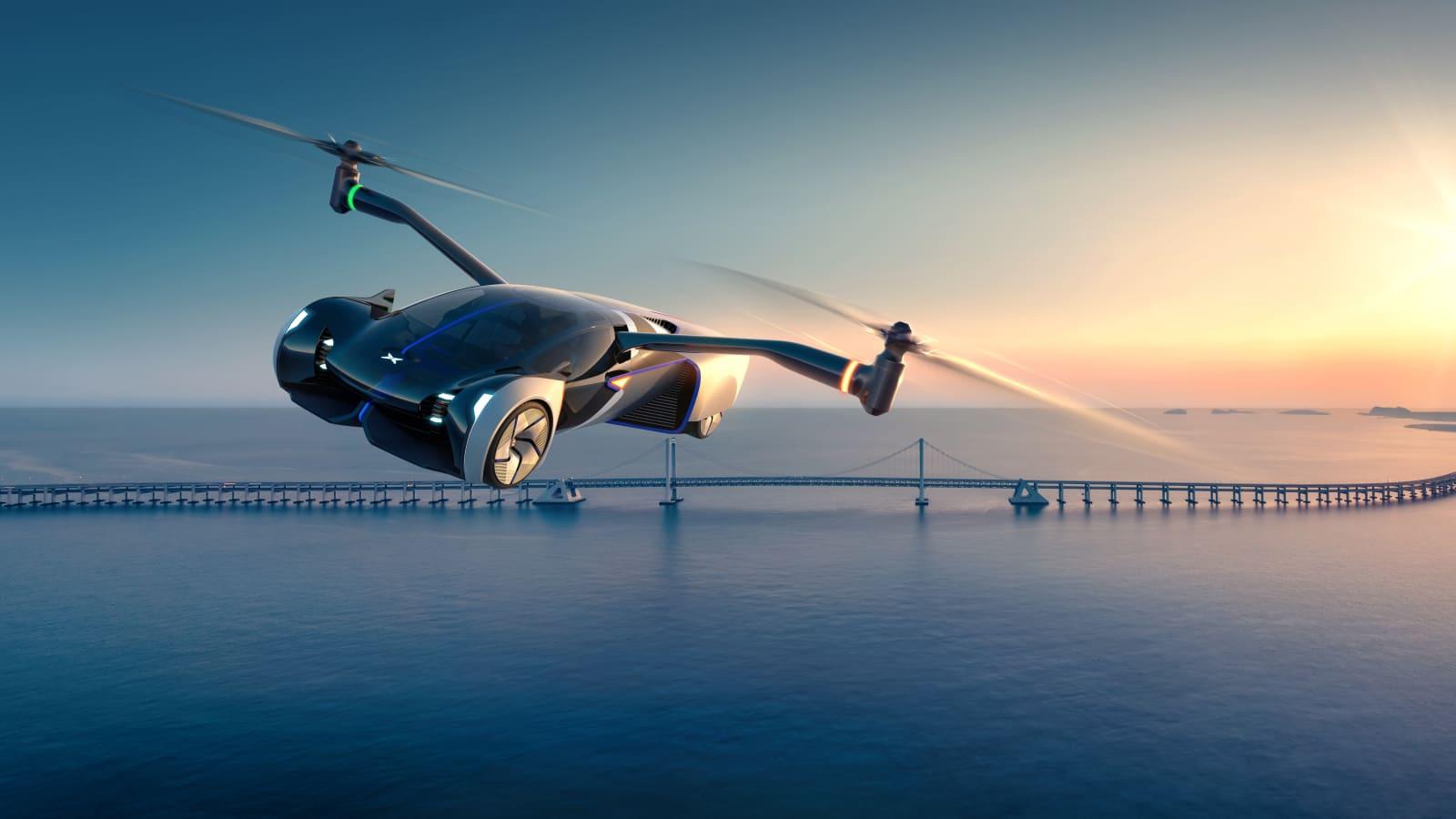
Revolutionizing

innovation that will change the way we work and live
FLYING CARS – Not Only
Are They
Real, They Are Our REALITY From Here Forward
The future is here! The long-awaited flying car has finally arrived and it’s certified to fly The Klein Vision AirCar has received the Certificate of Airworthiness from the Slovak Transport Authority after completing 70 hours of rigorous flight testing This dual-mode car-aircraft vehicle has been designed to change the way we travel forever.


The AirCar is the brainchild of Professor Stefan Klein, the leader of the development team and the test pilot. According to Klein, “AirCar certification opens the door for mass production of very efficient flying cars. It is official and the final confirmation of our ability to change middistance travel forever ” With this certification, AirCar is ready to take on the skies and the roads, offering a new dimension to transportation.
The AirCar has been tested under the most challenging conditions and has shown astonishing stability in aircraft mode. The takeoff and landing procedures were achieved without the pilot touching the flight controls This demonstrates the level of automation and ease of use that AirCar offers.
140. TheOGM.com
10 unique features and applications of the Klein Vision AirCar:
1. Dual-mode vehicle: The AirCar is a dual-mode car-aircraft vehicle, which means it can be driven on roads like a regular car and flown in the air like a small aircraft.

2. Airworthiness certification: AirCar has been issued an official Certificate of Airworthiness by the Slovak Transport Authority, after completing 70 hours of rigorous flight testing.
3. Automated transformation: The AirCar features an automated transformation system that deploys and retracts the wings and tail for the transition between road vehicle and air vehicle modes.

4 Impressive stability: The AirCar has demonstrated astonishing static and dynamic stability in aircraft mode during flight testing, making it a reliable and safe flying car.

5 Mass production potential: The AirCar certification opens the door for the mass production of efficient flying cars, which could revolutionize mid-distance travel.
6 Top speed and range: The upcoming production model of the AirCar is expected to have a top speed of over 300 km/h and a range of 1,000 km, making it a high-performance vehicle both on land and in the air
TheOGM com 141
7 High-powered engine: The AirCar is powered by a 1 6L BMW engine, which provides plenty of power for takeoff and cruising in the air.
8. Ecologically compliant engines: AirCar’s new powerful, lightweight, and efficient ADEPT
Airmotive aviation engine is ecologically compliant, meaning it is designed to minimize environmental impact.
9 Innovative spirit: AirCar’s automated transformation system, advanced engineering, and innovative spirit make it a pinnacle achievement in the new category of flying cars.
10. Engineering marvel: The AirCar is an engineering marvel that combines top innovations with safety measures in line with EASA standards, making it a reliable and unique sports car and aircraft
The development of the AirCar was a mammoth task, taking a team of eight highly skilled specialists and over 100,000 man-hours to convert design drawings into mathematical models with CFD analysis calculations, wind tunnel testing, and a 1:1 design prototype powered by an electric 15KW engine to a 1000kg 2-seat dual-mode prototype powered by a 1 6L BMW engine that achieved the crucial certification milestone.
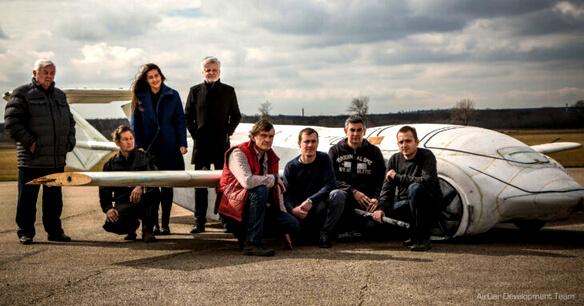
Klein Vision has already completed tests of a new powerful, lightweight, and efficient ADEPT Airmotive aviation engine and finalized drawings and technical calculations for the upcoming monocoque model with a variable pitch propeller expected to reach speeds over 300km/h and a range of 1,000km. This means that AirCar is
expected to get even better, faster, and more efficient in the future
AirCar defines a new category of sports cars and reliable aircraft. Its certification was both challenging and fascinating, as Rene Molnar, the director of the Civil Aviation Division (Transport Authority of Slovakia), explains, “AirCar combines top innovations with safety measures in line with EASA standards ”
The AirCar’s ability to seamlessly transition from a road vehicle into an air vehicle and vice versa is an engineering marvel, says Dr. Branko Sarh, Boeing Co Senior Technical Fellow “It is not only the result of pioneering enthusiasm, innovative spirit, and courage; it is an outcome of excellent engineering and professional knowledge.”
The AirCar is an exciting and innovative project, and its ecologically compliant engines have been selected from ADEPT Airmotive.
The Klein Vision AirCar is a game-changer that offers the ultimate freedom of movement. It is an innovative, reliable, and safe mode of transportation that combines the best of both worlds – the road and the sky With its certification, AirCar is ready to take on the world, and we can’t wait to see what the future holds for this exciting project.
142. TheOGM.com


Renewable Aviation Fuels Revolutionizing Travel
AVIATION INNOVATION

Edmonton International Airport (YEG): Championing innovation for aviation sustainability

Like other airports worldwide, Edmonton International Airport (YEG) is working to reduce emissions from all operations, including groundbased operations, gasoline and diesel fuel for airport vehicles, ground support equipment, electricity and heating, and auxiliary power units The International Air Transport Association (IATA) has committed the industry to reach net-zero emissions by 2050.

SUSTAINABLE RIGHT ACTION

YEG is the first airport in the world to sign Amazon’s Climate Pledge, committing to be carbon neutral by 2040 One way airports are reducing their emissions is by exploring sustainable aviation fuels (SAFs), which can reduce the carbon footprint of aviation fuel by up to 80% In 2018, YEG partnered with Air Canada for a flight from Edmonton to San Francisco that used SAFs, reducing the net emissions by 20%. More recently, YEG supported and hosted KLM Flight 675, which flew non-stop from Amsterdam to Edmonton, setting a record for the longest flight powered by the largest percentage of sustainable aviation fuel.

ELECTRIC & HYBRID-ELECTRIC AIRCRAFT
Electric and hybrid-electric aircraft are another way airlines are reducing their carbon footprint Over 100 electric aircraft designs are in development, and airlines expect to be flying electric planes by the end of the decade. Air Canada has ordered 30 electric aircraft expected to go into service in 2028 YEG and Air Canada signed the first sustainability partnership between an airline and airport to reduce carbon emissions and advance a green and sustainable aviation sector, aiming to reduce the carbon impact of air travel They are working together to test emerging green technologies at YEG’s Airport City Sustainability Campus, focusing on initiatives such as the electrification of aviation equipment and the development and usage of sustainable aviation fuels, biofuels, and hydrogen.

TheOGM com 147
HYDROGEN FUEL CELLS
Hydrogen fuel cell technology is being developed and tested to power aircraft, and larger regional hydrogen-powered aircraft are expected to be in commercial operation in the mid-2030s. YEG is committed to using its Airport City Sustainability Campus ecosystem to pilot emerging hydrogen technologies. They have signed lti l agreements with global compa airport as a testing location fo emission flights, decarbonizin operations, developing hydrog and converting industrial vehic fuel.
YEG is working with the Edmon Hydrogen HUB to kickstart the economy, using Alberta’s natu clean-hydrogen production Be natural advantages, Alberta air access to some of the cheape products in the world, unlockin decarbonize a traditionally har
YEG has had two flights fueled y Air Canada and one with KLM, but more expected in the near future. When it co sustainability in aviation, everyone is a and YEG’s partnership with Air Canada towards reducing the carbon impact of


YEG is leading the way in sustainable in from signing the Amazon Climate Pledg exploring sustainable aviation fuels, ele hybrid-electric aircraft, and hydrogen fu technology. YEG is committed to reduc carbon impact of air travel, and its part with Air Canada is an example of the co
efforts needed to achieve a net-zero aviation industry Alberta’s natural advantages in cleanhydrogen production will help unlock opportunities to decarbonize the aviation sector and position YEG as a leader in sustainable aviation
148. TheOGM.com


Tesla Electric Vehicles Changing The Auto Industry Game AUTO INNOVATION

Tesla Changed The World Forever Here’s How
Tesla Inc. is a company that has revolutionized the renewable energy industry with its innovative technology and sustainable vision. Founded in 2003 by Elon Musk, Tesla has grown to become one of the most influential companies in the world, with a market capitalization of over $1 trillion as of 2022.


152 TheOGM com
Here are 10 reasons why Tesla has been a gamechanger in the renewable energy industry:
Electric Vehicles (EVs) – Tesla’s first product was the Roadster, an all-electric sports car that went into production in 2008 The Roadster showed that electric vehicles could be practical and desirable, and paved the way for Tesla’s other EVs, such as the Model S, Model X, and Model 3. Today, Tesla is one of the leading EV manufacturers in the world, with its vehicles known for their long-range, high-performance, and advanced features. The Tesla Model Y was the 6th best-selling vehicle in America in 2022, with approximately 252,000 units being delivered The Y was by far the best-selling EV last year.
Battery Technology – Tesla’s EVs are powered by advanced lithium-ion batteries, which are also used in its stationary energy storage products, such as the Powerwall and Powerpack. Tesla’s battery technology has been a game-changer in the renewable energy industry, enabling greater adoption of renewable energy sources like solar and wind by providing a way to store and use the energy they generate.
Solar Energy – In 2016, Tesla acquired SolarCity, a solar panel manufacturer and installer, and integrated it into its business. Tesla’s solar products include solar panels, solar roofs, and the Solar Inverter, which converts the DC electricity generated by the solar panels into AC electricity that can be used in homes and businesses. By combining solar energy with Tesla’s battery technology, customers can have a completely sustainable energy system that can power their homes and EVs
Energy Storage – Tesla’s Powerwall and Powerpack energy storage products enable customers to store excess energy generated by their solar panels or other renewable sources, such as wind turbines. This stored energy can then be used during periods of high demand or when the sun is not shining or the wind is not blowing, reducing reliance on fossil fuels.
Supercharging Network – One of the biggest barriers to EV adoption has been the lack of charging infrastructure. Tesla has addressed this issue by building a network of Supercharger stations around the world, which can provide up to 170 miles of range in just 30 minutes of charging. This network has made long-distance travel in an EV possible and has helped to dispel range anxiety among potential EV buyers.
Autopilot – Tesla’s Autopilot system uses advanced sensors, cameras, and algorithms to enable semi-autonomous driving. While not yet fully self-driving, Autopilot can assist with tasks such as steering, braking, and acceleration, making driving safer and more efficient. Autopilot is also constantly improving through over-the-air software updates, which Tesla sends to its vehicles
Gigafactories – To scale up the production of its EVs and batteries, Tesla has built several largescale manufacturing facilities called Gigafactories These factories use advanced automation and robotics to produce EVs and batteries at a lower cost and with greater efficiency than traditional manufacturing methods. Tesla currently has three Gigafactories in operation, with plans to build more in the future.
TheOGM.com 153
Open-Source Patents – In 2014, Tesla made a bold move by announcing that it would opensource all of its patents related to electric vehicles and their components. This decision was aimed at encouraging other companies to develop their own EVs and advance the industry as a whole, rather than hoarding technology for competitive advantage.
Vertical Integration – Tesla’s approach to manufacturing is highly vertically integrated, meaning that it produces many of its own components in-house rather than relying on suppliers. This allows Tesla to have greater control over the quality and cost of its products, as well as the ability to innovate and iterate quickly.
Environmental Impact – Finally, Tesla’s contribution to the renewable energy industry cannot be fully appreciated without considering
By promoting the adoption of EVs and renewable energy sources, Tesla is helping to reduce the world’s dependence on fossil fuels and mitigate the effects of climate change. Additionally, Tesla has committed to using sustainable materials in its products, such as recycled metals and plantbased fabrics.
Tesla Inc. has been a game-changing company in the renewable energy industry, with its innovative technology and sustainable vision From electric vehicles to battery technology, solar energy, energy storage, and more, Tesla has developed products that have helped to shift the world towards a more sustainable future Its approach to manufacturing, environmental impact, and open-source patents have also been notable contributions to the industry. With the continued growth and success of Tesla, it’s clear that the company will continue to play a significant role in shaping the future of renewable energy

154 TheOGM.com

Air Craft & The Future

Electric
Vertical Take-Off & Landing Aircraft

eVTOL Aircraft About to Revolutionize Air Travel


eVTOL stands for electric vertical takeoff and landing and refers to a type of aircraft that is powered by electric motors and is capable of taking off and landing vertically. These aircraft are designed to provide a sustainable and efficient alternative to traditional forms of air transportation, especially for short-distance urban travel.
The history of eVTOL technology can be traced back to the 1960s when the concept of vertical takeoff and landing (VTOL) aircraft was first explored. Over the years, advances in electric motors and battery technology have enabled the development of eVTOL aircraft, which are more environmentally friendly and efficient compared to their predecessors.
Currently, eVTOL technology is in the early stages of development with several companies around the world working on prototypes and testing their viability for commercial use. Some of the companies involved in eVTOL development include Lilium, Joby Aviation, Volocopter, EHang, and Airbus.
As for the safety of eVTOL aircraft for passengers, it is a work in progress and will likely take several more years of testing and certification before they are deemed safe for commercial use. The development of eVTOL aircraft is subject to rigorous safety standards and regulations, and the industry is working closely with regulatory bodies to ensure that these aircraft are safe and reliable before they are put into commercial operation.
The expected timeline for the commercialization of eVTOL aircraft varies, but some estimates suggest that they could be in operation within the next decade.
VTOL to Market
It is difficult to predict with certainty which company will be the first to offer eVTOL (electric vertical takeoff and landing) to the public The development of eVTOL technology is still in its early stages, and several companies are working on prototypes and testing their viability for commercial use. Some of the companies involved in eVTOL development include Lilium, Joby Aviation, Volocopter, EHang, and Airbus.
Each of these companies has made significant progress in developing their eVTOL designs, but there is still much work to be done before these aircraft are deemed safe for commercial use. The timeline for the commercialization of eVTOL technology depends on various factors, including regulatory approval, certification, and the development of supporting infrastructure.
It is likely that several companies will begin offering eVTOL services to the public in the coming years, but it is impossible to predict with certainty which company will be the first. The eVTOL industry is rapidly evolving, and new players are emerging all the time, so it is possible that a company that is not currently well-known could become a leader in the field.
Lilium Jet
Developed by the German company Lilium, the Lilium Jet is an electric vertical takeoff and landing (eVTOL) aircraft designed for shortdistance urban air transportation. The CEO is Daniel Wiegand The aircraft uses 36 electric jets for vertical takeoff and landing and horizontal flight and is powered by batteries. The Lilium Jet is designed and manufactured in Germany and is notable for its unique tilt-wing design
Joby Aviation S4
Developed by the American company Joby Aviation, the Joby Aviation S4 is an eVTOL aircraft designed for urban air transportation The CEO is JoeBen Bevirt. The S4 uses multiple rotors for vertical lift and fixed wings for horizontal flight and is powered by batteries. The Joby Aviation S4 is designed and manufactured in California
Volocopter 2X
Developed by the German company Volocopter, the Volocopter 2X is a multi-copter-style eVTOL aircraft designed for urban air transportation. The CEO is Florian Reuter. The Volocopter 2X uses multiple rotors for vertical lift and stability and is powered by batteries The aircraft is designed and manufactured in Germany
EHang 216
eVTOL Jets About To Hit The Market
There are several eVTOL (electric vertical takeoff and landing) aircraft being developed by various companies around the world, including:
Developed by the Chinese company EHang, the EHang 216 is a passenger drone designed for urban air transportation. The CEO is Huazhi Hu. The EHang 216 uses 16 rotors for vertical lift and stability and is powered by batteries. The aircraft is designed and manufactured in China.
TheOGM.com 159
Airbus Vahana
Developed by Airbus, the Vahana is an eVTOL aircraft designed for urban air transportation. The CEO of Airbus is Guillaume Faury. The Vahana uses a tilt-wing design with multiple rotors for vertical lift and fixed wings for horizontal flight and is powered by batteries. The aircraft is designed and manufactured in Europe.
Beta Technologies AV-8
Developed by the American company Beta Technologies, the AV-8 is an eVTOL aircraft designed for urban air transportation. The CEO is Kyle Clark. The AV-8 uses multiple rotors for vertical lift and stability and is powered by batteries. The aircraft is designed and manufactured in Vermont.
Terrafugia TF-2
Developed by the Chinese company Geely, the Terrafugia TF-2 is an eVTOL aircraft designed for urban air transportation. The CEO of Geely is Li Shufu. The TF-2 uses a tilt-wing design with multiple rotors for vertical lift and fixed wings for horizontal flight and is powered by batteries. The aircraft is designed and manufactured in China.
Jaunt Air Mobility
Developed by the American company Jaunt Air Mobility, the Jaunt Air Mobility eVTOL is an electric vertical takeoff and landing aircraft designed for urban air transportation. The CEO is Martin Peryea and uses a single main rotor for vertical lift and four propellers for forward flight and is all electric. Only rotorcraft design with proprietary Slowed Rotor Compound Technology. The aircraft is designed and manufactured in the United States
Vertical Aerospace VA-1X
Developed by the British company Vertical Aerospace, the VA-1X is an eVTOL aircraft designed for urban air transportation. The CEO is Stephen Fitzpatrick. The VA-1X uses multiple rotors for vertical lift and stability and is powered by batteries. The aircraft is designed and manufactured in the United Kingdom.
Karma Aero eVTOL
Developed by the American company Karma Automotive, the Karma Aero eVTOL is an electric vertical takeoff and landing aircraft designed for urban air transportation. It is developed by the American company Karma Aero, with its CEO being Dr. Joseph Favolise. The Karma Aero eVTOL features a unique design with multiple rotors for vertical lift and stability and is powered by batteries It has a maximum speed of 150 km/h and a range of 100 km The Karma Aero eVTOL is unique due to its focus on sustainability and efficiency in urban air transportation.
eVTOL PILOT TRAINING
There are limited options for training to fly eVTOL aircraft as they are a relatively new and developing technology However, some flight schools and aviation training organizations may offer courses and training programs for pilots looking to learn how to fly eVTOL aircraft. The availability and location of these training programs may vary, so it’s best to check with individual schools and organizations for more information.
160. TheOGM.com
Additionally, many of the companies developing eVTOL aircraft also have their own training programs for their specific aircraft. It’s also possible that as the eVTOL industry continues to grow and mature, more training opportunities for pilots will become available Currently, some of the major companies developing eVTOL aircraft offer training programs for pilots.
Here are a few in-house training programs emerging:

Joby Aviation: They have a pilot training program to train their customers on their eVTOL aircraft

Volocopter: They offer pilot training programs for their eVTOL aircraft, including training on simulator equipment.
Lilium: They offer training programs for their aircraft, including both ground-based and in-flight training.
EHang: They offer training programs for pilots on their eVTOL aircraft.
eVTOL aircraft are designed to provide sustainable, affordable, and accessible air transportation to revolutionize the way people travel. Each design is unique, incorporating different technologies and approaches to meet the challenges of electric flight and vertical takeoff and landing What we know for sure, is that these small, versatile planes will revolutionize the world as they provide an entirely new system for deliveries, airbus, taxis, shortdistance travel, and more Exciting times!

TheOGM.com 161
VISIONARIES IN ACTION
Volterra Technology is a Canadian company that provides innovative energy storage solutions to support the transition to a more sustainable energy future. They offer a range of advanced battery systems, including lithium-ion and lithiumtitanate batteries, that are designed to provide safe, reliable, and efficient energy storage for a variety of applications, including grid-scale energy storage, renewable energy integration, and backup power for critical infrastructure.


VOLTERRA TECHNOLOGY: Battery X Lasts 25 Years 162 TheOGM com
Mark Goorwah, Co-Founder of Volterra Technology says, “Our company is committed to supporting sustainable energy by developing products that help to reduce carbon emissions and promote the adoption of renewable energy sources Their products are designed to improve the stability and reliability of the grid, enabling the integration of more renewable energy and helping to reduce the need for fossil fuel-based energy sources By providing cost-effective and sustainable energy storage solutions, Volterra Technology is helping to drive the transition to a cleaner, more sustainable energy future.”
LITHIUM-TITANATE BATTERY
The Lithium -Titanate battery (LTO) is a type of rechargeable battery that uses Lithium -Titanate as the positive electrode (anode) instead of traditional lithium cobalt It is known for its fast charging capability, long cycle life, and high stability, making it a good choice for applications that require quick charge and discharge, such as backup power, electric vehicles, and grid energy storage.
Volterra Technology has an international network of companies that have partnered with for a global release of the new Volterra BATTERY X which supports industries that use electricity for highly efficient energy storage systems.
Charlie Curtis, Founder & CMO of Volterra Energy says, “Volterra’s Lithium-Titanate battery is known for its High Energy Density, low production cost, fast charging, high power, high thermal stability, and high cycle life. Battery X represents Volterra’s “proprietary additives” that allow for sustainable long-term performance which is usually lacking in a Lithium Titanate battery.”
Battery X is most relevant to the battery energy storage market where high volumes of cells are in demand. Volterra can procure gigawatts of partially assembled battery cells through international sources and do the final assembly of these cells in Canada, keeping wait times in the supply chain to a minimum, and thereby providing quick delivery to system integrators.
Volterra is poised to be one of the most sustainable battery companies on the planet as they:
Support low-cost manufacturing
Source local critical minerals and metals from Canadian mines
Bringing jobs back to Canada
Contribute to a technology development hub in North America
Battery Energy Storage Systems (BESS) are used to store excess energy generated from renewable sources, such as solar and wind, and release it as needed to meet peak demand. BESS also helps to stabilize the electrical grid, improve grid reliability, and reduce greenhouse gas emissions by reducing the need for fossil-fuel-based power plants. Additionally, BESS can provide backup power during outages and support grid management during periods of high demand.
Large scale Battery Energy Storage Systems (BESS) can help with several important issues, including:
Grid stability: BESS can store excess energy generated by renewable sources and release it as needed, helping to stabilize the electrical grid and reduce the need for fossil-fuel-based power plants.
BESS
TheOGM com 163
Renewable energy integration: By storing excess energy generated from renewable sources, BESS can help to integrate more renewable energy into the grid and reduce greenhouse gas emissions.
Grid reliability: BESS can provide backup power during outages and support grid management during periods of high demand, improving the overall reliability of the electrical grid.
Cost savings: By storing excess energy during times of low demand and releasing it during peak demand, BESS can help utilities reduce their reliance on expensive peak power and lower energy costs for consumers
Increased energy security: BESS can provide energy security by reducing dependence on a single source of energy and by providing backup power during outages
ENERGY MANAGEMENT SYSTEMS
An Energy Management System (EMS) is used to monitor and control a Battery Energy Storage System (BESS). An EMS is responsible for:
Monitoring battery performance: The EMS tracks battery performance and state of charge to ensure efficient operation of the BESS.
Controlling battery charging and discharging: The EMS manages the charging and discharging of the battery to optimize energy storage and release.
Integrating with the grid: The EMS integrates the BESS with the electrical grid, allowing energy to be released as needed to meet demand.
Monitoring and controlling safety: The EMS monitors and controls safety systems, such as temperature, voltage, and current, to prevent damage to the battery or danger to personnel.
BATTERY LIFE SPAN
The lifespan of batteries used in Energy Management Systems (EMS) for Battery Energy Storage Systems (BESS) can vary based on several factors such as:
Battery type: Different battery types, such as lead-acid, lithium-ion, and nickel-cadmium, have different lifespans Lithium-ion batteries are typically more expensive but have a longer lifespan compared to lead-acid batteries.
Usage patterns: The frequency and depth of discharge can affect the lifespan of the battery A battery that is regularly discharged to a low state of charge will have a shorter lifespan than one that is discharged less frequently or to a higher state of charge
Operating conditions: The temperature, humidity, and other environmental conditions can affect the lifespan of a battery. Batteries that operate in harsh conditions, such as high temperatures or high humidity, will have a shorter lifespan.
Predicting energy demand: The EMS predicts energy demand based on past usage patterns and real-time information to optimize energy storage and release.
164. TheOGM.com
Typically Lithium-ion batteries have a lifespan of 10-15 years, while lead-acid batteries have a lifespan of 5-10 years However, these are rough estimates, and the actual lifespan of a battery will depend on the factors listed above. Regular maintenance, such as replacing battery components, can also extend the lifespan of a battery.
The Volterra Battery X is capable of lasting 25+ years This battery life extension is a
breakthrough in technology that will allow for longer battery life spans and fewer battery recycling requirements


Volterra Technology can deliver full-battery modules within a 4-6 month timeframe. This advancement is a leading-edge technological battery achievement in Canada.

TheOGM com 165
Climate Conscious





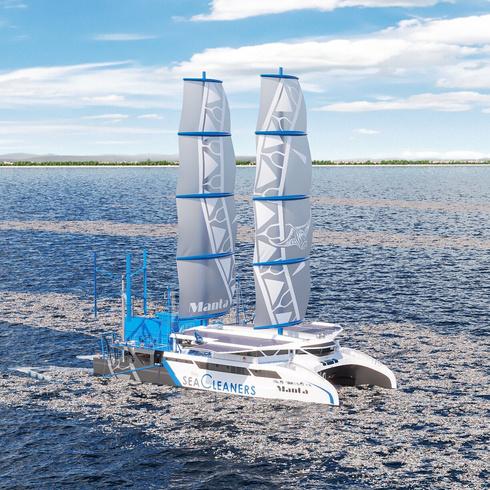

Planet Love





Learning from The Greats
The Story of Patagonia
PATAGONIA It's a beautiful world. Let's keep it that way!

PATAGONIA: Saving the world with its vision and values

Patagonia Environmental Values:
Protect our home planet. We’re all part of nature, and every decision we make is in the context of the environmental crisis challenging humanity. We work to reduce our impact, share solutions, and embrace regenerative practices. We partner with grassroots organizations and frontline communities to restore lands, air, and waters to a state of health; to arrest our addiction to fossil fuels; and to address the deep connections between environmental destruction and social justice.
Think Like Yvon Chouinard:

Prove that business can help save the planet and also be profitable
Yvon Chouinard, the founder of Patagonia, is widely regarded as a pioneer in the outdoor apparel industry He is not just a reluctant businessman but a passionate environmentalist who has dedicated the rest of his life to preserving the planet.
In September 2022, Yvon Chouinard, his spouse and two adult children transferred ownership of the entire company, worth $3 billion, to a purpose trust and 501c4 to fight climate change. The company expects to contribute about $100 million a year to combat climate issues

Yvon Chouinard said, “While we’re doing our best to address the environmental crisis, it’s not enough We needed to find a way to put more money into fighting the crisis while keeping the company’s values intact.” This is the story of how Yvon Chouinard did exactly that.
Who is Yvon Chouinard?

Yvon Chouinard was born in 1938 in Lewiston, Maine. He was raised in Southern California and fell in love with the outdoors at a young age As a high schooler, he found joy being in the wilderness and helped found the Southern California Falconry Club, which he wrote was the most formative time of his life In the late 1950s, he began big-wall rock climbing in Yosemite Valley.
Chouinard started making his own climbing gear because he was dissatisfied with the equipment available at the time This led to the founding of Chouinard Equipment, which later became Black Diamond Equipment.
In 1973, Chouinard founded Patagonia, an outdoor clothing and gear company He started the company with the goal of creating high-quality products that would stand up to the needs of climbing. As the years passed and the realities of the environmental cost of apparel production became more apparent, the company dedicated itself to finding better ways of making quality products. Chouinard has always been vocal about his commitment to the environment and has used his platform as a businessman to advocate for environmental causes. He’s a leader and visionary that we should all aspire to be.


TheOGM com 171
Commitment to Save the Planet
Yvon Chouinard’s commitment to the environment goes beyond just creating eco-friendly products. He believes that businesses have a responsibility to protect the planet and has taken steps to ensure that Patagonia does just that. Since 1985, Patagonia has pledged 1 percent of sales to the preservation and restoration of the natural environment, and in 2002, Yvon Chouinard and Craig Mathews of Blue Ribbon Flies founded “1% for the Planet” an organization whose members donate at least 1% of their annual revenue to environmental causes. Since then, the company has donated over $140 million to environmental organizations. In 2018, the company launched Patagonia Action Works, an effort to mobilize its customers, employees and community to organizations near them working on finding solutions to the climate crisis
Patagonia has various programs aimed toward reducing the environmental impact of its products The company has a program called “Worn Wear,” which encourages customers to repair their old Patagonia products rather than throwing them away. Patagonia also uses recycled materials in its products and has reduced its carbon emissions by using renewable energy sources.
Earth Is Now Our Only Shareholder
Yvon Chouinard says, “Earth is now our only shareholder. If we have any hope of a thriving planet—much less a business—it is going to take all of us doing what we can with the resources we have I never wanted to be a businessman I started as a craftsman, making climbing gear for
my friends and myself then got into apparel As we began to witness the extent of global warming and ecological destruction and our own contribution to it, Patagonia committed to using our company to change the way business was done If we could do the right thing while making enough to pay the bills, we could influence customers and other businesses, and maybe change the system along the way. Patagonia started with products using materials that caused less harm to the environment We gave away 1% of sales each year. We became a certified B Corp and a California benefit corporation, writing our values into our corporate charter so they would be preserved More recently, in 2018, we changed the company’s purpose to: We’re in business to save our home planet.”
In a sea of company growth options, Yvon Chouinard looked to the future and considered the following possibilities for the future of his company:
1 Sell Patagonia and donate all the money But Yvon Chouinard and his team couldn’t be sure a new owner would maintain our values or keep the Patagonia team of people around the world employed
2. Take the company public. However, Yvon Chouinard considered this the wrong move saying, “Even public companies with good intentions are under too much pressure to create short-term gain at the expense of long-term vitality and responsibility. Truth be told, there were no good options available. So, we created our own. Instead of “going public,” you could say we are “going purpose ” Instead of extracting value from nature and transforming it into wealth for investors, we’ll use the wealth Patagonia creates to protect the source of all wealth.”
172. TheOGM.com
“Going purpose” for Yvon Chouinard and the Patagonia team meant enshrining the company’s guiding principle of environmental responsibility through a purpose trust and executing a long-term mission that distributes money to organizations and groups working to find nature-based solutions to save the planet. This is a model of business for all corporations to adapt. This is the way forward.
Why is Yvon Chouinard’s Business Process Unique?
Yvon Chouinard’s process for saving the planet is unique compared to other business growth models He believes that businesses need to move away from a growth mindset and instead focus on responsibility and longevity. Yvon Chouinard has spoken out against the idea of “growth for growth’s sake,” and instead advocates for a more holistic approach to business
One of the ways Yvon Chouinard has implemented this approach is by prioritizing the environment over profits Patagonia has turned down potential profits by refusing to sell products that are not environmentally responsible. Yvon Chouinard believes that this approach is necessary to protect the planet for future generations
Yvon Chouinard has also encouraged other businesses to adopt sustainable practices. He has written a book called “The Responsible Company,” which outlines the steps businesses can take to become more environmentally friendly. Yvon Chouinard has also spoken out about the need for systemic change in the way we think about business.
Yvon Chouinard prioritizes the environment over profits.
This approach is unusual in the business world, where profits are often seen as the most important metric of success. Yvon Chouinard advocates for a more holistic approach to business. He believes that businesses have a responsibility to protect the planet and the notion of maximizing profits is quickly draining the planet of resources and leading to larger and larger wealth gaps.
Yvon Chouinard’s commitment to corporate responsibility is not just lip service. He has implemented various initiatives within Patagonia to reduce the company’s environmental impact, such as using renewable energy and recycled materials Patagonia’s “Worn Wear” program also encourages customers to repair and reuse their products, rather than buying new ones.
Yvon Chouinard’s approach to business has had a significant impact on the outdoor industry. Patagonia’s commitment to sustainability has set it apart from its competitors and has inspired other companies to adopt more environmentally friendly practices
Yvon Chouinard’s advocacy for environmental causes has extended beyond his role as a businessman He personally helped fund conservation projects in South America, including the recent protection of the Mitre Peninsula in the Patagonia region. Yvon Chouinard’s activism has made him a leading voice in the environmental movement and has inspired others to take action
TheOGM com 173
Put Your Money Where It Cares For The Planet

Yvon Chouinard’s commitment to environmental responsibility is a shining example of what businesses can achieve when they prioritize the environment over profits As consumers, we have the power to support companies like Patagonia that prioritize purpose over profit.

By choosing to buy products from environmentally friendly companies, we can help create a demand for more sustainable practices in the business world. It is up to all of us to take action to protect the planet for future generations, and Yvon Chouinard’s example shows us that it is possible to do so while still running a successful and profitable business.
As companies think and act like Yvon Chouinard we can all understand that businesses of our time can help save the planet and also be profitable.

174 TheOGM com

SOLAR-POWERED MANTA: Plastic Garbage Collecting Ship
The world’s oceans are in trouble, and plastic pollution is one of the most pressing environmental challenges of our time. Plastic waste accumulates in our seas, harming marine life and ecosystems, and even ending up in the seafood that we eat. To combat this problem, a team of engineers has designed a solar-powered boat that cleans garbage from the ocean, called the MANTA.

176 TheOGM.com
The MANTA is an autonomous vessel that is powered by renewable energy, making it an environmentally friendly solution to a critical environmental issue. The boat uses a combination of solar panels, batteries, and electric motors to operate It is designed to collect floating garbage, such as plastic bottles, bags, and other debris that litters our oceans. The MANTA can be deployed in areas with high levels of pollution, such as river deltas, coastal cities, and shipping lanes
The MANTA was developed by the German engineering company, RanMarine Technology. The company’s founder, Richard Hardiman, was inspired to design the MANTA after witnessing the devastating effects of plastic pollution on marine life. Hardiman and his team recognized the need for an efficient and effective way to clean up our oceans, and the MANTA was born
The MANTA’s design is based on the manta ray, a large fish that is known for its graceful movement through the water The boat’s unique shape allows it to glide effortlessly through the water, collecting trash as it goes. The MANTA is equipped with sensors that allow it to detect and avoid obstacles, such as other boats or marine life It is also designed to be able to operate in all weather conditions, ensuring that it can continue to collect garbage even in rough seas.
The MANTA’s solar panels are positioned on the top of the boat’s wings, which allows them to collect as much sunlight as possible. The panels are connected to batteries, which store the energy for use when the sun isn’t shining. The boat’s electric motors are highly efficient, allowing it to travel at speeds of up to five knots while using very little power.
The MANTA is controlled by an onshore team, who use a remote control to guide the boat through the water. The team can monitor the boat’s progress and receive data on the amount of garbage that has been collected. The collected trash is stored on the boat, and when it is full, the MANTA returns to shore to dispose of the garbage.
The MANTA has already been deployed in several locations around the world, including the ports of Rotterdam and Dubai. In Rotterdam, the MANTA collected over 1500 kilograms of garbage in just three weeks, demonstrating its effectiveness at cleaning up our oceans The boat has also been used in the ports of Barcelona, Hamburg, and Singapore.
The MANTA’s impact goes beyond just cleaning up garbage By using renewable energy, the boat is reducing its carbon footprint and helping to combat climate change. The MANTA’s autonomous operation also reduces the need for human intervention, making it a safer and more cost-effective solution than traditional garbage collection methods.
COLLECTING OCEAN WASTE
The amount of waste that the MANTA can collect depends on a variety of factors, such as the size of the boat, the amount of time it spends in the water, and the density of the garbage in the area it is deployed According to the manufacturer, the MANTA has a daily capacity of collecting up to 2000 pounds (907 kg) of floating garbage, which is equivalent to about 2.5 cubic meters of waste.
TheOGM com 177

During a trial period in Rotterdam, the MANTA was able to collect over 1500 kilograms of garbage in just three weeks. This demonstrates the boat’s effectiveness at cleaning up our oceans, particularly in high-density garbage areas such as ports and river deltas
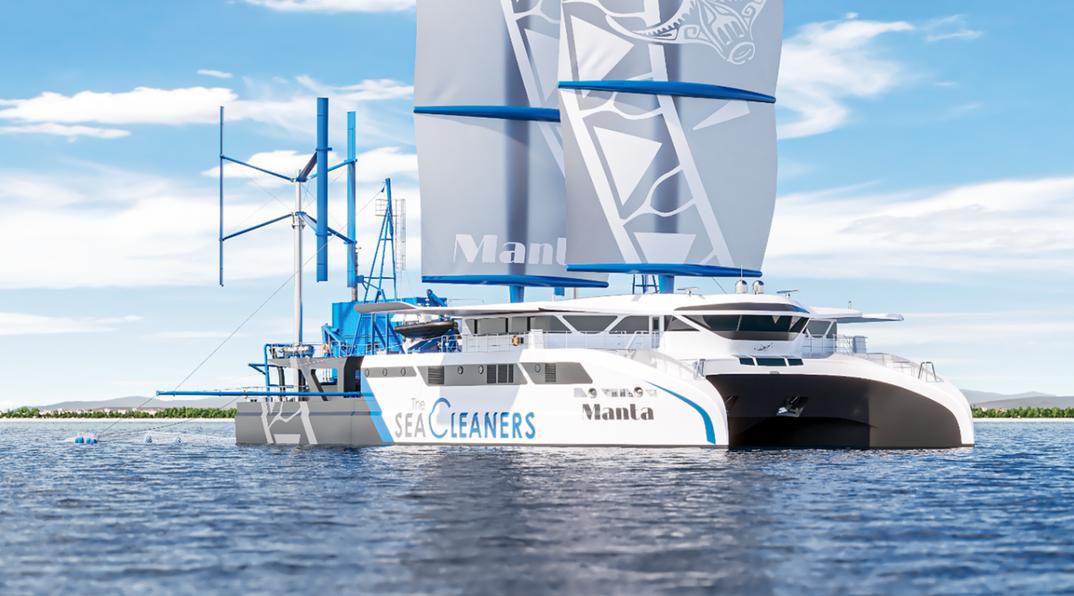
It’s important to note that the MANTA is just one tool in the fight against plastic pollution in our oceans, and it should be used in conjunction with other efforts to reduce waste and improve recycling. The boat is designed to complement traditional waste collection methods and can be particularly effective in areas that are difficult to access by other means
OCEAN PLASTIC CLEANUP
The MANTA is just one example of the innovative solutions that are being developed to combat plastic pollution in our oceans. Governments, businesses, and individuals all have a role to play in reducing our reliance on plastic and ensuring that we protect our oceans for future generations.
The MANTA is an inspiring example of how technology can be used to address critical environmental challenges The boat’s innovative design, autonomous operation, and use of renewable energy make it an effective and sustainable solution to the problem of plastic pollution in our oceans As we continue to face the pressing issue of plastic waste in our oceans, it is important to support and promote initiatives like the MANTA, which offer a glimpse of a cleaner and more sustainable future
TheOGM com 179
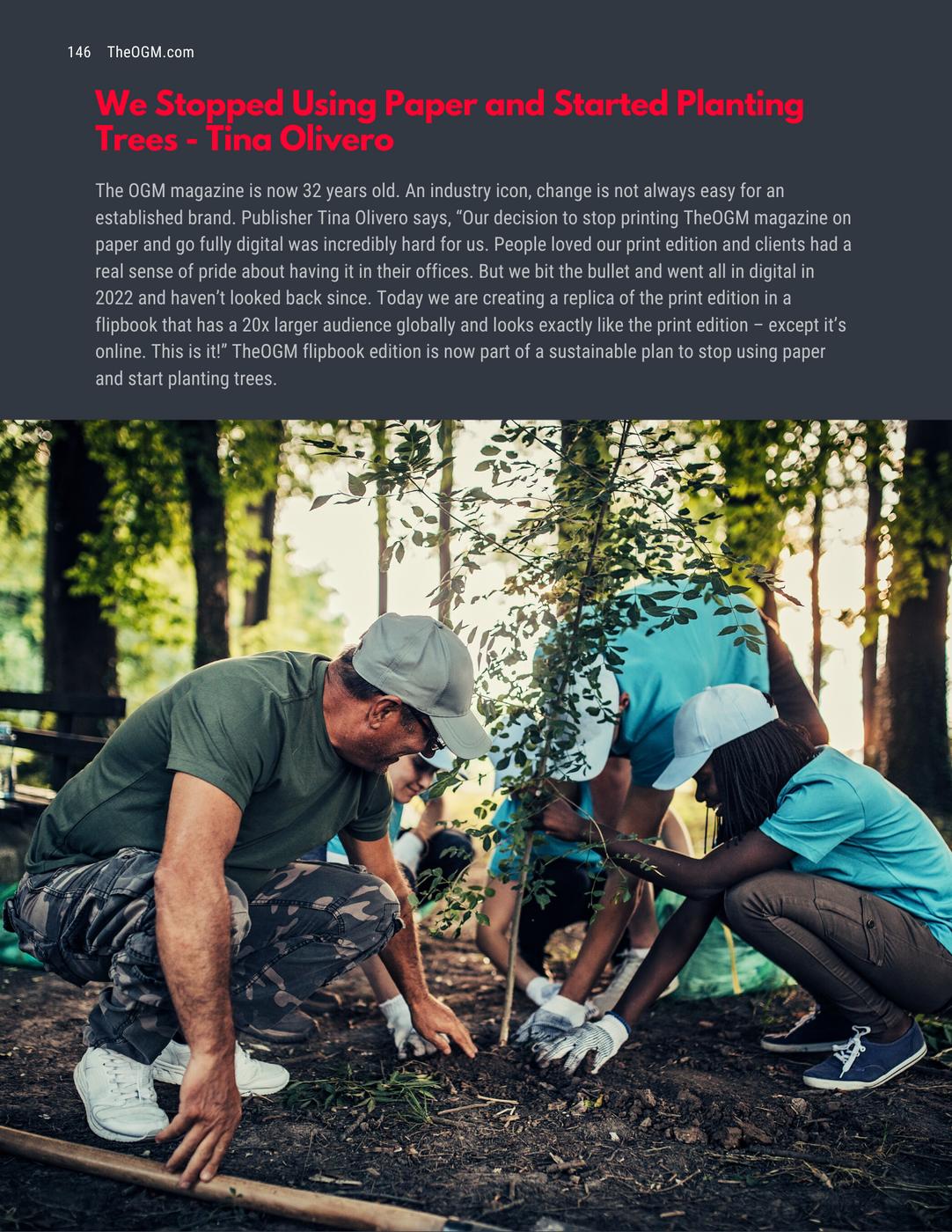
READY TO PLANT SOME TREES?
Olivero says, “Planting trees is one of the best ways to combat climate change and protect our environment. Trees provide us with oxygen, absorb carbon dioxide from the air, reduce erosion, and provide habitat for wildlife As the world becomes more aware of the impact of climate change, many individuals and companies are taking steps to reduce their carbon footprint, and one company that is leading the charge is LetsPlantTrees ca Last year we used advertising profits to plant 1000 trees with Let’s Plant Trees. Essentially our advertising dollars support trees being planted and helping the environment. We are really excited about that!”
LET’S PLANT TREES
LetsPlantTrees.ca is a company that is dedicated to reforestation and planting trees to help fight climate change They work with partners and volunteers to plant trees in areas that have been affected by deforestation, natural disasters, and other environmental issues. They have already planted millions of trees in BC and their goal is to plant as many trees as possible
Planting trees is not only good for the environment, but it also has many benefits for businesses Companies that use paper products can reduce their environmental impact by planting trees and using recycled paper products. By planting trees, businesses can offset their carbon emissions and demonstrate their commitment to sustainability
LetsPlantTrees.ca offers a variety of services for businesses that want to get involved in reforestation efforts They can help companies develop a reforestation strategy that is tailored to their specific needs and goals. They can also provide guidance on choosing the right trees to plant and how to maintain them
CEO and President of Let’s Plant Trees, David Tonken says, “Recently we’ve been working in the Northwest Territories assessing potential tree planting sites This picture above is taken with Tlicho elders and tree-planting experts on Tlicho land in the NWT.
David adds, “We are currently planting trees in the interior of BC where we plant an average of 1 5 million trees a year. We planted 1,000 trees on behalf of OGM last year on the McLeod Lake Indian Band lands northwest of Prince George BC ”
FIRST NATIONS CULTURAL AND ECONOMIC BENEFITS
The trees we plant provide cultural and economic opportunities for the First Nations on whose land we plant. They rely heavily on a healthy forest and by kickstarting forest regeneration we attempt to restore the land decades sooner than would otherwise be the case Local communities provide planting support through the provision of labor, camp supplies, environmental monitors, and long-term site maintenance. The planted trees sequester carbon, assist in erosion control, and will eventually provide a natural habitat for thousands of forest species.
TheOGM com 181
In addition to their reforestation efforts, LetsPlantTrees ca also offers carbon offsetting services for businesses. By offsetting their carbon emissions through reforestation, businesses can reduce their environmental impact and demonstrate their commitment to sustainability.



There are many reasons why companies should consider planting trees and reducing their paper usage By doing so, they can reduce their carbon footprint, demonstrate their commitment to sustainability, and contribute to the fight against climate change. LetsPlantTrees.ca is an excellent resource for businesses that want to get involved in reforestation efforts and make a positive impact on the environment.
Planting trees is an important step in combating climate change and protecting our environment Companies can reduce their environmental impact by planting trees and reducing their paper usage. LetsPlantTrees.ca is a company that is leading the charge in reforestation efforts and can help businesses develop a strategy that is tailored to their needs and goals. Let’s all work together to plant more trees and create a sustainable future for generations to come
182 TheOGM com

TheOGM com 183 We Stopped Using Paper And Started Planting Trees - You Can Too!
Culture











People, Places & Things








BEE HIVE ACTION: From Vacant Lots to Honey Bee Plots

Detroit, Michigan is a city that has faced many challenges over the years, including a significant loss of population and the closure of numerous industrial plants. Despite these challenges, Detroit has become a hub of urban farming, with a growing number of residents turning to agriculture as a way to revitalize their city and promote sustainability. Among these urban farmers are a group of beekeepers who are using vacant lots to help bees thrive in an urban environment

186 TheOGM com
REHABILITATING URBAN LOTS
Detroit’s urban bee farmers are working to increase the population of honeybees, which play a crucial role in the pollination of plants, including those that produce the food we eat. Honeybees are responsible for pollinating approximately onethird of the food we consume, and their numbers have been declining in recent years due to a variety of factors, including habitat loss and pesticide use. By providing safe habitats for bees in the city, Detroit’s urban bee farmers are helping to ensure that these important pollinators can continue to thrive and support local agriculture.
Many of the vacant lots in Detroit are overgrown and neglected, which makes them ideal habitats for bees Bees are attracted to wildflowers, which are often found growing in abundance in these lots. The urban bee farmers work to clear out trash and debris from the lots and plant wildflowers and other pollinator-friendly plants These plants provide a source of food for the bees and other pollinators and also help to beautify the city and promote biodiversity.
DETROIT HIVES ORGANIZATION
One of the most notable urban bee farms in Detroit is the Detroit Hives Apiary. This bee farm is located on a vacant lot on the city’s east side and is run by Timothy Paule and Nicole Lindsey
The couple founded Detroit Hives in 2017 with the goal of transforming blighted properties into functional and sustainable apiaries. Today, Detroit Hives has six active beehives and provides honey to local restaurants and retailers. The farm has also become a popular destination for visitors, who come to learn about beekeeping and the importance of pollinators in the urban environment
Detroit Hives is one of the most prominent urban bee farms in Detroit, and they are actively involved in supporting and promoting urban beekeeping in the city. Here are some of the things that detroithives.org is doing to support the urban beekeeping movement in Detroit:
Transforming vacant lots into bee-friendly habitats – Detroit Hives is working to transform vacant lots in the city into functional and sustainable apiaries They clear out trash and debris from the lots, plant wildflowers and other pollinator-friendly plants, and install beehives. This creates safe habitats for bees and helps to promote biodiversity in the city.
Educating the public – Detroit Hives is committed to educating the public about the importance of pollinators and sustainable agriculture They hold workshops, classes, and events that teach people about the role of bees in our food system and how to keep them. They also offer tours of their apiary, which is a popular destination for visitors Selling honey and other bee-related products – Detroit Hives sells honey and other bee-related products, such as lip balms, candles, and soaps These products are made with honey and beeswax from their own hives, and the proceeds help to support their efforts to promote sustainable urban beekeeping.
Advocating for policy changes – Detroit Hives is actively involved in advocating for policies that support urban beekeeping. They played a role in the passage of Detroit’s beekeeping ordinance, which allows residents to keep up to five beehives on their property. They also work with other organizations to promote sustainable agriculture and biodiversity in the city.
1.
2.
3.
TheOGM com 187
4
Overall, Detroit Hives is doing a lot to support and promote urban beekeeping in Detroit Their efforts are making a real difference in the lives of bees and the people who rely on them, and they are helping to create a more sustainable and biodiverse city


RESIDENT BEE HIVES
The success of Detroit’s urban bee farmers has not gone unnoticed, and the city has taken steps to support their efforts. In 2016, the city passed an ordinance that allows residents to keep up to five beehives on their property, as long as they follow certain regulations. The ordinance was passed in response to the growing demand for urban beekeeping and has helped to create a more supportive environment for Detroit’s urban bee farmers
THE WAY TO BEE
Detroit’s urban bee farmers are a shining example of how individuals can make a positive impact on their communities and the environment. By using vacant lots to provide safe habitats for bees, these farmers are promoting sustainability and biodiversity in an urban environment. Their efforts are helping to raise awareness about the importance of pollinators and sustainable agriculture, and are making a real difference in the lives of bees and the people who rely on them. As Detroit continues to transform itself into a hub of urban farming, the city’s beekeepers are sure to play an important role in its success
THE WORLD IS IN OUR HANDS

LET'S TAKE CARE OF HER

PLANETLOVE
THEOGM.COM
VOLUNTEERS GO GREEN
THE WALKING FOREST How 1000 volunteers created a mobile greener city

The Dutch city of Leeuwarden has recently been the focus of attention thanks to an unusual initiative that brings a renewed sence of nature and greenery to the city streets. A group of over 1000 volunteers has created a “walking forest,” a mobile forest made up of 1000 trees that can be moved around the city and serve as a model for a greener future.

The project, which began in 2018, was inspired by the desire to create a more sustainable and ecologically sound urban environment. The volunteers came from all walks of life and backgrounds, united by their common goal of making Leeuwarden a more livable and sustainable city. They scoured nearby forests to find the best trees for their project and worked tirelessly to gather the trees and prepare them for planting
The walking forest is made up of trees planted in wheelbarrows, allowing them to be moved around the city easily. The trees are planted in a variety of locations, including streets, public spaces, and parks, creating a “ green wave” that moves through the city over time. The mobile forest is not just a beautiful sight, but also an innovative solution to the problem of creating green spaces in densely populated urban areas
GREENER ENVIRONMENTS
The walking forest has been a hit with residents of Leeuwarden, who appreciate the benefits of living in a greener environment. The trees not only beautify the city’s streets but also help to mitigate air pollution and noise. The mobile forest also serves as a model for other cities looking to create a greener future
The walking forest initiative is part of a larger effort by Leeuwarden to become a more sustainable and livable city The city has implemented a number of policies aimed at reducing carbon emissions, promoting renewable energy, and creating green spaces. The walking forest is just one example of how the city is taking a creative and innovative approach to achieve these goals.
In addition to the environmental benefits, the walking forest initiative has also had a positive impact on the community. The volunteers who created the walking forest have formed a tightknit community of like-minded individuals, united by their passion for sustainability and the environment. The project has also brought together residents of Leeuwarden, who share a common vision of a greener and more livable city.
1000 VOLUNTEERS MAKE IT HAPPEN
The walking forest has garnered international attention, with cities around the world expressing interest in replicating the project. The initiative has been recognized with a number of awards, including the Dutch Design Award and the Green Solutions Award.
The walking forest of Leeuwarden is a testament to the power of community and innovation in creating a greener future. By mobilizing a group of over 1000 volunteers, the city has shown that it is possible to create sustainable and livable urban environments that benefit both people and the planet. As more cities around the world face the challenges of climate change and urbanization, the walking forest serves as an inspiring example of what can be achieved through creativity, innovation, and community spirit.

TheOGM com 191
ECONOMIC PROSPERITY
The story of Luxembourg’s economic success is one of the ages A tale of a small nation that rose from the ashes of war to become one of the wealthiest nations in the world. From its humble beginnings as a rural farming community to a thriving center for commerce and industry, Luxembourg has become a global powerhouse, leaving the world in awe of its incredible achievements.


Luxembourg’s Economic Triumph The Rise of a Global Powerhouse 192. TheOGM.com
Luxembourg, a tiny country in Western Europe, is often regarded as the world’s wealthiest nation. With a high GDP per capita and a high standard of living for its citizens, the country has become a model for economic success.

Luxembourg’s strategic location at the heart of Europe has played a critical role in its success The country is situated at the crossroads of major European economic and transport corridors, making it an ideal hub for international trade and commerce Its central location also makes it an attractive destination for businesses, particularly those in the financial sector, looking to expand their operations into other European markets.
Luxembourg’s close proximity to major cities such as Paris, Brussels, and Frankfurt, and its well-developed transport infrastructure, including a modern airport and high-speed rail links, have further enhanced its position as a key business hub. The country’s strategic location has enabled it to forge strong economic and political ties with neighboring countries, contributing to its overall prosperity and success.
Business Sectors Fuelling Luxembourg’s Economic Boom
Luxembourg owes its success to a diversified economy that includes a plethora of industries. Here are the top business sectors that have contributed significantly to the country’s economic triumph:


TheOGM com 193
Financial Services
Luxembourg is a global leader in financial services, offering a business-friendly environment and favorable tax laws that attract multinational corporations and high-net-worth individuals from around the world.
Luxembourg’s financial services industry is a major contributor to the country’s economy, accounting for around 35% of its GDP The industry began to take shape in the 1950s when the country established itself as a center for cross-border banking. Luxembourg’s favorable tax laws and business-friendly environment attracted multinational corporations and high-net-worth individuals, leading to the development of a thriving financial services industry.
Manufacturing
Luxembourg’s manufacturing sector specializes in high-end products such as steel, machinery, and chemicals, contributing significantly to the country’s economy. The industry has its roots in the country’s iron and steel industry, which dates back to the 19th century.
Luxembourg’s location in the heart of Europe and its access to natural resources such as iron ore made it an ideal location for steel production. Over time, the industry diversified into other areas such as machinery and chemicals, contributing significantly to the country’s economy.
Information and Communication Technology (ICT)
The country’s thriving ICT sector provides advanced digital services, including software development, cybersecurity, and data management. Luxembourg’s ICT sector is a growing industry that includes software development, cybersecurity, and data management
The ICT industry emerged in the 1990s when the government began to promote the development of the ICT sector as a way to diversify the economy Today, Luxembourg is home to a number of global ICT companies, attracted by the country’s favorable business environment and skilled workforce.
Diversified Economy
Luxembourg’s diverse economy has allowed the country to weather economic storms and thrive in a rapidly changing global economy The country’s diverse economy has been a key factor in its economic success. With a range of industries, including finance, manufacturing, technology, and renewable energy, Luxembourg has been able to weather economic downturns by relying on multiple sectors. This diversification has also allowed the country to adapt to changing market conditions and technological advancements, remaining competitive in a rapidly changing global economy.
The government’s commitment to fostering a business-friendly environment and investing in research and development has attracted global corporations and entrepreneurs to the country, fuelling innovation and growth across all sectors.
194 TheOGM.com
With a highly skilled workforce, favorable tax laws, and a supportive regulatory environment, Luxembourg has positioned itself as an attractive destination for businesses looking to establish a presence in Europe. The country’s diversification and commitment to innovation are key drivers of its economic success, ensuring that it remains a leader in global business and finance for years to come.
Biotech and Life Sciences
Luxembourg’s biotech and life sciences sector offers cutting-edge research and development, making it a hub for innovation and scientific advancement. Luxembourg’s biotech and life sciences sector is a hub for innovation and scientific advancement. The industry began to take shape in the 1980s when the government began to invest in research and development
Today, Luxembourg is home to a number of biotech and life sciences companies, attracted by the country’s supportive research environment and skilled workforce
Logistics and Transportation
The country’s central location in Europe has enabled it to develop a robust transportation and logistics industry, with an international airport and seaport facilitating trade between Europe and other regions of the world. The industry has its roots in the country’s history as a center for iron and steel production, with transportation and logistics playing a critical role in the industry’s supply chain.
Luxembourg is the first country in the world to offer free public transport for all, making it easier and more affordable for residents and visitors to move around the country. The free transport system was introduced in March 2020 and applies to all trains, trams, and buses within the country. The move is part of the government’s efforts to reduce congestion, improve air quality, and encourage the use of public transport. It is also expected to boost the country’s tourism industry by making it more accessible for visitors to explore different regions and attractions. The initiative has been well-received by locals and tourists alike, with many praising it as a forwardthinking and sustainable approach to transportation.
Creative Industries & Tech
Luxembourg’s creative industries sector is a growing industry that includes film production, music, design, fashion, media and more.
The industry emerged in the 1990s when the government began to promote the development of creative industries as a way to diversify the economy. Today, Luxembourg is home to a number of creative industry companies, attracted by the country’s supportive business environment and talented workforce.
One notable example of setting up a shop in Luxembourg is Amazon Amazon established its European headquarters in the country, employing thousands of people in areas such as software development, marketing, and logistics.
TheOGM com 195
Similarly, Skype, the popular communication app, was founded in Luxembourg in 2003, taking advantage of the country’s favorable tax policies and supportive business environment.
Luxembourg is home to a number of media and entertainment companies, including RTL Group, the largest television and radio broadcasting company in Europe.
The country has also attracted a range of video game development studios, such as Trion Worlds and Bigpoint, which have taken advantage of Luxembourg’s skilled workforce and favorable business environment
Real Estate
Luxembourg’s real estate sector is booming, driven by the country’s growing population and the demand for high-end housing. The industry has its roots in the country’s history as a center for iron and steel production, with real estate development playing a critical role in providing housing for the industry’s workforce.
Construction
The country’s construction industry is growing rapidly, with significant investments in infrastructure, including transportation, housing, and energy. The industry developed as the country harnessed iron and steel production, with construction playing a critical role in the industry’s supply chain.
Tourism
Luxembourg’s rich history, stunning landscapes, and cultural attractions have made it a popular destination for tourists from around the world. The country’s tourism industry is a growing sector, with a focus on luxury accommodations, fine dining, and cultural experiences. Luxembourg has invested in its tourism infrastructure in recent years, including the construction of new hotels and the development of new cultural attractions
Skilled Workforce
Luxembourg has a highly skilled and educated workforce, with a strong education system that emphasizes vocational training and adult education programs. One of the interesting initiatives taken on by Luxembourg is the digital accessibility program
Luxembourg’s Digital Accessibility initiative aims to improve access to digital platforms for people with disabilities The government has developed guidelines and best practices for digital accessibility and is working with businesses and organizations to ensure they comply with these standards The initiative has been well-received, with many companies and organizations embracing the guidelines and partnering with the government to promote digital inclusion. By fostering collaboration and promoting digital accessibility, Luxembourg is creating a more inclusive and innovative digital landscape that benefits all citizens, demonstrating its commitment to creating a society that values diversity, inclusion, and innovation in the digital age
196 TheOGM.com
Social Welfare System
The government provides generous social security benefits, ensuring that its citizens enjoy a high standard of living. Luxembourg has a comprehensive social welfare system that provides support to citizens in various areas, including health care, pensions, family benefits, unemployment benefits, and social assistance. The system is designed to ensure that everyone has access to the resources they need to live a dignified life, regardless of their income or circumstances. The country’s social welfare system is funded through a combination of employer and employee contributions, as well as government subsidies, and is managed by the National Social Security Fund. The system is known for its efficiency, accessibility, and highquality services, which have contributed to Luxembourg’s reputation as a country with a high standard of living. The government regularly reviews and updates the system to ensure that it remains relevant and effective in meeting the changing needs of citizens
Efficient Public Administration
Luxembourg’s small size has allowed it to develop an efficient public administration system, enabling the government to implement policies quickly and effectively. Luxembourg is renowned for its efficient public administration, which has played a crucial role in the country’s economic and social success.
Human resources: The government places a high value on its employees and has developed a strong training and development program to ensure they have the necessary skills to provide high-quality public services.
Simplification: The government has simplified administrative procedures to reduce bureaucracy and make it easier for citizens and businesses to access public services
Transparency: The government is committed to transparency and regularly communicates with citizens to keep them informed about public services and policies
International cooperation: The government collaborates with international organizations and other countries to share best practices and improve public administration on a global scale
By focusing on these key points, Luxembourg has been able to create a public administration system that is efficient, transparent, and accessible, contributing to the country’s overall success.
Renewable Energy
The government’s strategy includes the following key points:
Digitalization: The government has invested in digital technologies to streamline administrative processes and improve accessibility to public services
In recent years, Luxembourg has continued to expand its renewable energy industry, investing in solar and wind energy, as well as research and development to advance technology in the sector The government has set ambitious targets to reach 100% renewable energy by 2050, and the country is well on its way to achieving this goal. In 2020, 11% of the country’s electricity production came from wind power, and 4% came from solar energy.
TheOGM com 197
With ongoing investments in green energy, Luxembourg is poised to become a leader in combatting climate change, demonstrating how small countries can make a big impact on global efforts to reduce greenhouse gas emissions.


In addition to promoting renewable energy production, Luxembourg is also taking steps to reduce energy consumption through energyefficient buildings and smart transportation systems
The country’s focus on sustainable development and innovative solutions to environmental challenges is attracting international attention, positioning it as a leader in the fight against climate change. As the world continues to face the consequences of climate change, Luxembourg’s investment in renewable energy and sustainable development will play a crucial role in creating a more sustainable future for all.
Quick Government Action = Success
Luxembourg’s small size has allowed it to develop an efficient public administration system, enabling the government to implement policies quickly and effectively The government has also been proactive in promoting sustainable development, with initiatives aimed at reducing the country’s carbon footprint and promoting renewable energy sources.
Luxembourg’s economic success
can be
attributed to its highly developed financial and industrial sectors, diversified economy, highly skilled and educated workforce, strong social welfare system, and efficient public administration.
The country’s business-friendly environment, favorable tax laws, and regulatory framework have made it an attractive destination for multinational corporations and high-net-worth individuals. The country’s economic policies, combined with its strategic location in the heart of Europe, have allowed it to thrive and become a model for economic success.

The Future of Luxembourg’s Economic Success
Luxembourg’s diverse range of industries has contributed to its economic success, with each sector playing a critical role in the country’s growth and development
The government’s commitment to fostering a business-friendly environment and investing in research and development has attracted global corporations and entrepreneurs to the country, helping to drive innovation and growth across all sectors As Luxembourg continues to evolve and diversify its economy, it is poised to remain a leader in global business and innovation.
Luxembourg’s economic success story is far from over The country continues to invest in its infrastructure, diversify its economy, and promote sustainable development, ensuring that it remains a global powerhouse for years to come. Its incredible achievements are a testament to the human spirit of innovation, hard work, and determination, and serve as an inspiration to nations around the world.
TheOGM com 199
TOP CLIMATE CHANGE SHOWS ON NETFLIX
The message is not to create fear, but rather it is to act and act now on behalf of our planet
– Tina Olivero, Publisher TheOGM com
Netflix offers a diverse range of climate change documentaries that provide a comprehensive look at the various aspects of the issue of climate change and its impacts on the planet and its inhabitants.

Netflix documentaries are helping to raise awareness and increase engagement with a global audience through incredible series, that are not only educational but are a catalyst for right action.
Here are ten of the top climate-conscious documentaries that are sure to bring insight into our changing world. Get your popcorn, tuck into it, and get ready to see where you might fit into the new energy change movement

Netflix documentaries present different perspectives on the issue of climate change, from science-based examinations of the causes and impacts to more personal and human-centered stories that showcase the human toll of the climate crisis
Netflix is a global platform, which means that the documentaries on its platform are accessible to a large and diverse audience which in turn helps to promote international cooperation and action on climate change. Do whatever you can to take action, get the world out there, and make THE DIFFERENCE!
TOP 10 CLIMATE CHANGE DOCUMENTARIES
“An Inconvenient Sequel: Truth to Power” – This film is a follow-up to Al Gore’s 2006 documentary “An Inconvenient Truth ” It focuses on the progress that has been made in addressing climate change since the release of the original film, as well as the challenges that remain. It highlights the increasing urgency of the situation and calls for action on a global scale to reduce greenhouse gas emissions and prevent the worst effects of climate change.
“The 11th Hour” – This film explores the state of the planet and the consequences of human actions on the environment. It features experts in various fields, including climate science, ecology, and economics, who discuss the challenges facing the planet and offer solutions for a more sustainable future.
The filmmakers use innovative techniques to capture the beauty and fragility of these ecosystems and bring attention to the urgent need to protect them.
“Cowspiracy: The Sustainability Secret” – This film explores the impact of animal agriculture on the environment and the role it plays in driving deforestation, water depletion, and greenhouse gas emissions The filmmakers argue that the meat and dairy industry is one of the largest contributors to climate change and that a shift towards a plant-based diet is necessary for a sustainable future.
“Before the Flood” – This film follows Leonardo DiCaprio as he travels the world to better understand the impacts of climate change and what can be done to address it He meets with scientists, activists, and world leaders to discuss the current state of the planet and the steps that need to be taken to prevent the worst consequences of climate change.
“Our Planet” – This documentary series, produced by the World Wildlife Fund and Netflix, takes a closer look at the diversity of life on our planet and the threats it faces, including climate change, deforestation, and overfishing The series showcases the beauty and complexity of the natural world and highlights the need for action to protect it.
“Chasing Coral” – This film takes a closer look at the world’s coral reefs and the threats they face, including rising ocean temperatures, acidification, and pollution.
“The True Cost” – This film explores the impacts of the fast fashion industry on people and the planet. It covers topics such as the exploitation of low-wage workers, the environmental consequences of overproduction and waste, and the human health risks associated with toxic chemicals used in the production of clothing.
TheOGM com 201
“Minimalism: A Documentary About the Important Things”
– This film explores the minimalist movement and its relationship to environmentalism and sustainability. The filmmakers interview people who have embraced a minimalist lifestyle and demonstrate how reducing consumption can lead to a more fulfilling life and a healthier planet.
“A Life on Our Planet” – This film is a personal witness statement by Sir David Attenborough on the state of the natural world and the future of life on Earth. He reflects on his long career in natural history filmmaking and the changes he has seen in the planet and presents a vision for how we can protect our planet and create a better future for all species.
“Ice on Fire” – This film focuses on the science of climate change and the technological solutions that are being developed to address it. It highlights the role of the oceans in the Earth’s climate system and the impacts of melting sea ice and ocean acidification The film also showcases cutting-edge technologies that aim to reduce greenhouse gas emissions and mitigate the effects of climate change.
TOP CLIMATE CHANGE DOCUMENTARIES ON NETFLIX IN CANADA
Netflix’s climate change documentaries profiled in Canada, provide a valuable resource for those looking to learn more about the issue and the steps that can be taken to address it. These riveting shows provide a conscious look at mother nature and her wrath when we do not listen and act
“Breaking Boundaries: The Science of Our Planet” explores the latest scientific advancements and technologies used to understand and tackle the global environmental crisis.
“Kiss the Ground” focuses on the potential of regenerative agriculture to heal the planet and mitigate the impacts of climate change.
“Earth Storm” investigates the role of new technologies and strategies in reducing greenhouse gas emissions and fighting the effects of climate change.
“Cowspiracy: The Sustainability Secret” looks at the impact that animal agriculture has on the environment and its role in driving the global climate crisis
“Brave Blue World” showcases the innovative solutions being developed to conserve water and secure our most precious resource.
“Down to Earth with Zac Efron” follows actor Zac Efron as he travels the world, learning about sustainable ways of living and the efforts being made to combat climate change
“Our Planet, Explained” simplifies the complex issues surrounding climate change, from its causes and impacts to the solutions and technologies being developed to address it
“David Attenborough: A Life on Our Planet” features Sir David Attenborough reflecting on his life and career, as well as the changes he has seen in the natural world
202 TheOGM.com
“Chasing Coral” examines the rapid decline of the world’s coral reefs and the efforts being made to protect these vital ecosystems.

“Fire in Paradise” investigates the devastating Camp Fire in California and the impact of climate change on the frequency and severity of wildfires.
“Bill Nye: Science Guy” explores a range of science-related topics, including climate change and the steps we can take to address it, with Bill Nye as the guide.
“Our Planet” takes viewers on a journey around the world, showcasing the beauty and diversity of life on Earth, while also highlighting the threats it faces from climate change and other environmental issues


TheOGM com 203
White Ever: e with m.
assy is a cozy bar located Newfoundland, that is onal cocktails, beers, y atmosphere.

laces where everybody hers Brendan and Niall ate about sharing the vince with locals and bar’s most popular an, which is widely known SIAN EVER! (We might in the world).
ssic cocktail that has r decades. At the nd Embassy, the bar’s version of this has been elevated to new heights ndland Embassy’s White Russian is emium ingredients including vodka however, they have a secret at brings together the history of their this iconic drink.

Niall & Brendan Hickey
Newfoundland Embassy Owners
204. TheOGM.com
Before the Newfoundland Embassy was ever a “thing”, this corner street downtown location was home to Lar’s, a specialty fruit shop that also served the best soft-serve ice cream in the city. Yes, that’s right, delicious custard cones. Nial and Brendan creatively decided to add the soft serve custard cone ice cream to the White Russian. The result was, you guessed it….. out of this world.
The secret ice cream mixture in the Newfoundland Embassy’s White Russian adds richness and creaminess to the cocktail that is unparalleled. The ice cream is added to the shaker along with the other ingredients and shaken until cold, resulting in a White Russian that is both indulgent and delicious.
A Taste of Newfoundland in Every Sip
Newfoundland Embassy’s White Russian is not only, what we consider to be the best in the world, but it also offers a taste of Newfoundland in every sip. The addition of Lar’s Custard Ice Cream, which is made locally in Newfoundland, right on the premises, adds a unique flavor and texture to the cocktail that is reminiscent of the province’s unique culture and times gone by, in Lar’s corner shop
It’s no wonder that this cocktail has become a must-try for anyone visiting Newfoundland and looking for a taste of the province’s unique flavors It’s also a Friday favorite with the locals
The bar’s commitment to using premium ingredients and sourcing locally whenever possible ensures that every sip of this cocktail is an authentic taste of Newfoundland.

So, if you’re looking for the best White Russian on the go, and you want to mingle with the locals, hear some incredible tunes, and make some new friends, head down to The Newfoundland Embassy in St John’s by’e We’ll see you there for a White Russian!
The Lar’s Custard Ice Cream elevates this classic cocktail to new heights, making it both indulgent and delicious.

TheOGM com 205


PUBLISHER'S MESSAGE
THANKYOU
ThiseditionofOurGreatMinds isbroughttoyoubytheenergyindustry. Thoseenergyleaders,workers,innovators, contributors,andinventorswhodedicate theirlivestocreatinganewenergysustainableworld
Yourvision,creativity,positivity innovativethinking,implementation, courage,anddetermination,arethe qualitiesofleadershipresponsibleforour progressinleadingthewayinanewenergy mixWecelebrateyouandthecontributions youmaketothisnewsustainableworld
Onbehalfofourchildrenandtheirfuture, wethankallthoseinvolvedinensuringthe thehealthofourplanetismaintained
ThankyouandGodBless!
TinaOlivero,PublisherTheogmcom

TheOGM.com





























































































 ByTinaOlivero
ByTinaOlivero













































 By Tina Olivero
By Tina Olivero


 By Tina Olivero
By Tina Olivero
































 By Tina Olivero
By Tina Olivero


























 By Tina Olivero
By Tina Olivero


















































































































































